
Category of Astronomical Heritage: tangible immovable
Mathematical Tower, University of Breslau / Wrocław, Poland

Format: IAU - Outstanding Astronomical Heritage
Description
Geographical position - InfoTheme: Astronomy from the Renaissance to the mid-twentieth century
Entity: 176
Subentity: 1
Version: 2
Status: PUB
Date: 2021-03-28 20:54:39
Author(s): Gudrun Wolfschmidt
Mathematical Tower, Main Building of the University Breslau, plac Uniwersytecki 1, 50-137 Wrocław, Poland
See also: Breslau Observatory, Wrocław, Poland (code 547)
Location - InfoTheme: Astronomy from the Renaissance to the mid-twentieth century
Entity: 176
Subentity: 1
Version: 2
Status: PUB
Date: 2021-03-28 20:56:45
Author(s): Gudrun Wolfschmidt
Latitude 51.114141 N, longitude 17.033464 E, Elevation ??? m above mean sea level.
IAU observatory code - InfoTheme: Astronomy from the Renaissance to the mid-twentieth century
Entity: 176
Subentity: 1
Version: 1
Status: PUB
Date: 2021-03-28 20:50:01
Author(s): Gudrun Wolfschmidt
-
Description of (scientific/cultural/natural) heritage - InfoTheme: Astronomy from the Renaissance to the mid-twentieth century
Entity: 176
Subentity: 1
Version: 8
Status: PUB
Date: 2022-04-24 00:01:45
Author(s): Gudrun Wolfschmidt
Foundation of the Mathematical Tower (1791)

Fig. 1. Mathematical Tower (1791), University of Breslau (Wrocław) (Photo: Gudrun Wolfschmidt)
The University of Breslau (today Wrocław) was originally a Jesuit college, founded in 1702 when Silesia was still owned by the Habsburg emperors. The construction of the baroque university building in Breslau began in 1728 (until 1739) on the Southern bank of the Oder. The Jesuit brother Christoph Tausch made probably the plans for the building because he had already gained experience in Bohemia (Müller 1992).
The Jesuit observatory was founded as an institution in 1732. The professor of mathematics Christoph Heinrich in the years 1702 to 1715 already determined the geographical coordinates of Wrocław, and professors Franz Geissle and Joseph Wache in 1764 conducted observations of the solar eclipse.
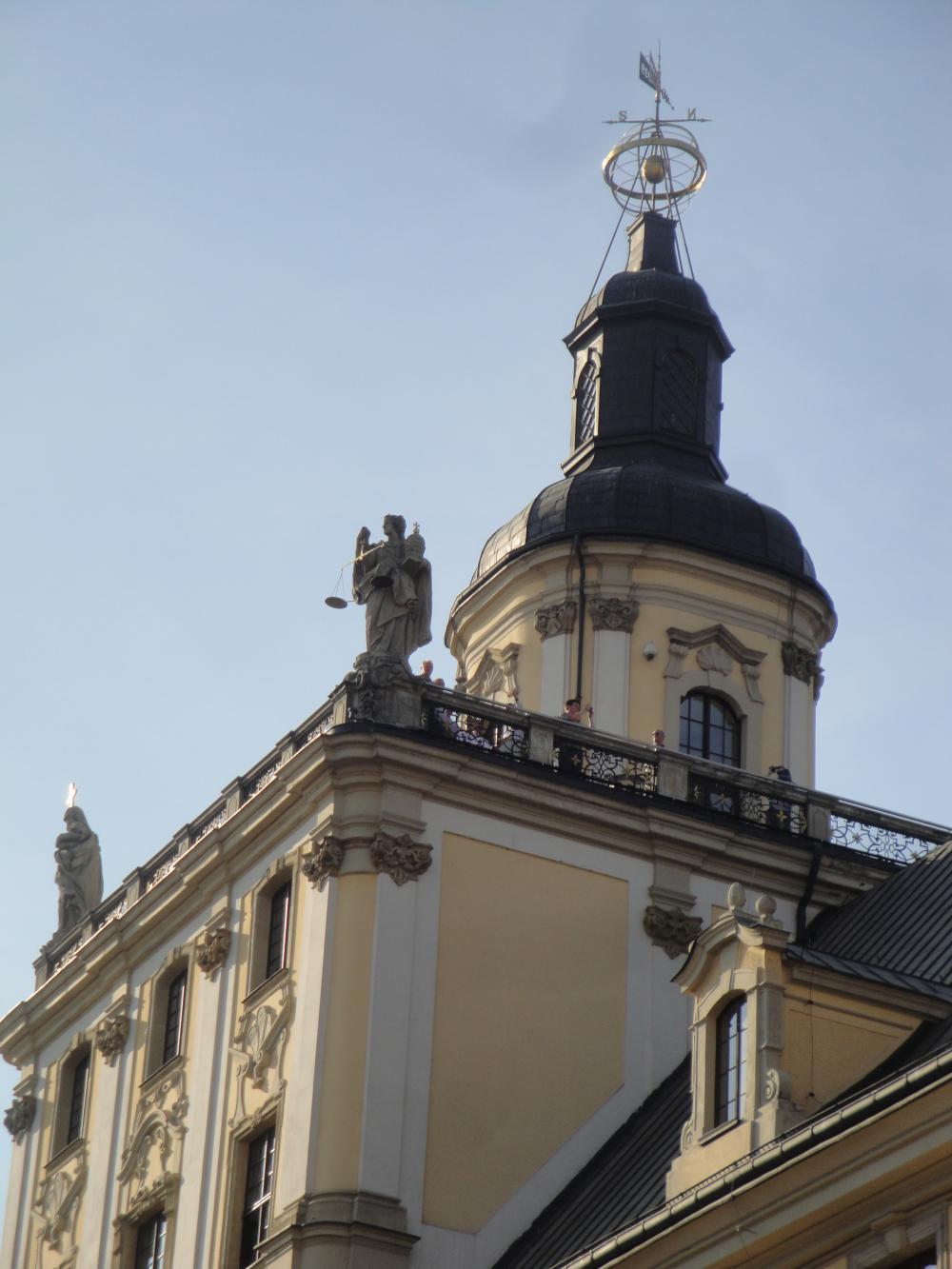
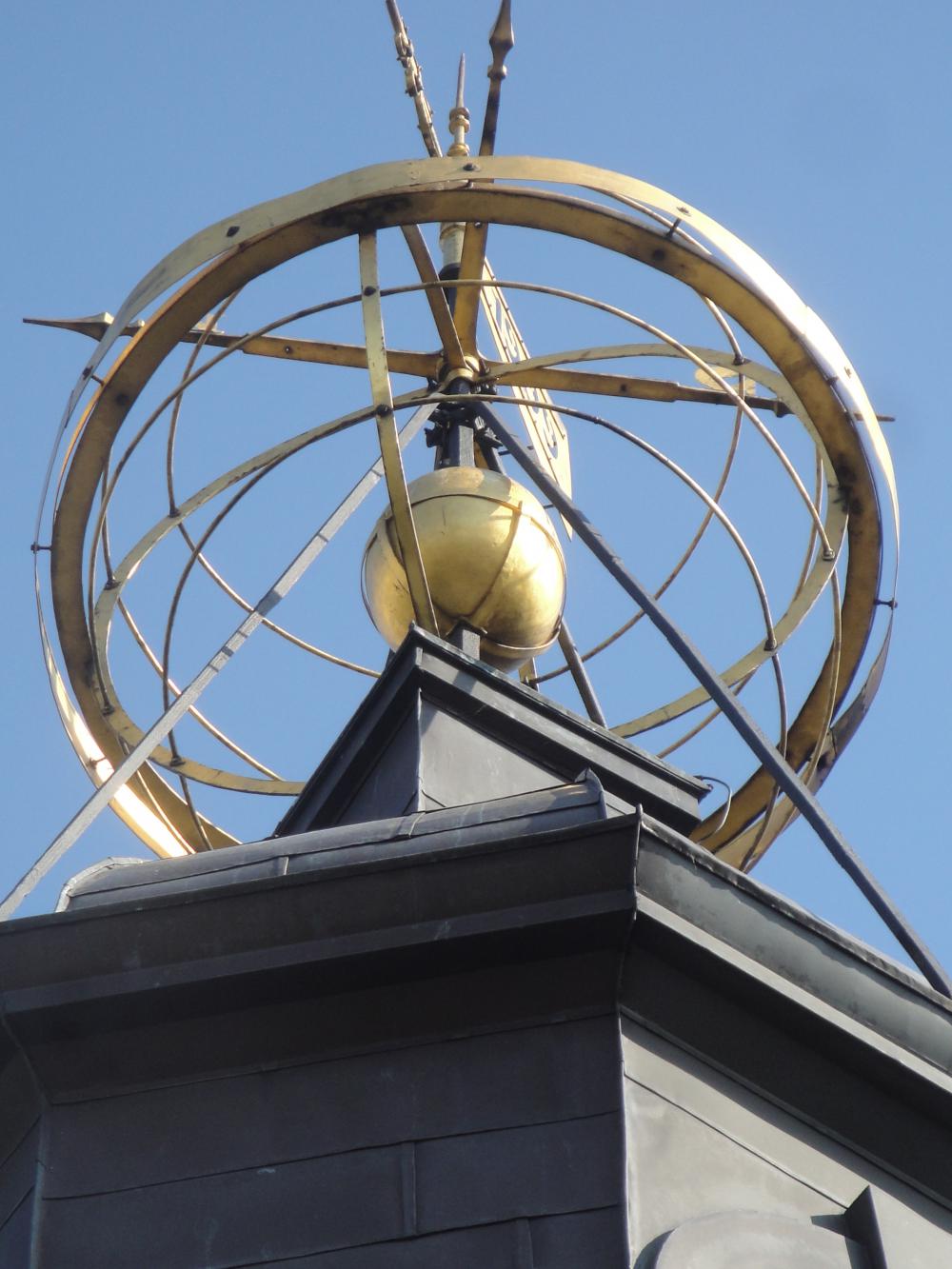
Fig. 2a,b. Mathematical Tower with Armillary Sphere (1791), University of Breslau (Wrocław) (Photo: Gudrun Wolfschmidt)
However, the birth of academic astronomy, the University of Breslau (Wrocław), owes only to Professor Longinus Anton Jungnitz (1764--1831), who in the years 1790--1791 established the Astronomical Observatory in the so-called Mathematical Tower at the top of University’s Main Building, in which he marked a meridian line. Obviously the tower of the Clementinum in Prague was the model for the so-called Mathematical Tower here in Wrocław, because this is, like there, the outstanding component of the entire university building. The rather large terrace around the top floor of the tower was an advantage in Wrocław. The entire construction was carried out by Johann Blasius Peintner (1673--1732).
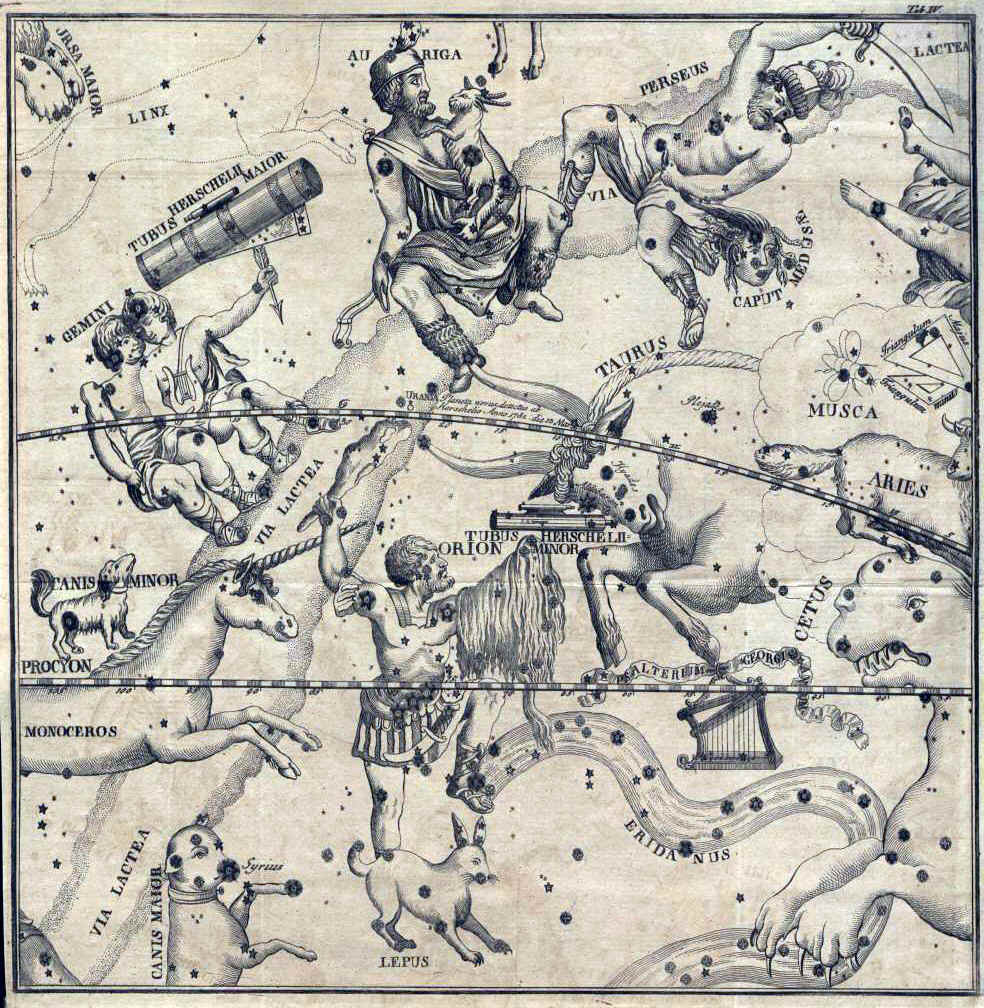
Fig. 3. Maximilian Hell & Longinus Anton Jungnitz: Drey neue Sternbilder, die als ewige Denkmäler am gestirnten Himmel errichtet werden sollten (1789)
Jungnitz’s first published work was Drey neue Sternbilder, die als ewige Denkmäler, am gestirnten Himmel errichtet werden sollten. Das Eine, Seiner Majestät dem Könige von England, Georg III. Die zwey Andern, dem berühmten Herrn Friederich Willhelm Herschel (1789), a translation of Maximilian Hell’s Latin version Monumenta, aere perenniora, inter astra ponenda primum, serenissimo regi angliae Georgio III. alterum viro celebrimo, Friderico, Wilhelmo Herschel (Vienna 1789).
In addition, Jungnitz published meteorological observations, geographical surveying, altitude measurements, description of astronomical observations.
After the secularization of the Jesuit Order and the merger of Wrocław’s Leopoldina with the Frankfurt/Oder Viadrina in 1811, and the establishment of the Royal University of Wrocław, Jungnitz remained a lecturer at the Wrocław university, and even rector from 1815 to 1816.
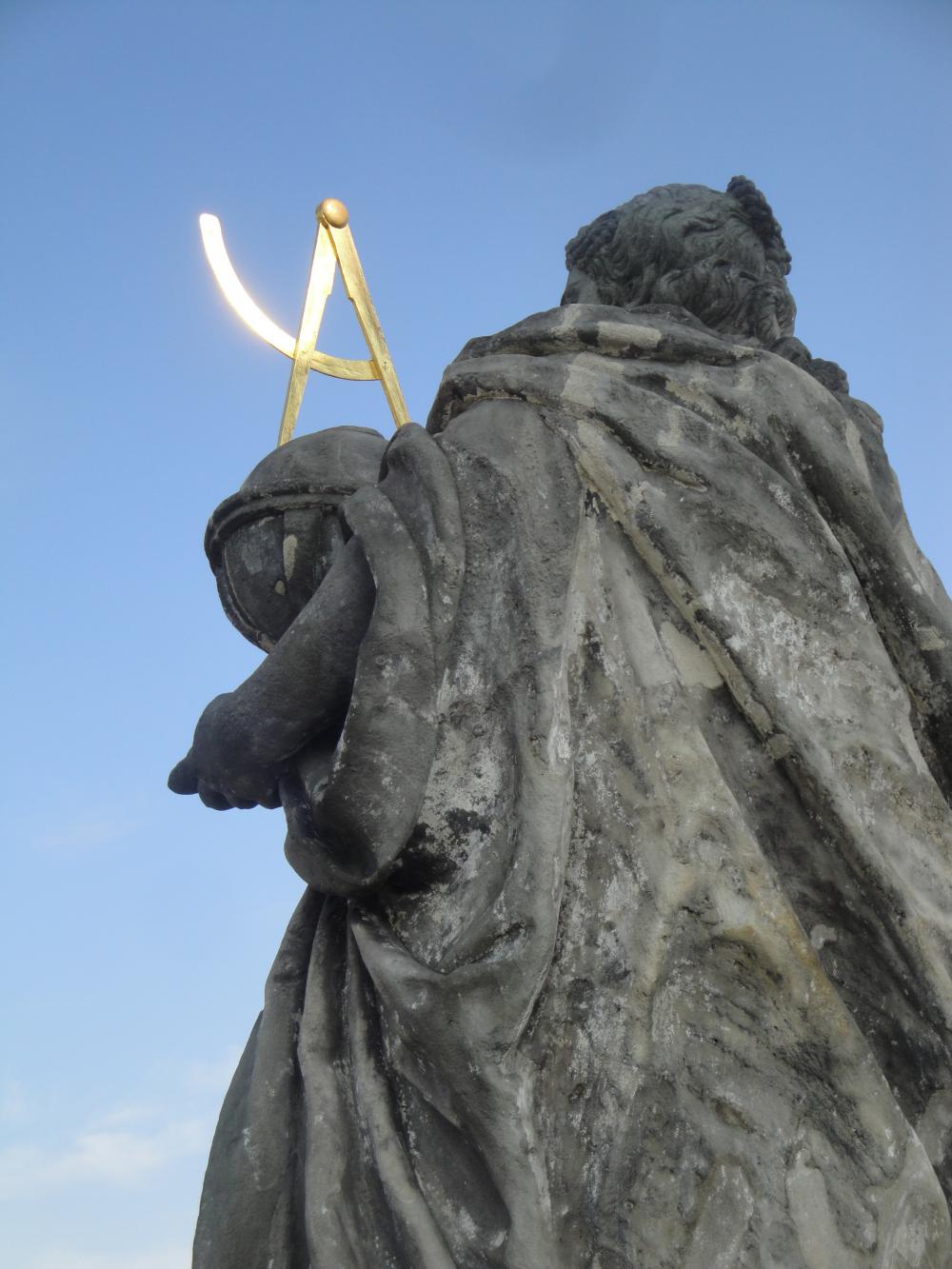
Fig. 4a. Mathematical Tower (1791), Seven Free Arts: Astronomy, Faculty of Philosophy -- in 1822, only 13 of 617 students in Breslau University studied mathematics and sciences at the Faculty of Philosophy (Photo: Gudrun Wolfschmidt)
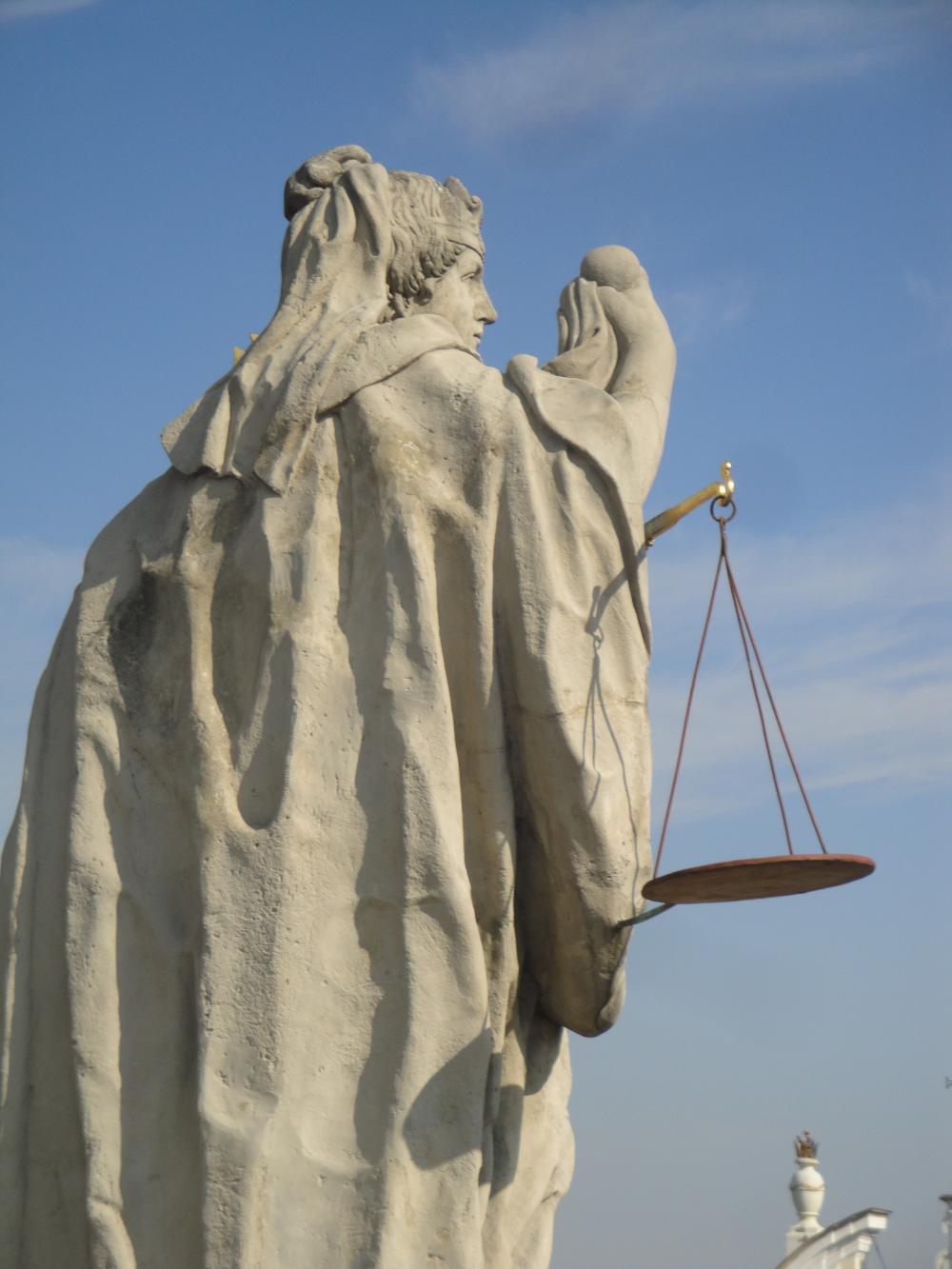
Fig. 4b. Mathematical Tower (1791), Seven Free Arts: Law (Photo: Gudrun Wolfschmidt)
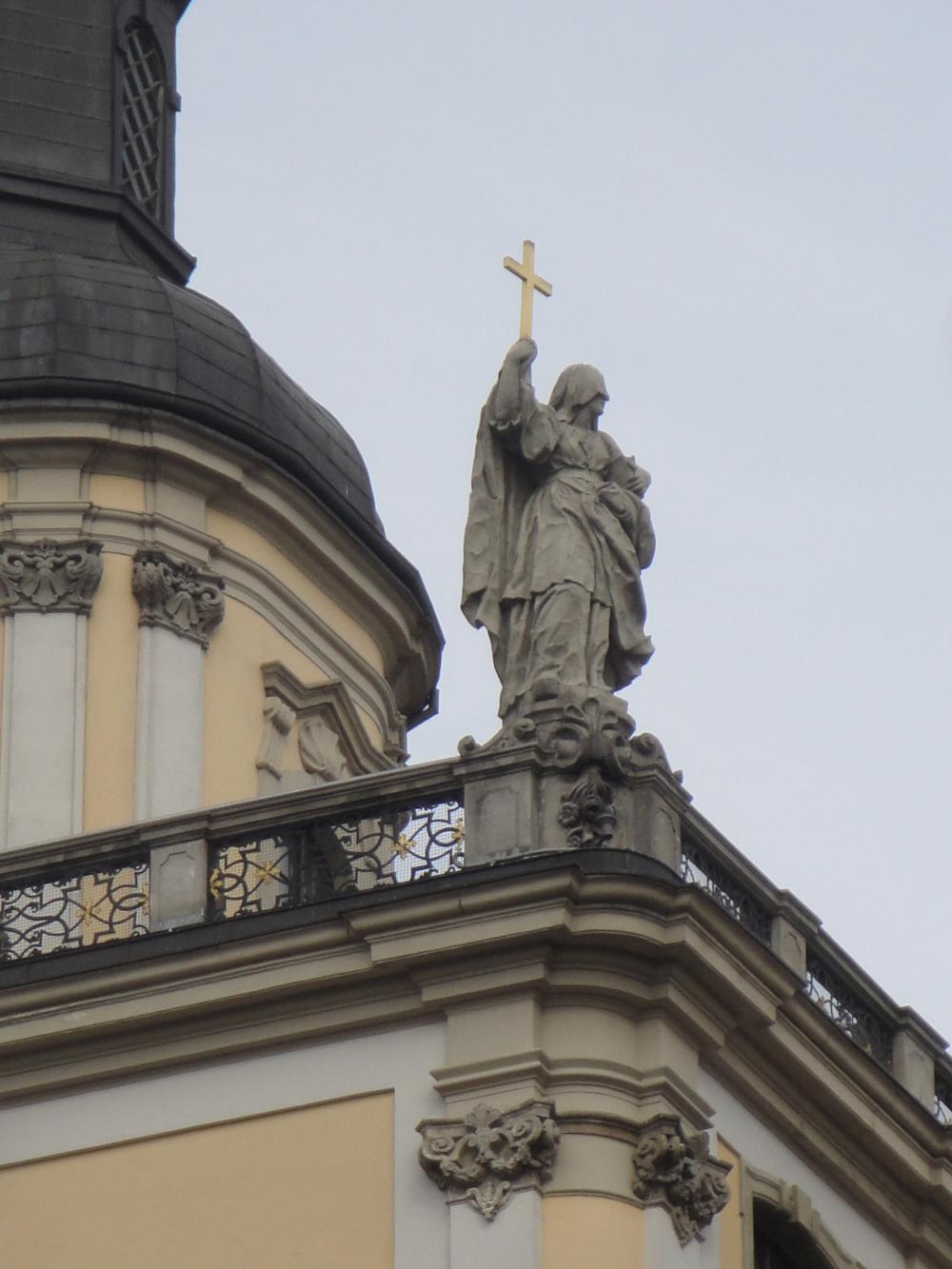
Fig. 4c. Mathematical Tower (1791), Seven Free Arts: Theology (Photo: Gudrun Wolfschmidt)
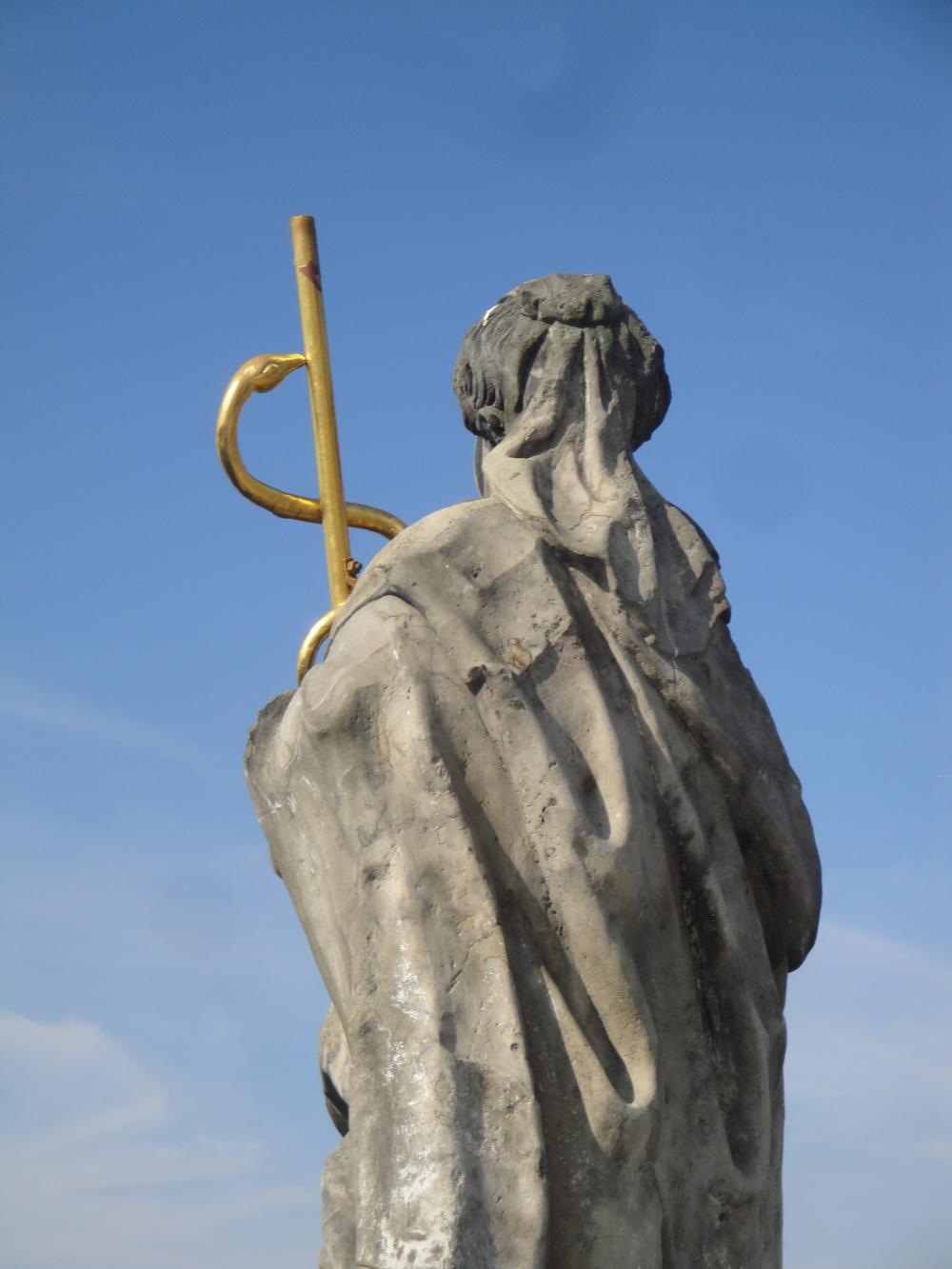
Fig. 4d. Mathematical Tower (1791), Seven Free Arts: Medicine (Photo: Gudrun Wolfschmidt)
Development in the 19th and early 20th centuries
In the following years, the Observatory was managed by:
- Ernst Julius Scholtz (1799--1841), director from 1831 to 1836
- Palm [Palon] Heinrich Ludwig von Bogusławski (1789--1851), professor/director from December 1831/36 to 1851. He participated in the zone catalogue programme (Celestial Atlas -- Berlin Academic Star Charts (1852), Hora XI), initiated by Friedrich Wilhelm Bessel between 1821 and 1833, and discovered the comet (1835); for this discovery, he received the Lalande Prize granted by the Paris Academy of Sciences and a Gold Medal from King Frederick VI of Denmark. In the following years, he published observations of Comet Biela, Comet Encke, and Comet Halley in the Uranus magazine.
- Johann Gottfried Galle (1812--1910), director from 1851 to 1897, was very famous due to his discovery of Neptune in Berlin (1846) -- indicated by mathematical calculations of Urbain LeVerrier (1811--1877), but also for discovering the inner ring of Saturn (1838), later named after him. In Breslau, he observed and calculated the paths of comets, asteroids, planets, and meteors, he also studied the distribution of stars, in addition he was interested in the Earth’s climate, magnetism, and the aurora borealis.
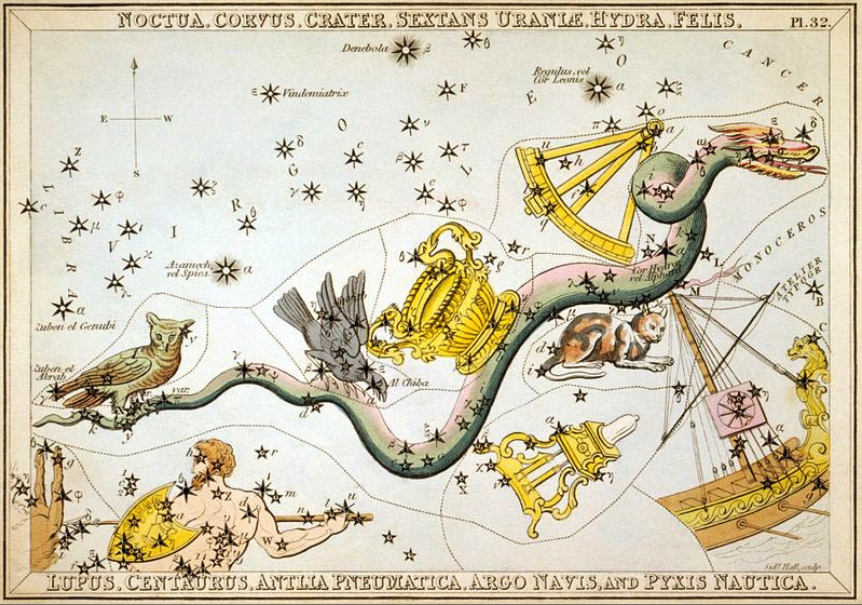
Fig. 5a. Crater constellation in the Southern sky, where Boguslawski discovered his comet in 1835
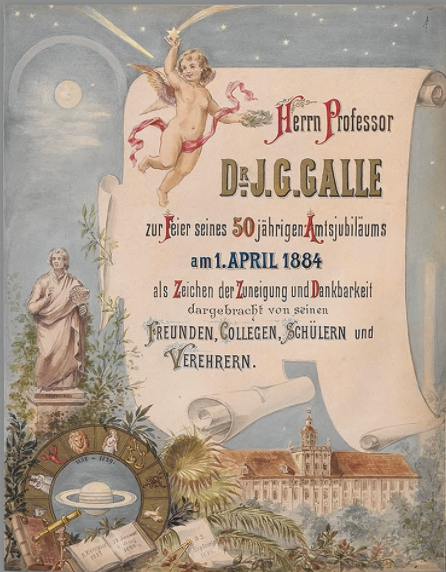
Fig. 5b. Album commemorating 50 years of activity of Galle (1884), (University Museum Wrocław)
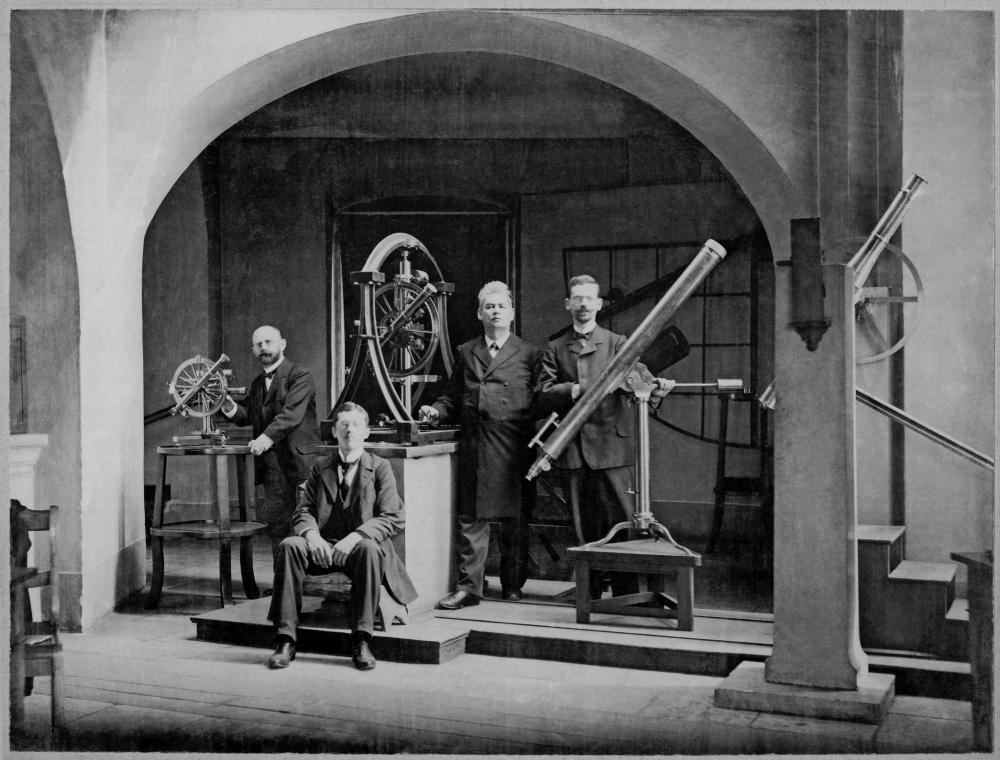
Fig. 5c. Large room of the Wrocław Observatory in the Mathematical Tower: Dollond Transit instrument (right), Repeating Circle in an iron frame (middle), Reichenbach, Utzschneider & Liebherr of Munich, Universal Instrument (left), Utzschneider & Liebherr of Munich, Mural Quadrant (in the background), (courtesy of J. Włodarczyk, 2017)
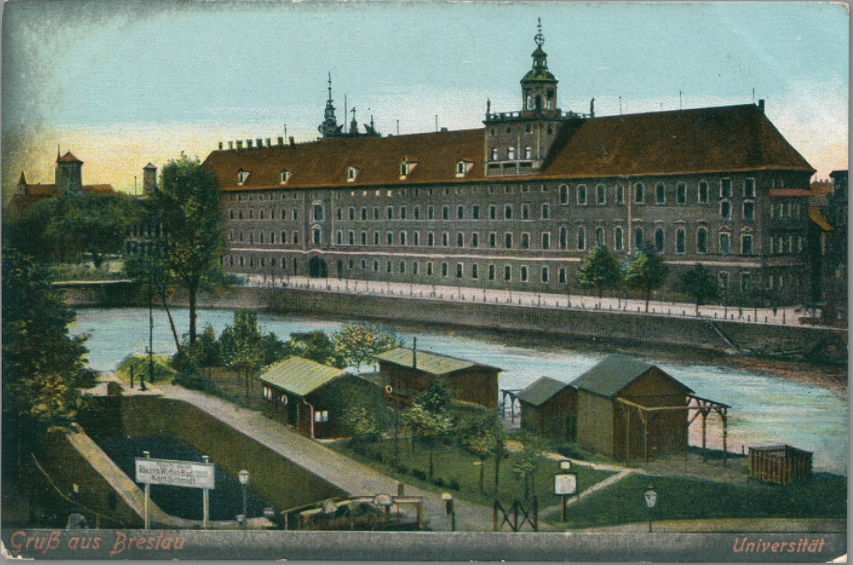
Fig. 5d. Pavilions for the instruments on Śluz Island, in the foreground the lock, behind the Oder river the University building with the Mathematical Tower (University Museum Wrocław)
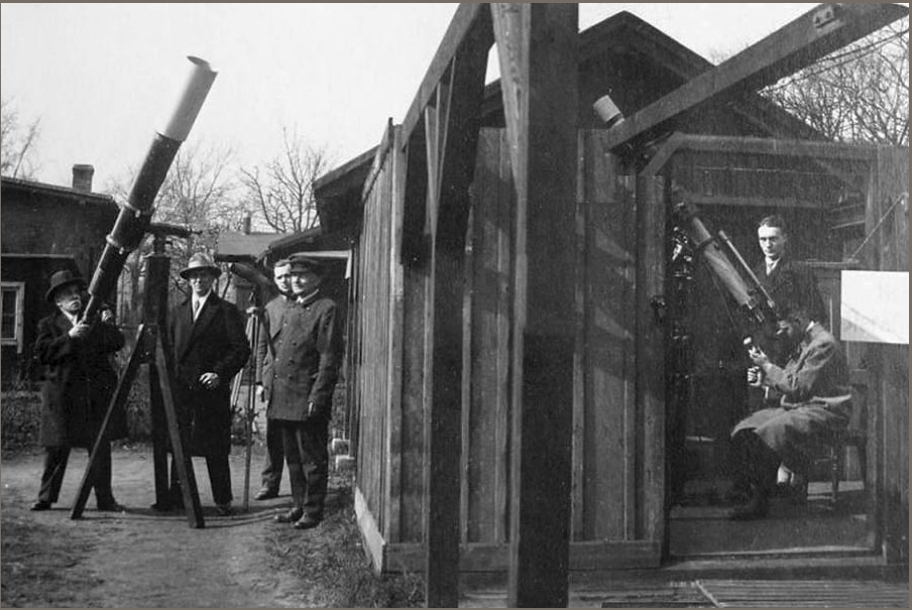
Fig. 5d. Astronomers observing on Śluz Island, 1920s (University Museum Wrocław)
- Julius Heinrich Georg Franz (1847--1913), director 1897, had observed the Transit of Venus on December 6, 1882, in South Carolina. Franz is best known for his observations of the lunar surface -- in cooperation with the lunar surface research programme implemented at the Lick Observatory, based on photographic plates.
- Alexander Friedrich Karl Wilkens (1881--1969), previously working in Göttingen, Vienna, Heidelberg, Hamburg and Kiel, became the director of the Astronomical Observatory in 1916, and made plans for a new observatory. After WWI in 1921, the first instruments were moved, first to a meridian pavilion.
In 1927, a new observatory was built on the eastern border of the city, see Wrocław Observatory.
History - InfoTheme: Astronomy from the Renaissance to the mid-twentieth century
Entity: 176
Subentity: 1
Version: 13
Status: PUB
Date: 2022-04-24 00:04:19
Author(s): Gudrun Wolfschmidt
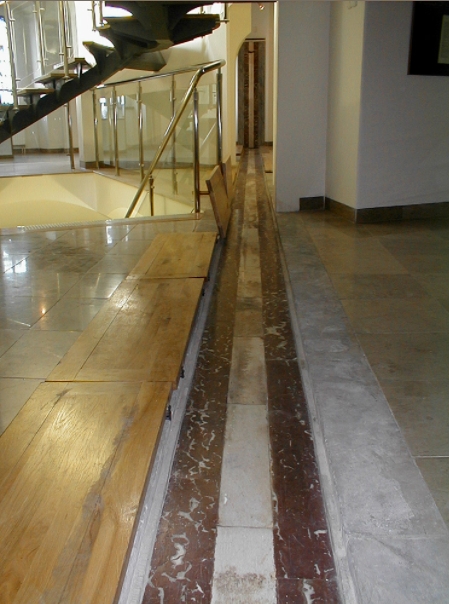
Fig. 6a. Meridian line in Breslau Observatory, Longinus Anton Jungnitz (1791), (University Museum Wrocław)
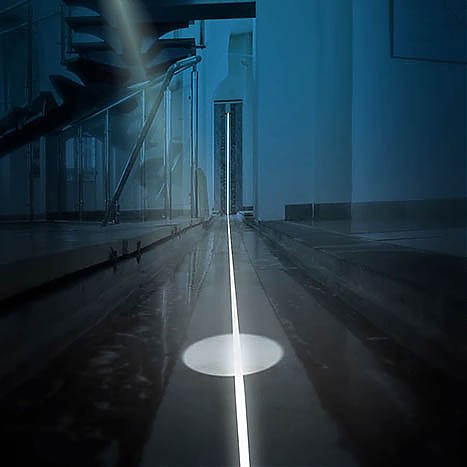
Fig. 6b. Meridian line in Breslau Observatory, Longinus Anton Jungnitz (1791), (University Museum Wrocław)
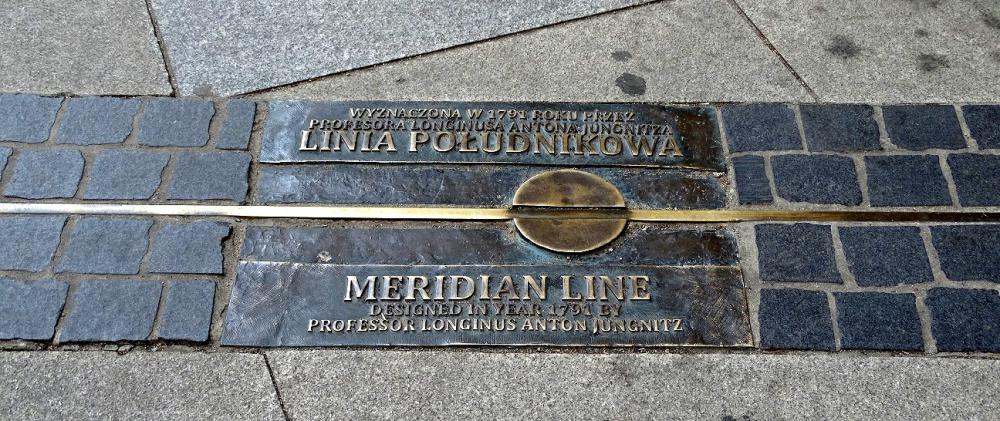
Fig. 6c. Meridian line in the pavement in Breslau/Wrocław, leading from Mathematical Tower to University square (Wikimapia)
Instruments of Longinus Anton Jungnitz for astrometry
With small instruments at its disposal, the Observatory specialized in those years in geodetic astronomy, meteorology, observations of comets and meteors, photometry of planets and asteroids, and the preparation of celestial maps.
- Pendulum astronomical clock, made by Brockbank of London (1806), acquired by Jungnitz
- Mural Quadrant (1812)
- Portable transit circle instrument
- Borda circle
- Small Reflecting Telescope
- Collection of measuring, calculating instrument, and metrological instruments: Sector, reduction compass or proportional dividers (calculating instrument), graphometer, theodolites and levels, mathematical tool kit, boards for teaching geometry,
- Collection of astronomical instruments: Astrolabe, Armillary sphere, triquetrum (brass), celestial globe, Weigel celestial globe, Jacob’s staff, sextant
- Sundials: 17th-century Dieppe ivory diptych compass sundial, equatorial sundials, horizontal sundials, ring sundial, Universal equinoctial ring sundial, Cannon sundial, Le Roy-type horizontal/inclining sundial, Le Roy-type horizontal/inclining sundial, with additional moondial function, Heliochronometers, Horizontal garden sundials, portable horizontal sundial with compass for tropical regions, horizontal magnetic sundial for tropical regions, portable horizontal sundials with compass for northern regions, Sundials on a cube, Polyhedral sundial, Pillar sundial, Vertical sundial, Horary quadrant, Nuremberg-type diptych sundials, Inclining sundials, Horizontal compass sundial, Horizontal magnetic sundials (Butterfield-type), Dipleidoscope.
- Heliometer (aperture 7.7cm, focal length 113.4cm), made by Fraunhofer of Munich (1817)
- Transit instrument (aperture 7.3cm, focal length 105.3cm), made by Peter Dollond (1730--1821) of London (1821).
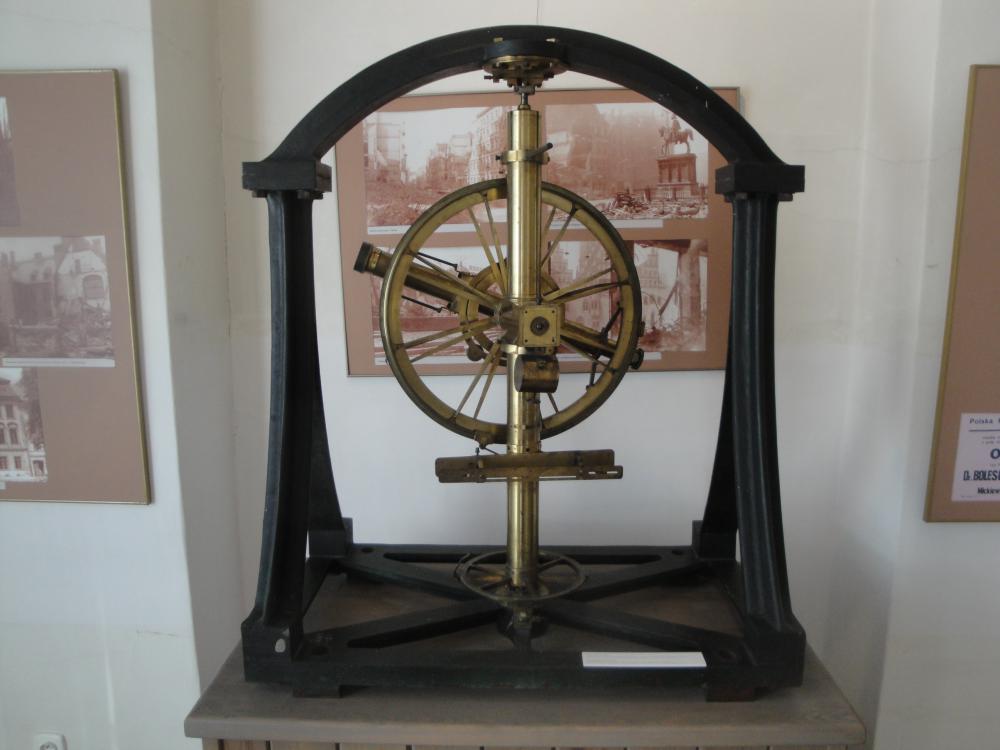
Fig. 7a. Mathematical Tower, Repeating Circle in an iron frame, Reichenbach, Utzschneider & Liebherr of Munich (Photo: Gudrun Wolfschmidt)
Instruments acquired by Bogusławski
- Universal instrument (diameter of both circles 32.4cm), made by Utzschneider & Liebherr (1833)
- Repeating Circle (Theodolite) in an iron frame (diameter of the vertical circle 48.6cm, diameter of the horizontal circle 21.6cm), Reichenbach, Utzschneider & Liebherr of Munich (1832).
- 8-inch-Clark-Repsold Refractor (diameter 20.3cm, focal length 2.88m) (1881), purchased from the heirs of the astronomer Friedrich Wilhelm Rudolf Engelmann (1841--1888) of Leipzig, for observing positional visually double stars, asteroids, and comets.
- Transit circle (lens of 8.9cm diameter), made by Carl Bamberg of Berlin (1883), now in the Nicolaus Copernicus Museum in Frombork
- Refractor, made by Reinfelder of Munich, Repsold of Hamburg, bought for the Observatory in Bialków by Leo Wuzikowski in 1883, now in the Nicolaus Copernicus Museum in Frombork
These instruments, including the Fraunhofer heliometer were installed in a pavilion on the Śluz Island.
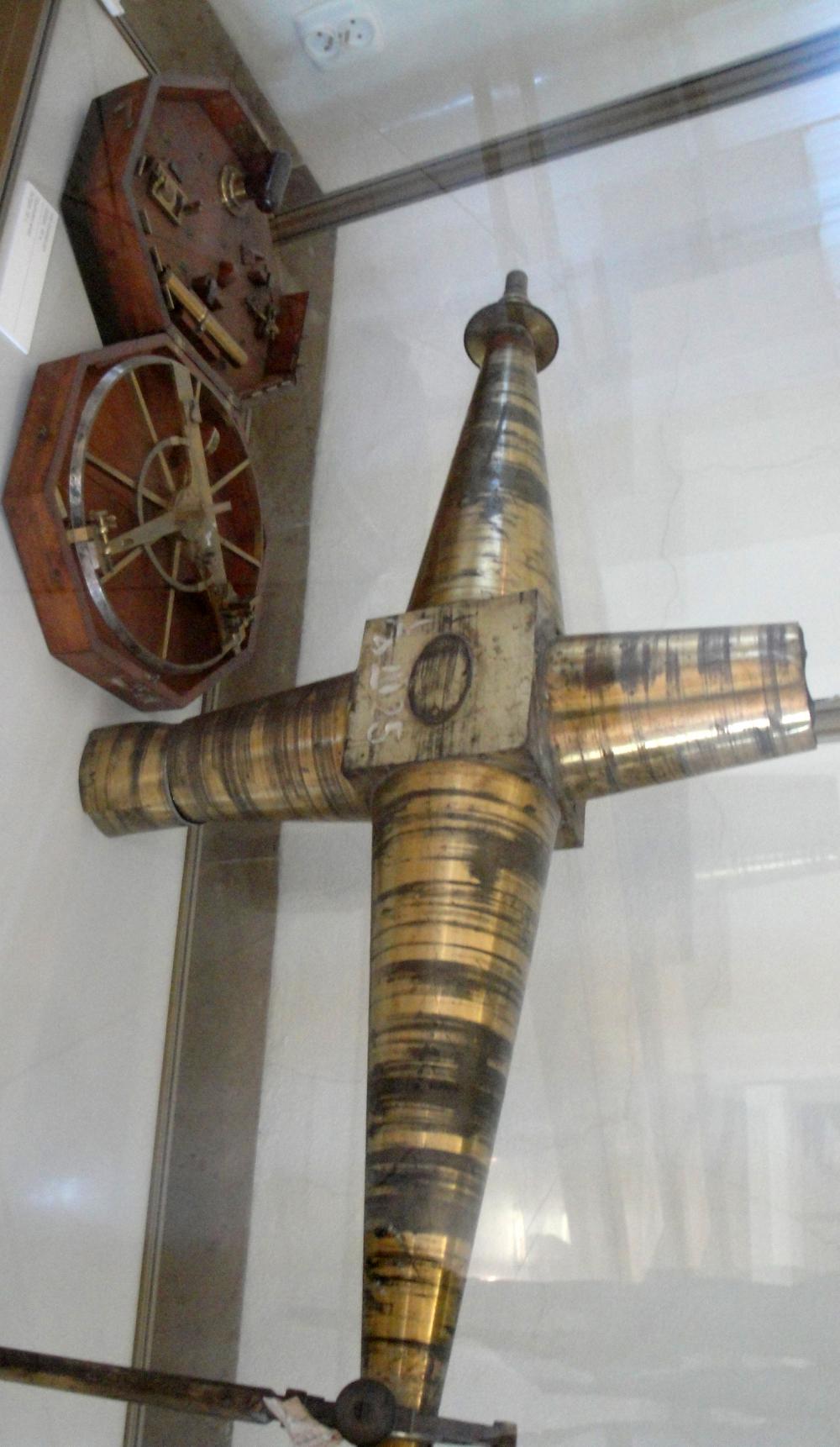
Fig. 7b. Mathematical Tower, Transit instrument, Peter Dollond of London (1821) (Photo: Gudrun Wolfschmidt)
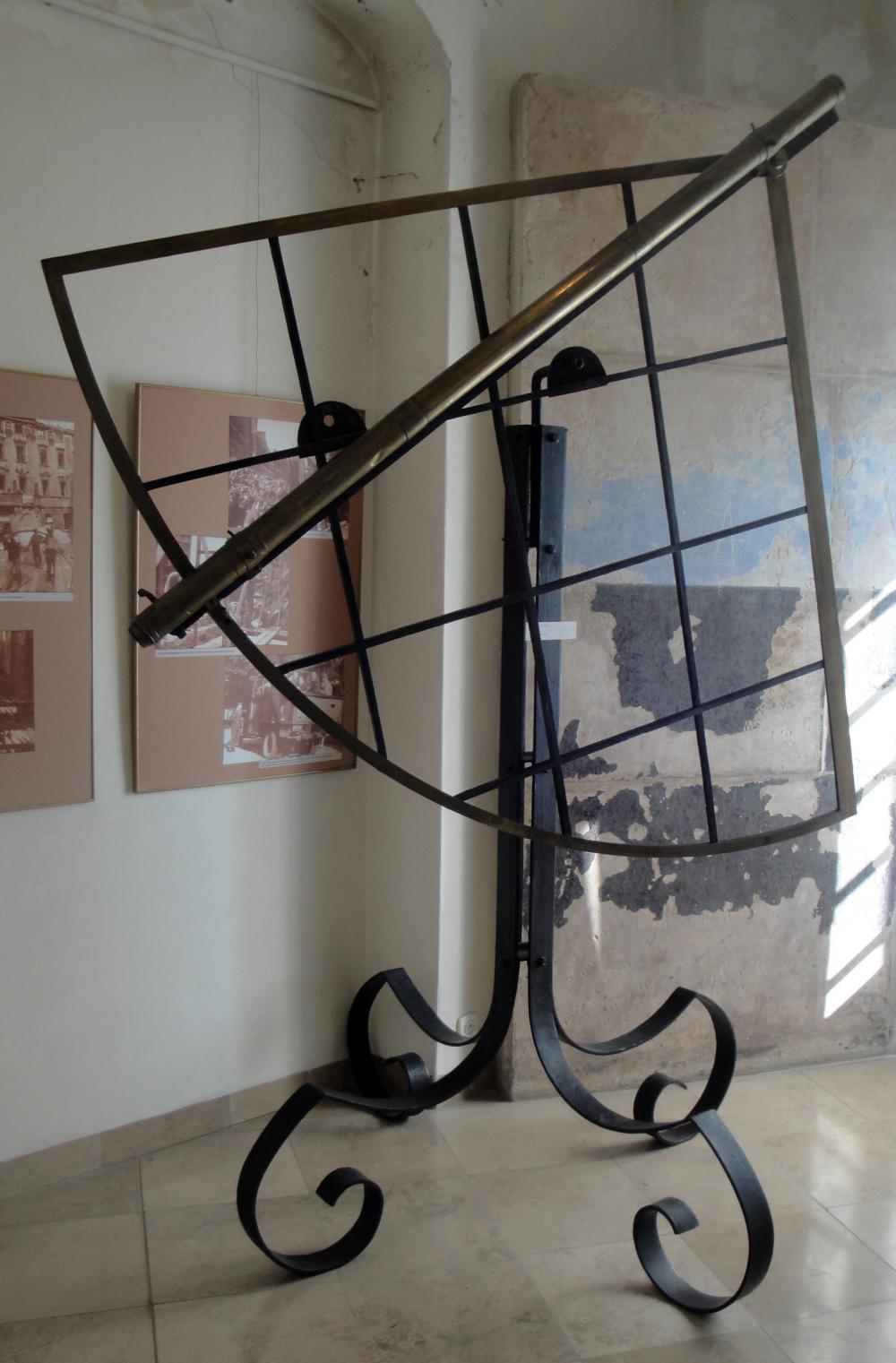
Fig. 7c. Mathematical Tower, Mural Quadrant (1812), (Photo: Gudrun Wolfschmidt)
State of preservation - InfoTheme: Astronomy from the Renaissance to the mid-twentieth century
Entity: 176
Subentity: 1
Version: 5
Status: PUB
Date: 2022-04-24 00:08:09
Author(s): Gudrun Wolfschmidt

Fig. 8a. Mathematical Tower, University of Breslau (Wrocław) (Photo: Gudrun Wolfschmidt)
The Mathematical Tower is in good condition, but unfortunately the gnomon hole of the meridian line, constructed by Longinus Anton Jungnitz in 1791, has not been preserved.
Comparison with related/similar sites - InfoTheme: Astronomy from the Renaissance to the mid-twentieth century
Entity: 176
Subentity: 1
Version: 4
Status: PUB
Date: 2022-04-24 00:05:34
Author(s): Gudrun Wolfschmidt
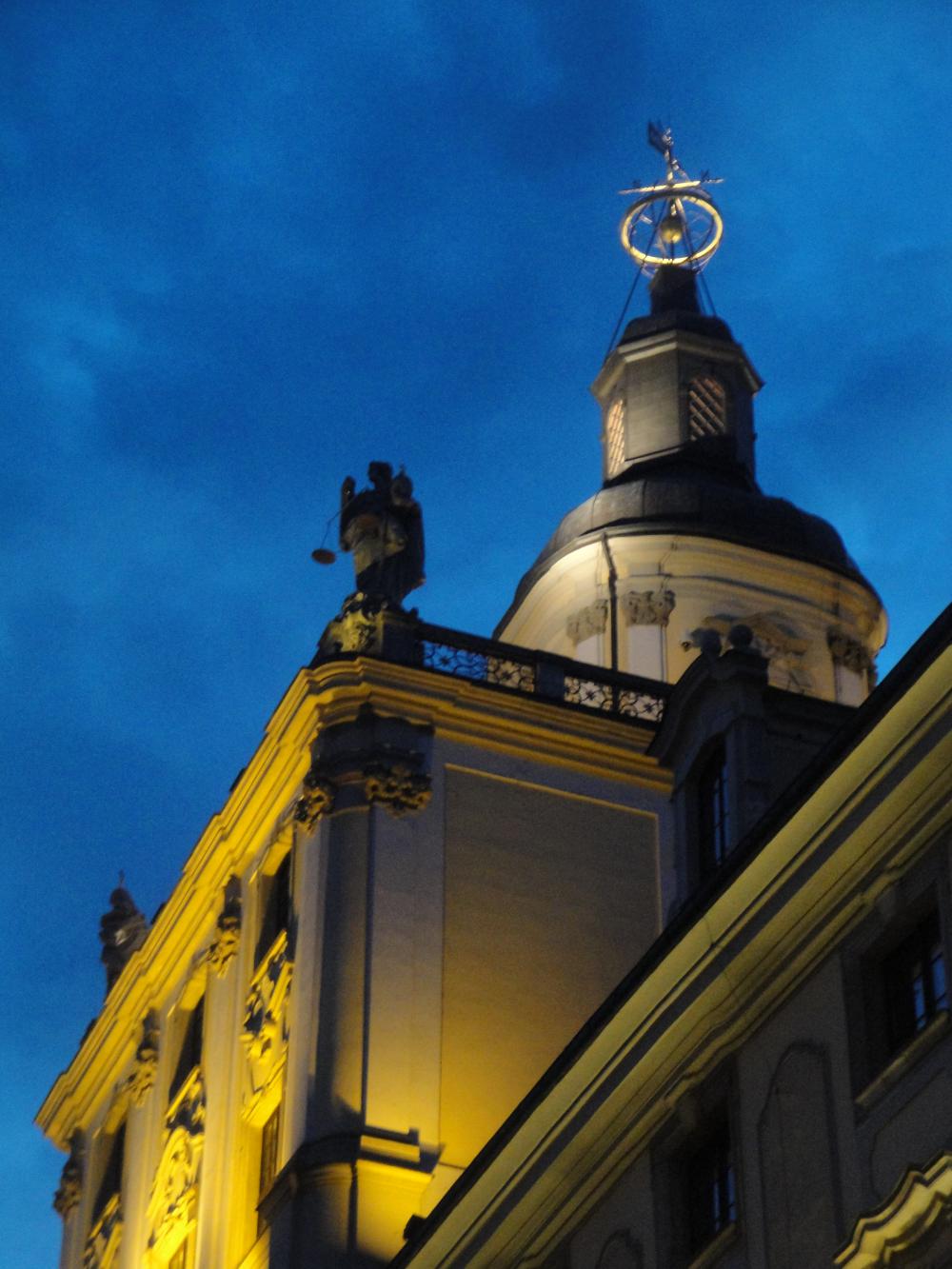
Fig. 8b. Mathematical Tower, University of Breslau (Wrocław) (Photo: Gudrun Wolfschmidt)
Baroque Mathematical Towers: the Mathematical Tower of the University Breslau / Wrocław (1791) is comparable to the following tower observatories:
Clementinum Prague (1722), Zwehrenturm in Kassel (1710), Specola - Bologna Observatory (1712), Old Vienna Academy Observatory -- tower on the top (1755), Osservatorio Astronomico di Brera of the Jesuits in Milano (1762), Padova (Padua) Observatory (1767), Mannheim Observatory
Very large tower observatories are:
Kremsmünster, Austria (1749), and Bogotá Observatory, Columbia (1803).
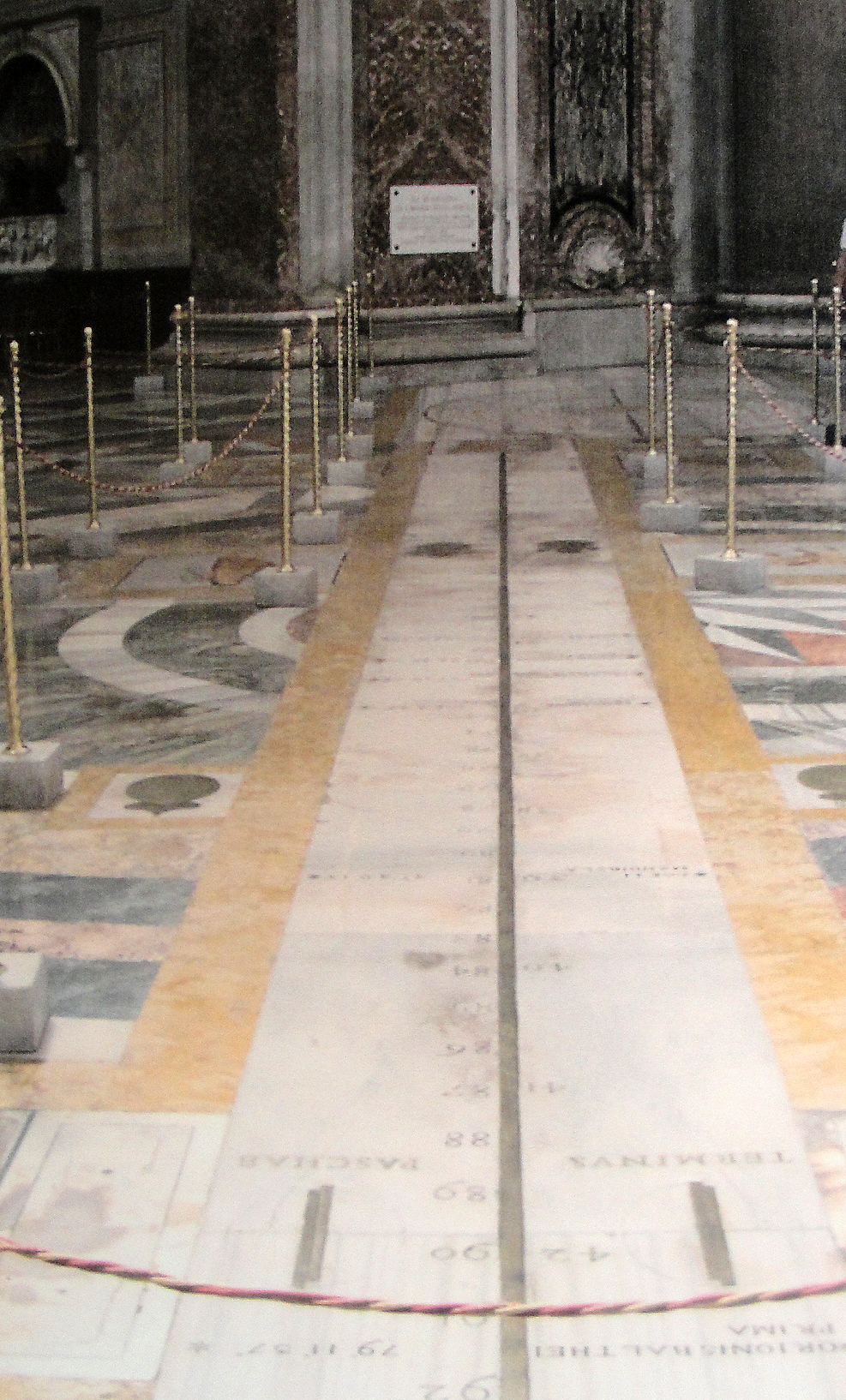
Fig. 9a. Meridian line in Santa Maria degli Angeli in Rome, because I have no good photo of the Meridian line in the Mathematical Tower in Breslau, Longinus Anton Jungnitz (1791), (Photo: Gudrun Wolfschmidt)
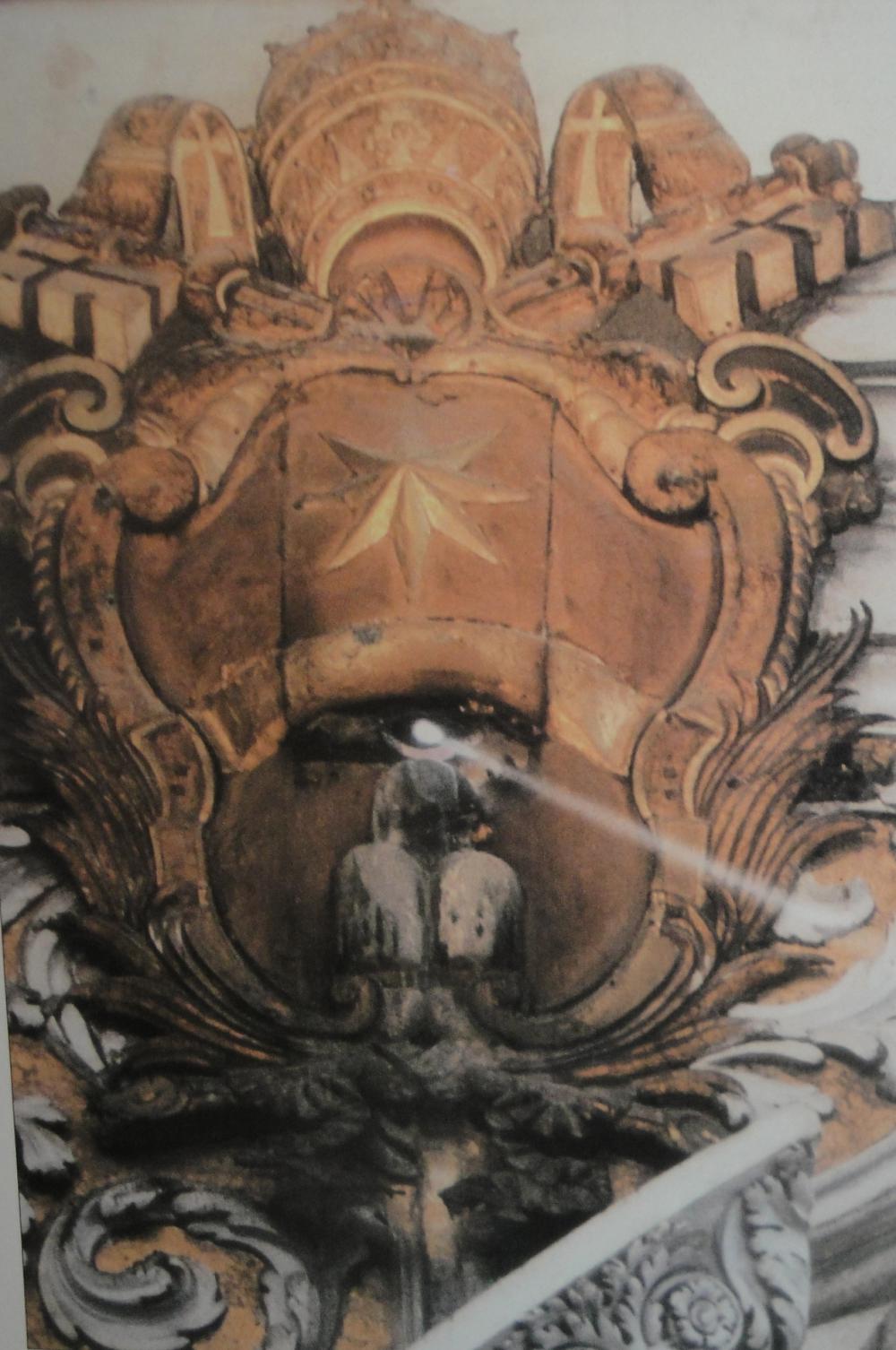
Fig. 9b. Meridian gnomon sun hole in Santa Maria degli Angeli in Rome (Bianchini: De nummo, 1703), (as compatison for Breslau/Wrocław) (Photo: Gudrun Wolfschmidt)
Meridian lines can be found mainly in churches:
Cathedrals as Solar Observatories -- "beauty and utility"
"Between 1650 and 1750, four Catholic churches were the best solar observatories in the world. Built to fix an unquestionable date for Easter, they also housed instruments that threw light on the disputed geometry of the solar system, and so, within sight of the altar, subverted Church doctrine about the order of the universe."
John L. Heilbron: The Sun in the Church: Cathedrals as Solar Observatories Cambridge, Mass.: Harvard University Press 1999.
- Tower of the Winds, meridian room in Vatican Observatory (1575/78), under the sponsorship of Pope Gregory XIII., Ignazio Danti (1536--1586)
- San Petronio Bologna (67m), (first meridian line: Egnazio Danti, 1575), Giovanni Domenico [Jean Dominique] Cassini (1625--1712) (1655)
- Santa Maria degli Angeli e dei Martiri in Rome, Francesco Bianchini (1702)
- St. Sulpice, Paris, Henry Sully (1743)
- Cathedral of Santa Maria del Fiore in Florence (Filippo Brunelleschi), Toscanelli and Alberti (1468/75)
- Duomo of Milan (1786)
- Duomo of Palermo
- Cathedral of Bergamo
- Santa Maria Novella in Florence
- Cathedral of Catania
- Bourges Cathedral
Fossombrone Cathedral - Cathedral of St. Michael and St. Gudula, Brussels, Belgium
- Cloisters of England’s Durham Cathedral
Meridian lines are also in some Italian observatories, museums and private buildings (Palazzo):
- Padua Observatory
- Bologna Observatory
- Paris Observatory, France
- Breslau, Mathematical Tower, Poland
- Prague, Clementinum, Czech Republic
- Royal Observatory, Greenwich
- National Archaeological Museum, Naples
- Palazzo della Ragione, Padua
- Bramshill House, in Bramshill, northeast Hampshire, England (17th century)
- Bromley House Library, Nottingham
- Ramsgate Maritime Museum
Threats or potential threats - InfoTheme: Astronomy from the Renaissance to the mid-twentieth century
Entity: 176
Subentity: 1
Version: 2
Status: PUB
Date: 2021-03-28 22:25:30
Author(s): Gudrun Wolfschmidt
no threats
Present use - InfoTheme: Astronomy from the Renaissance to the mid-twentieth century
Entity: 176
Subentity: 1
Version: 5
Status: PUB
Date: 2022-04-24 00:09:51
Author(s): Gudrun Wolfschmidt
Museum for Astronomy of the University of Breslau (Wrocław).
In the Leopoldina Hall there are impressive Baroque wall paintings.
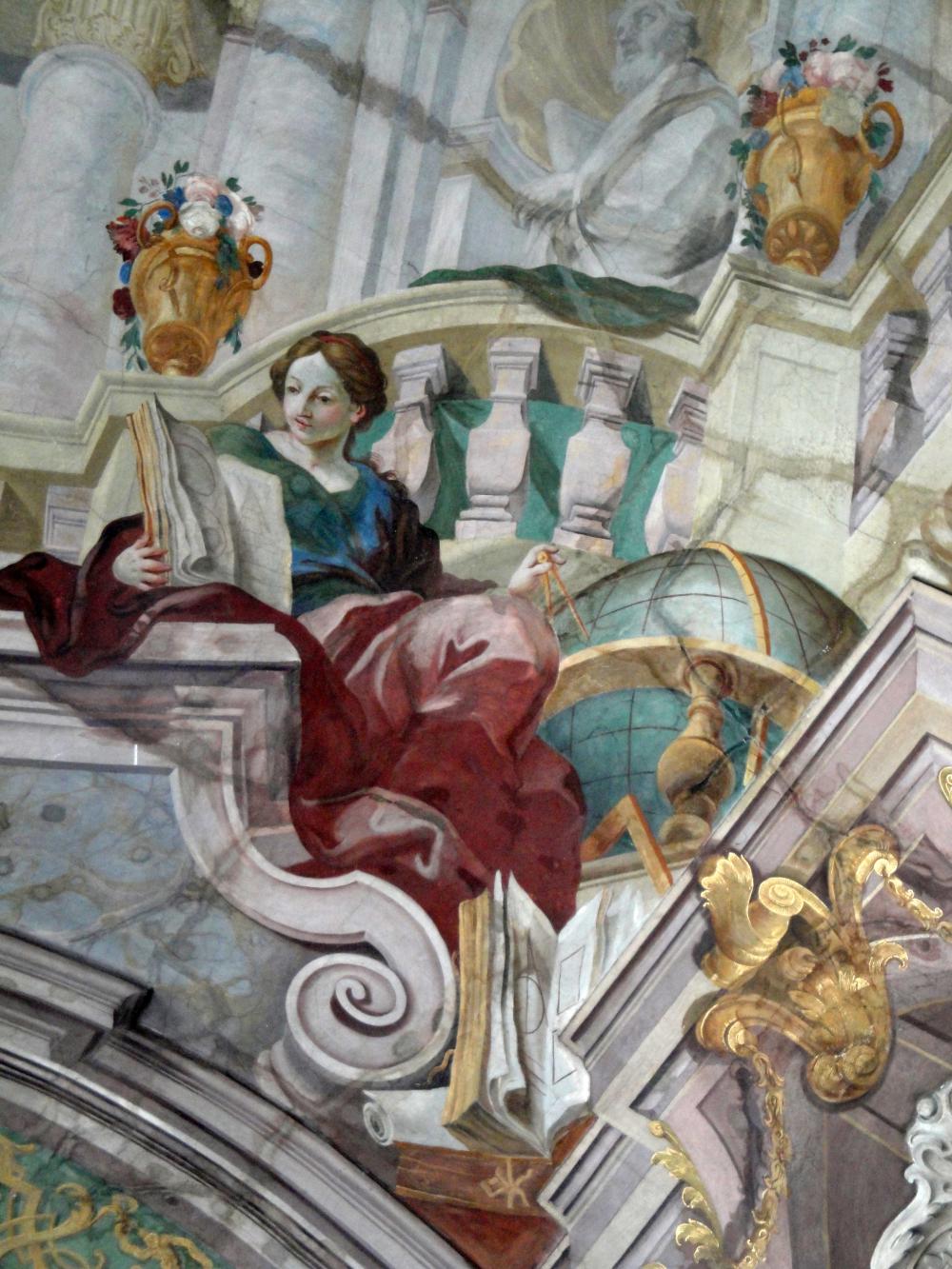
Fig. 10a. University of Breslau (Wrocław), Baroque wall paintings (Photo: Gudrun Wolfschmidt)
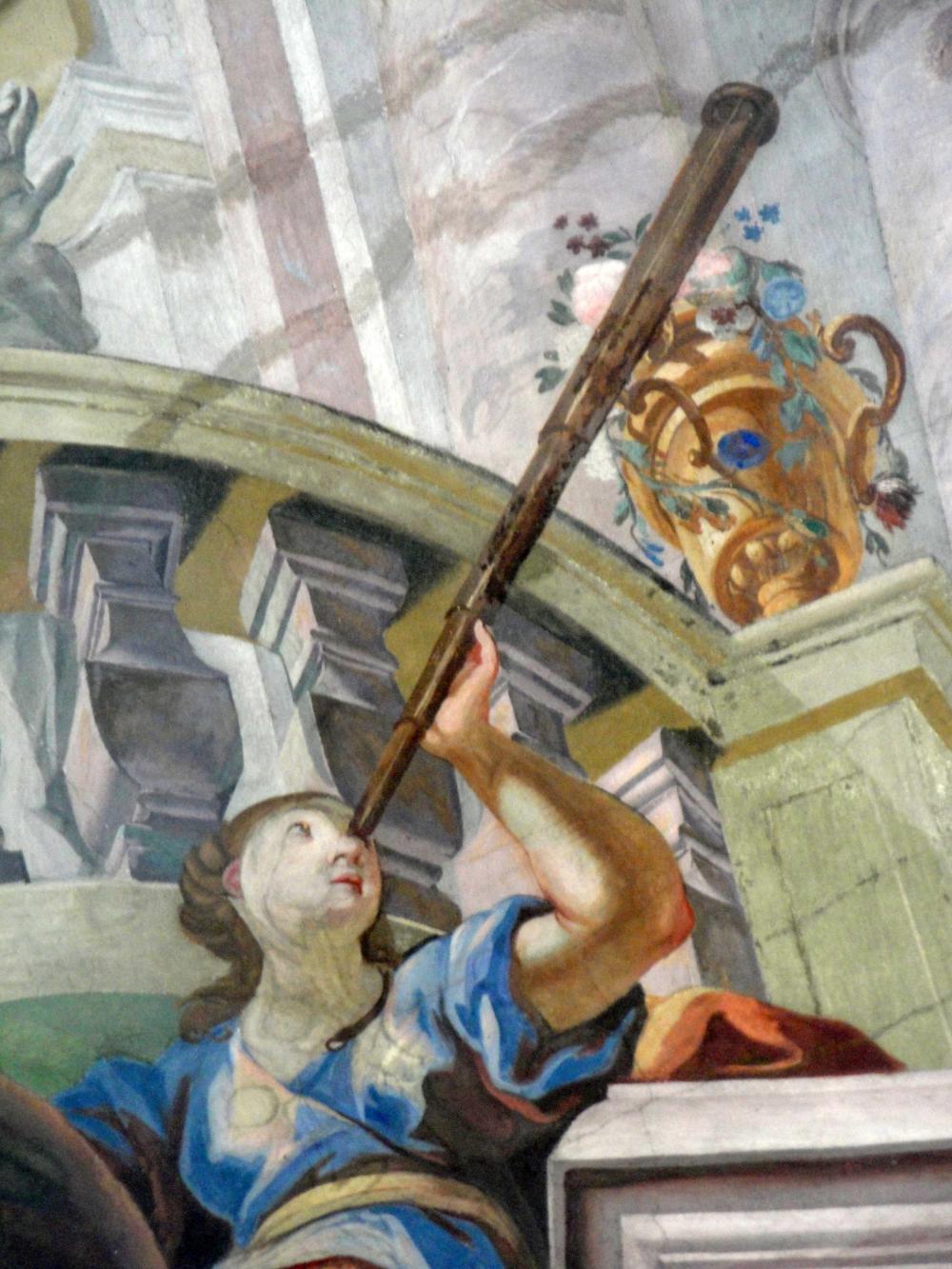
Fig. 10b. University of Breslau (Wrocław), Baroque wall paintings (Photo: Gudrun Wolfschmidt)
Astronomical relevance today - InfoTheme: Astronomy from the Renaissance to the mid-twentieth century
Entity: 176
Subentity: 1
Version: 3
Status: PUB
Date: 2022-04-24 00:10:39
Author(s): Gudrun Wolfschmidt
The University of Breslau (Wrocław) with the Mathematical Tower is still in use --
as museum and for public outreach, but not for modern astronomy.
References
Bibliography (books and published articles) - InfoTheme: Astronomy from the Renaissance to the mid-twentieth century
Entity: 176
Subentity: 1
Version: 10
Status: PUB
Date: 2022-04-24 00:12:59
Author(s): Gudrun Wolfschmidt
- Brachner, Alto: German Nineteenth-Century Scientific Instrument Makers. In: Nineteenth-Century Scientific Instruments and their Makers. Red. and ed. by Peter R. de Clercq. Leiden, Amsterdam 1985.
- Heilbron, John L.: The Sun in the Church: Cathedrals as Solar Observatories. Cambridge, Mass.: Harvard University Press 1999.
- Harasimowicz, Jan (ed.): Ksiega Pamiatkowa Jubileuszu 200-lecia utworzenia Panstwowego Uniwersytetu we Wrocławiu. Materialy Miedzynarodowej Konferencji Naukowej, Wrocław 4-7 pazdziernika 2011 r. Tom IV, Uniwersytet Wrocławski w kulturze europejskiej XIX i XX wieku. (Proceedings of the International Scientific Conference in Wrocław University, Poland. In the European Culture of the 19th and 20th c. In Honour the 200th Anniversary of the Foundation of State Wrocław University, Wrocław, 4-7 October 2011). Wrocław: Wydawnictwo Uniwersytet Wrocławskiego 2015.
- Jungnitz, Longinus Anton: Ueber die neue Universitäts-Sternwarte zu Breslau. In: Schlesische Provinzialblätter (1792).
- Müller, Peter: Breslau 1728--1733. In: Sternwarten in Bildern. Berlin, Heidelberg: Springer 1992. doi
- Udías, Agustín: Searching the Heavens and the Earth: The History of Jesuit Observatories. Dordrecht: Kluwer Academic (Springer Science & Business Media) 2013.
- Udías, Agustín: Jesuit Contribution to Science: A Historiographical Essay. Dordrecht: Brill 2014.
- Udías, Agustín: Jesuit contribution to science, 1814--2000. A Historiographical Essay. In: Journal of Jesuit Studies 1 (2014), no 1, p. 88-104.
- Udías, Agustin: Jesuits and the Natural Sciences in Modern Times, 1814--2014. In: Jesuits and the Natural Sciences in Modern Times, 1814--2014. Leiden: Brill (Brill’s Research Perspectives in Jesuit Studies) 2019, p. 1--104 (doi.org/10.1163/9789004394902_002).
- Wolfschmidt, Gudrun: Kirchhoff and Bunsen, influential professors of Breslau (Wrocław) University, and their contribution in the development of spectral analysis. In: Ksiega Pamiatkowa Jubileuszu 200-lecia utworzenia Panstwowego Uniwersytetu we Wrocławiu. Materialy Miedzynarodowej Konferencji Naukowej, Wrocław 4-7 pazdziernika 2011 r. Tom IV, Uniwersytet Wrocławski w kulturze europejskiej XIX i XX wieku. (Proceedings of the International Scientific Conference in Wrocław University, Poland. In the European Culture of the 19th and 20th c. In Honour the 200th Anniversary of the Foundation of State Wrocław University, Wrocław, 4-7 October 2011). Ed. by Jan Harasimowicz. Wrocław: Wydawnictwo Uniwersytet Wrocławskiego 2015, p. 663-670.
- Włodarczyk, Jarosław: Astronomia [in Wrocław]. In: Harasimowicz (ed.) 2015, p. 398-411. ResearchGate (2017).
Links to external sites - InfoTheme: Astronomy from the Renaissance to the mid-twentieth century
Entity: 176
Subentity: 1
Version: 5
Status: PUB
Date: 2022-04-24 00:14:35
Author(s): Gudrun Wolfschmidt
- Astronomical Institute University of Wrocław
- Muzeum Uniwersytetu Wroclawskiego
- Multimedialna BAZA DANYCH, Muzeum Universytetu Wrocławskiego, Astronomia we Wrocławiu (Polish)
- Breslau University, Astronomy in Wrocław
- Breslau University Collections, Astronomy
- Breslau University Collections, Sun dials
- Breslau University Collections, University Chronicle
PrintPrint contents of 'Description' tab
(opens in a new window) Theme
Astronomy from the Renaissance to the mid-twentieth century
Case Study Navigation
- InfoTheme: Astronomy from the Renaissance to the mid-twentieth century
Entity: 176
Subentity: 1
Version: 2
Status: PUB
Date: 2021-03-28 20:54:39
Author(s): Gudrun Wolfschmidt
Mathematical Tower, Main Building of the University Breslau, plac Uniwersytecki 1, 50-137 Wrocław, Poland
See also: Breslau Observatory, Wrocław, Poland (code 547)
Location - InfoTheme: Astronomy from the Renaissance to the mid-twentieth century
Entity: 176
Subentity: 1
Version: 2
Status: PUB
Date: 2021-03-28 20:56:45
Author(s): Gudrun Wolfschmidt
Latitude 51.114141 N, longitude 17.033464 E, Elevation ??? m above mean sea level.
IAU observatory code - InfoTheme: Astronomy from the Renaissance to the mid-twentieth century
Entity: 176
Subentity: 1
Version: 1
Status: PUB
Date: 2021-03-28 20:50:01
Author(s): Gudrun Wolfschmidt
-
Description of (scientific/cultural/natural) heritage - InfoTheme: Astronomy from the Renaissance to the mid-twentieth century
Entity: 176
Subentity: 1
Version: 8
Status: PUB
Date: 2022-04-24 00:01:45
Author(s): Gudrun Wolfschmidt
Foundation of the Mathematical Tower (1791)

Fig. 1. Mathematical Tower (1791), University of Breslau (Wrocław) (Photo: Gudrun Wolfschmidt)
The University of Breslau (today Wrocław) was originally a Jesuit college, founded in 1702 when Silesia was still owned by the Habsburg emperors. The construction of the baroque university building in Breslau began in 1728 (until 1739) on the Southern bank of the Oder. The Jesuit brother Christoph Tausch made probably the plans for the building because he had already gained experience in Bohemia (Müller 1992).
The Jesuit observatory was founded as an institution in 1732. The professor of mathematics Christoph Heinrich in the years 1702 to 1715 already determined the geographical coordinates of Wrocław, and professors Franz Geissle and Joseph Wache in 1764 conducted observations of the solar eclipse.


Fig. 2a,b. Mathematical Tower with Armillary Sphere (1791), University of Breslau (Wrocław) (Photo: Gudrun Wolfschmidt)
However, the birth of academic astronomy, the University of Breslau (Wrocław), owes only to Professor Longinus Anton Jungnitz (1764--1831), who in the years 1790--1791 established the Astronomical Observatory in the so-called Mathematical Tower at the top of University’s Main Building, in which he marked a meridian line. Obviously the tower of the Clementinum in Prague was the model for the so-called Mathematical Tower here in Wrocław, because this is, like there, the outstanding component of the entire university building. The rather large terrace around the top floor of the tower was an advantage in Wrocław. The entire construction was carried out by Johann Blasius Peintner (1673--1732).

Fig. 3. Maximilian Hell & Longinus Anton Jungnitz: Drey neue Sternbilder, die als ewige Denkmäler am gestirnten Himmel errichtet werden sollten (1789)
Jungnitz’s first published work was Drey neue Sternbilder, die als ewige Denkmäler, am gestirnten Himmel errichtet werden sollten. Das Eine, Seiner Majestät dem Könige von England, Georg III. Die zwey Andern, dem berühmten Herrn Friederich Willhelm Herschel (1789), a translation of Maximilian Hell’s Latin version Monumenta, aere perenniora, inter astra ponenda primum, serenissimo regi angliae Georgio III. alterum viro celebrimo, Friderico, Wilhelmo Herschel (Vienna 1789).
In addition, Jungnitz published meteorological observations, geographical surveying, altitude measurements, description of astronomical observations.
After the secularization of the Jesuit Order and the merger of Wrocław’s Leopoldina with the Frankfurt/Oder Viadrina in 1811, and the establishment of the Royal University of Wrocław, Jungnitz remained a lecturer at the Wrocław university, and even rector from 1815 to 1816.

Fig. 4a. Mathematical Tower (1791), Seven Free Arts: Astronomy, Faculty of Philosophy -- in 1822, only 13 of 617 students in Breslau University studied mathematics and sciences at the Faculty of Philosophy (Photo: Gudrun Wolfschmidt)

Fig. 4b. Mathematical Tower (1791), Seven Free Arts: Law (Photo: Gudrun Wolfschmidt)

Fig. 4c. Mathematical Tower (1791), Seven Free Arts: Theology (Photo: Gudrun Wolfschmidt)

Fig. 4d. Mathematical Tower (1791), Seven Free Arts: Medicine (Photo: Gudrun Wolfschmidt)
Development in the 19th and early 20th centuries
In the following years, the Observatory was managed by:
- Ernst Julius Scholtz (1799--1841), director from 1831 to 1836
- Palm [Palon] Heinrich Ludwig von Bogusławski (1789--1851), professor/director from December 1831/36 to 1851. He participated in the zone catalogue programme (Celestial Atlas -- Berlin Academic Star Charts (1852), Hora XI), initiated by Friedrich Wilhelm Bessel between 1821 and 1833, and discovered the comet (1835); for this discovery, he received the Lalande Prize granted by the Paris Academy of Sciences and a Gold Medal from King Frederick VI of Denmark. In the following years, he published observations of Comet Biela, Comet Encke, and Comet Halley in the Uranus magazine.
- Johann Gottfried Galle (1812--1910), director from 1851 to 1897, was very famous due to his discovery of Neptune in Berlin (1846) -- indicated by mathematical calculations of Urbain LeVerrier (1811--1877), but also for discovering the inner ring of Saturn (1838), later named after him. In Breslau, he observed and calculated the paths of comets, asteroids, planets, and meteors, he also studied the distribution of stars, in addition he was interested in the Earth’s climate, magnetism, and the aurora borealis.

Fig. 5a. Crater constellation in the Southern sky, where Boguslawski discovered his comet in 1835

Fig. 5b. Album commemorating 50 years of activity of Galle (1884), (University Museum Wrocław)

Fig. 5c. Large room of the Wrocław Observatory in the Mathematical Tower: Dollond Transit instrument (right), Repeating Circle in an iron frame (middle), Reichenbach, Utzschneider & Liebherr of Munich, Universal Instrument (left), Utzschneider & Liebherr of Munich, Mural Quadrant (in the background), (courtesy of J. Włodarczyk, 2017)

Fig. 5d. Pavilions for the instruments on Śluz Island, in the foreground the lock, behind the Oder river the University building with the Mathematical Tower (University Museum Wrocław)

Fig. 5d. Astronomers observing on Śluz Island, 1920s (University Museum Wrocław)
- Julius Heinrich Georg Franz (1847--1913), director 1897, had observed the Transit of Venus on December 6, 1882, in South Carolina. Franz is best known for his observations of the lunar surface -- in cooperation with the lunar surface research programme implemented at the Lick Observatory, based on photographic plates.
- Alexander Friedrich Karl Wilkens (1881--1969), previously working in Göttingen, Vienna, Heidelberg, Hamburg and Kiel, became the director of the Astronomical Observatory in 1916, and made plans for a new observatory. After WWI in 1921, the first instruments were moved, first to a meridian pavilion.
In 1927, a new observatory was built on the eastern border of the city, see Wrocław Observatory.
History - InfoTheme: Astronomy from the Renaissance to the mid-twentieth century
Entity: 176
Subentity: 1
Version: 13
Status: PUB
Date: 2022-04-24 00:04:19
Author(s): Gudrun Wolfschmidt

Fig. 6a. Meridian line in Breslau Observatory, Longinus Anton Jungnitz (1791), (University Museum Wrocław)

Fig. 6b. Meridian line in Breslau Observatory, Longinus Anton Jungnitz (1791), (University Museum Wrocław)

Fig. 6c. Meridian line in the pavement in Breslau/Wrocław, leading from Mathematical Tower to University square (Wikimapia)
Instruments of Longinus Anton Jungnitz for astrometry
With small instruments at its disposal, the Observatory specialized in those years in geodetic astronomy, meteorology, observations of comets and meteors, photometry of planets and asteroids, and the preparation of celestial maps.
- Pendulum astronomical clock, made by Brockbank of London (1806), acquired by Jungnitz
- Mural Quadrant (1812)
- Portable transit circle instrument
- Borda circle
- Small Reflecting Telescope
- Collection of measuring, calculating instrument, and metrological instruments: Sector, reduction compass or proportional dividers (calculating instrument), graphometer, theodolites and levels, mathematical tool kit, boards for teaching geometry,
- Collection of astronomical instruments: Astrolabe, Armillary sphere, triquetrum (brass), celestial globe, Weigel celestial globe, Jacob’s staff, sextant
- Sundials: 17th-century Dieppe ivory diptych compass sundial, equatorial sundials, horizontal sundials, ring sundial, Universal equinoctial ring sundial, Cannon sundial, Le Roy-type horizontal/inclining sundial, Le Roy-type horizontal/inclining sundial, with additional moondial function, Heliochronometers, Horizontal garden sundials, portable horizontal sundial with compass for tropical regions, horizontal magnetic sundial for tropical regions, portable horizontal sundials with compass for northern regions, Sundials on a cube, Polyhedral sundial, Pillar sundial, Vertical sundial, Horary quadrant, Nuremberg-type diptych sundials, Inclining sundials, Horizontal compass sundial, Horizontal magnetic sundials (Butterfield-type), Dipleidoscope.
- Heliometer (aperture 7.7cm, focal length 113.4cm), made by Fraunhofer of Munich (1817)
- Transit instrument (aperture 7.3cm, focal length 105.3cm), made by Peter Dollond (1730--1821) of London (1821).

Fig. 7a. Mathematical Tower, Repeating Circle in an iron frame, Reichenbach, Utzschneider & Liebherr of Munich (Photo: Gudrun Wolfschmidt)
Instruments acquired by Bogusławski
- Universal instrument (diameter of both circles 32.4cm), made by Utzschneider & Liebherr (1833)
- Repeating Circle (Theodolite) in an iron frame (diameter of the vertical circle 48.6cm, diameter of the horizontal circle 21.6cm), Reichenbach, Utzschneider & Liebherr of Munich (1832).
- 8-inch-Clark-Repsold Refractor (diameter 20.3cm, focal length 2.88m) (1881), purchased from the heirs of the astronomer Friedrich Wilhelm Rudolf Engelmann (1841--1888) of Leipzig, for observing positional visually double stars, asteroids, and comets.
- Transit circle (lens of 8.9cm diameter), made by Carl Bamberg of Berlin (1883), now in the Nicolaus Copernicus Museum in Frombork
- Refractor, made by Reinfelder of Munich, Repsold of Hamburg, bought for the Observatory in Bialków by Leo Wuzikowski in 1883, now in the Nicolaus Copernicus Museum in Frombork
These instruments, including the Fraunhofer heliometer were installed in a pavilion on the Śluz Island.

Fig. 7b. Mathematical Tower, Transit instrument, Peter Dollond of London (1821) (Photo: Gudrun Wolfschmidt)

Fig. 7c. Mathematical Tower, Mural Quadrant (1812), (Photo: Gudrun Wolfschmidt)
State of preservation - InfoTheme: Astronomy from the Renaissance to the mid-twentieth century
Entity: 176
Subentity: 1
Version: 5
Status: PUB
Date: 2022-04-24 00:08:09
Author(s): Gudrun Wolfschmidt

Fig. 8a. Mathematical Tower, University of Breslau (Wrocław) (Photo: Gudrun Wolfschmidt)
The Mathematical Tower is in good condition, but unfortunately the gnomon hole of the meridian line, constructed by Longinus Anton Jungnitz in 1791, has not been preserved.
Comparison with related/similar sites - InfoTheme: Astronomy from the Renaissance to the mid-twentieth century
Entity: 176
Subentity: 1
Version: 4
Status: PUB
Date: 2022-04-24 00:05:34
Author(s): Gudrun Wolfschmidt

Fig. 8b. Mathematical Tower, University of Breslau (Wrocław) (Photo: Gudrun Wolfschmidt)
Baroque Mathematical Towers: the Mathematical Tower of the University Breslau / Wrocław (1791) is comparable to the following tower observatories:
Clementinum Prague (1722), Zwehrenturm in Kassel (1710), Specola - Bologna Observatory (1712), Old Vienna Academy Observatory -- tower on the top (1755), Osservatorio Astronomico di Brera of the Jesuits in Milano (1762), Padova (Padua) Observatory (1767), Mannheim Observatory
Very large tower observatories are:
Kremsmünster, Austria (1749), and Bogotá Observatory, Columbia (1803).

Fig. 9a. Meridian line in Santa Maria degli Angeli in Rome, because I have no good photo of the Meridian line in the Mathematical Tower in Breslau, Longinus Anton Jungnitz (1791), (Photo: Gudrun Wolfschmidt)

Fig. 9b. Meridian gnomon sun hole in Santa Maria degli Angeli in Rome (Bianchini: De nummo, 1703), (as compatison for Breslau/Wrocław) (Photo: Gudrun Wolfschmidt)
Meridian lines can be found mainly in churches:
Cathedrals as Solar Observatories -- "beauty and utility"
"Between 1650 and 1750, four Catholic churches were the best solar observatories in the world. Built to fix an unquestionable date for Easter, they also housed instruments that threw light on the disputed geometry of the solar system, and so, within sight of the altar, subverted Church doctrine about the order of the universe."
John L. Heilbron: The Sun in the Church: Cathedrals as Solar Observatories Cambridge, Mass.: Harvard University Press 1999.
- Tower of the Winds, meridian room in Vatican Observatory (1575/78), under the sponsorship of Pope Gregory XIII., Ignazio Danti (1536--1586)
- San Petronio Bologna (67m), (first meridian line: Egnazio Danti, 1575), Giovanni Domenico [Jean Dominique] Cassini (1625--1712) (1655)
- Santa Maria degli Angeli e dei Martiri in Rome, Francesco Bianchini (1702)
- St. Sulpice, Paris, Henry Sully (1743)
- Cathedral of Santa Maria del Fiore in Florence (Filippo Brunelleschi), Toscanelli and Alberti (1468/75)
- Duomo of Milan (1786)
- Duomo of Palermo
- Cathedral of Bergamo
- Santa Maria Novella in Florence
- Cathedral of Catania
- Bourges Cathedral
Fossombrone Cathedral - Cathedral of St. Michael and St. Gudula, Brussels, Belgium
- Cloisters of England’s Durham Cathedral
Meridian lines are also in some Italian observatories, museums and private buildings (Palazzo):
- Padua Observatory
- Bologna Observatory
- Paris Observatory, France
- Breslau, Mathematical Tower, Poland
- Prague, Clementinum, Czech Republic
- Royal Observatory, Greenwich
- National Archaeological Museum, Naples
- Palazzo della Ragione, Padua
- Bramshill House, in Bramshill, northeast Hampshire, England (17th century)
- Bromley House Library, Nottingham
- Ramsgate Maritime Museum
Threats or potential threats - InfoTheme: Astronomy from the Renaissance to the mid-twentieth century
Entity: 176
Subentity: 1
Version: 2
Status: PUB
Date: 2021-03-28 22:25:30
Author(s): Gudrun Wolfschmidt
no threats
Present use - InfoTheme: Astronomy from the Renaissance to the mid-twentieth century
Entity: 176
Subentity: 1
Version: 5
Status: PUB
Date: 2022-04-24 00:09:51
Author(s): Gudrun Wolfschmidt
Museum for Astronomy of the University of Breslau (Wrocław).
In the Leopoldina Hall there are impressive Baroque wall paintings.

Fig. 10a. University of Breslau (Wrocław), Baroque wall paintings (Photo: Gudrun Wolfschmidt)

Fig. 10b. University of Breslau (Wrocław), Baroque wall paintings (Photo: Gudrun Wolfschmidt)
Astronomical relevance today - InfoTheme: Astronomy from the Renaissance to the mid-twentieth century
Entity: 176
Subentity: 1
Version: 3
Status: PUB
Date: 2022-04-24 00:10:39
Author(s): Gudrun Wolfschmidt
The University of Breslau (Wrocław) with the Mathematical Tower is still in use --
as museum and for public outreach, but not for modern astronomy.
References
Bibliography (books and published articles) - InfoTheme: Astronomy from the Renaissance to the mid-twentieth century
Entity: 176
Subentity: 1
Version: 10
Status: PUB
Date: 2022-04-24 00:12:59
Author(s): Gudrun Wolfschmidt
- Brachner, Alto: German Nineteenth-Century Scientific Instrument Makers. In: Nineteenth-Century Scientific Instruments and their Makers. Red. and ed. by Peter R. de Clercq. Leiden, Amsterdam 1985.
- Heilbron, John L.: The Sun in the Church: Cathedrals as Solar Observatories. Cambridge, Mass.: Harvard University Press 1999.
- Harasimowicz, Jan (ed.): Ksiega Pamiatkowa Jubileuszu 200-lecia utworzenia Panstwowego Uniwersytetu we Wrocławiu. Materialy Miedzynarodowej Konferencji Naukowej, Wrocław 4-7 pazdziernika 2011 r. Tom IV, Uniwersytet Wrocławski w kulturze europejskiej XIX i XX wieku. (Proceedings of the International Scientific Conference in Wrocław University, Poland. In the European Culture of the 19th and 20th c. In Honour the 200th Anniversary of the Foundation of State Wrocław University, Wrocław, 4-7 October 2011). Wrocław: Wydawnictwo Uniwersytet Wrocławskiego 2015.
- Jungnitz, Longinus Anton: Ueber die neue Universitäts-Sternwarte zu Breslau. In: Schlesische Provinzialblätter (1792).
- Müller, Peter: Breslau 1728--1733. In: Sternwarten in Bildern. Berlin, Heidelberg: Springer 1992. doi
- Udías, Agustín: Searching the Heavens and the Earth: The History of Jesuit Observatories. Dordrecht: Kluwer Academic (Springer Science & Business Media) 2013.
- Udías, Agustín: Jesuit Contribution to Science: A Historiographical Essay. Dordrecht: Brill 2014.
- Udías, Agustín: Jesuit contribution to science, 1814--2000. A Historiographical Essay. In: Journal of Jesuit Studies 1 (2014), no 1, p. 88-104.
- Udías, Agustin: Jesuits and the Natural Sciences in Modern Times, 1814--2014. In: Jesuits and the Natural Sciences in Modern Times, 1814--2014. Leiden: Brill (Brill’s Research Perspectives in Jesuit Studies) 2019, p. 1--104 (doi.org/10.1163/9789004394902_002).
- Wolfschmidt, Gudrun: Kirchhoff and Bunsen, influential professors of Breslau (Wrocław) University, and their contribution in the development of spectral analysis. In: Ksiega Pamiatkowa Jubileuszu 200-lecia utworzenia Panstwowego Uniwersytetu we Wrocławiu. Materialy Miedzynarodowej Konferencji Naukowej, Wrocław 4-7 pazdziernika 2011 r. Tom IV, Uniwersytet Wrocławski w kulturze europejskiej XIX i XX wieku. (Proceedings of the International Scientific Conference in Wrocław University, Poland. In the European Culture of the 19th and 20th c. In Honour the 200th Anniversary of the Foundation of State Wrocław University, Wrocław, 4-7 October 2011). Ed. by Jan Harasimowicz. Wrocław: Wydawnictwo Uniwersytet Wrocławskiego 2015, p. 663-670.
- Włodarczyk, Jarosław: Astronomia [in Wrocław]. In: Harasimowicz (ed.) 2015, p. 398-411. ResearchGate (2017).
Links to external sites - InfoTheme: Astronomy from the Renaissance to the mid-twentieth century
Entity: 176
Subentity: 1
Version: 5
Status: PUB
Date: 2022-04-24 00:14:35
Author(s): Gudrun Wolfschmidt
- Astronomical Institute University of Wrocław
- Muzeum Uniwersytetu Wroclawskiego
- Multimedialna BAZA DANYCH, Muzeum Universytetu Wrocławskiego, Astronomia we Wrocławiu (Polish)
- Breslau University, Astronomy in Wrocław
- Breslau University Collections, Astronomy
- Breslau University Collections, Sun dials
- Breslau University Collections, University Chronicle
PrintPrint contents of 'Description' tab
(opens in a new window) Theme
Astronomy from the Renaissance to the mid-twentieth century
Case Study Navigation
- InfoTheme: Astronomy from the Renaissance to the mid-twentieth century
Entity: 176
Subentity: 1
Version: 2
Status: PUB
Date: 2021-03-28 20:56:45
Author(s): Gudrun Wolfschmidt
Latitude 51.114141 N, longitude 17.033464 E, Elevation ??? m above mean sea level.
IAU observatory code - InfoTheme: Astronomy from the Renaissance to the mid-twentieth century
Entity: 176
Subentity: 1
Version: 1
Status: PUB
Date: 2021-03-28 20:50:01
Author(s): Gudrun Wolfschmidt
-
Description of (scientific/cultural/natural) heritage - InfoTheme: Astronomy from the Renaissance to the mid-twentieth century
Entity: 176
Subentity: 1
Version: 8
Status: PUB
Date: 2022-04-24 00:01:45
Author(s): Gudrun Wolfschmidt
Foundation of the Mathematical Tower (1791)

Fig. 1. Mathematical Tower (1791), University of Breslau (Wrocław) (Photo: Gudrun Wolfschmidt)
The University of Breslau (today Wrocław) was originally a Jesuit college, founded in 1702 when Silesia was still owned by the Habsburg emperors. The construction of the baroque university building in Breslau began in 1728 (until 1739) on the Southern bank of the Oder. The Jesuit brother Christoph Tausch made probably the plans for the building because he had already gained experience in Bohemia (Müller 1992).
The Jesuit observatory was founded as an institution in 1732. The professor of mathematics Christoph Heinrich in the years 1702 to 1715 already determined the geographical coordinates of Wrocław, and professors Franz Geissle and Joseph Wache in 1764 conducted observations of the solar eclipse.


Fig. 2a,b. Mathematical Tower with Armillary Sphere (1791), University of Breslau (Wrocław) (Photo: Gudrun Wolfschmidt)
However, the birth of academic astronomy, the University of Breslau (Wrocław), owes only to Professor Longinus Anton Jungnitz (1764--1831), who in the years 1790--1791 established the Astronomical Observatory in the so-called Mathematical Tower at the top of University’s Main Building, in which he marked a meridian line. Obviously the tower of the Clementinum in Prague was the model for the so-called Mathematical Tower here in Wrocław, because this is, like there, the outstanding component of the entire university building. The rather large terrace around the top floor of the tower was an advantage in Wrocław. The entire construction was carried out by Johann Blasius Peintner (1673--1732).

Fig. 3. Maximilian Hell & Longinus Anton Jungnitz: Drey neue Sternbilder, die als ewige Denkmäler am gestirnten Himmel errichtet werden sollten (1789)
Jungnitz’s first published work was Drey neue Sternbilder, die als ewige Denkmäler, am gestirnten Himmel errichtet werden sollten. Das Eine, Seiner Majestät dem Könige von England, Georg III. Die zwey Andern, dem berühmten Herrn Friederich Willhelm Herschel (1789), a translation of Maximilian Hell’s Latin version Monumenta, aere perenniora, inter astra ponenda primum, serenissimo regi angliae Georgio III. alterum viro celebrimo, Friderico, Wilhelmo Herschel (Vienna 1789).
In addition, Jungnitz published meteorological observations, geographical surveying, altitude measurements, description of astronomical observations.
After the secularization of the Jesuit Order and the merger of Wrocław’s Leopoldina with the Frankfurt/Oder Viadrina in 1811, and the establishment of the Royal University of Wrocław, Jungnitz remained a lecturer at the Wrocław university, and even rector from 1815 to 1816.

Fig. 4a. Mathematical Tower (1791), Seven Free Arts: Astronomy, Faculty of Philosophy -- in 1822, only 13 of 617 students in Breslau University studied mathematics and sciences at the Faculty of Philosophy (Photo: Gudrun Wolfschmidt)

Fig. 4b. Mathematical Tower (1791), Seven Free Arts: Law (Photo: Gudrun Wolfschmidt)

Fig. 4c. Mathematical Tower (1791), Seven Free Arts: Theology (Photo: Gudrun Wolfschmidt)

Fig. 4d. Mathematical Tower (1791), Seven Free Arts: Medicine (Photo: Gudrun Wolfschmidt)
Development in the 19th and early 20th centuries
In the following years, the Observatory was managed by:
- Ernst Julius Scholtz (1799--1841), director from 1831 to 1836
- Palm [Palon] Heinrich Ludwig von Bogusławski (1789--1851), professor/director from December 1831/36 to 1851. He participated in the zone catalogue programme (Celestial Atlas -- Berlin Academic Star Charts (1852), Hora XI), initiated by Friedrich Wilhelm Bessel between 1821 and 1833, and discovered the comet (1835); for this discovery, he received the Lalande Prize granted by the Paris Academy of Sciences and a Gold Medal from King Frederick VI of Denmark. In the following years, he published observations of Comet Biela, Comet Encke, and Comet Halley in the Uranus magazine.
- Johann Gottfried Galle (1812--1910), director from 1851 to 1897, was very famous due to his discovery of Neptune in Berlin (1846) -- indicated by mathematical calculations of Urbain LeVerrier (1811--1877), but also for discovering the inner ring of Saturn (1838), later named after him. In Breslau, he observed and calculated the paths of comets, asteroids, planets, and meteors, he also studied the distribution of stars, in addition he was interested in the Earth’s climate, magnetism, and the aurora borealis.

Fig. 5a. Crater constellation in the Southern sky, where Boguslawski discovered his comet in 1835

Fig. 5b. Album commemorating 50 years of activity of Galle (1884), (University Museum Wrocław)

Fig. 5c. Large room of the Wrocław Observatory in the Mathematical Tower: Dollond Transit instrument (right), Repeating Circle in an iron frame (middle), Reichenbach, Utzschneider & Liebherr of Munich, Universal Instrument (left), Utzschneider & Liebherr of Munich, Mural Quadrant (in the background), (courtesy of J. Włodarczyk, 2017)

Fig. 5d. Pavilions for the instruments on Śluz Island, in the foreground the lock, behind the Oder river the University building with the Mathematical Tower (University Museum Wrocław)

Fig. 5d. Astronomers observing on Śluz Island, 1920s (University Museum Wrocław)
- Julius Heinrich Georg Franz (1847--1913), director 1897, had observed the Transit of Venus on December 6, 1882, in South Carolina. Franz is best known for his observations of the lunar surface -- in cooperation with the lunar surface research programme implemented at the Lick Observatory, based on photographic plates.
- Alexander Friedrich Karl Wilkens (1881--1969), previously working in Göttingen, Vienna, Heidelberg, Hamburg and Kiel, became the director of the Astronomical Observatory in 1916, and made plans for a new observatory. After WWI in 1921, the first instruments were moved, first to a meridian pavilion.
In 1927, a new observatory was built on the eastern border of the city, see Wrocław Observatory.
History - InfoTheme: Astronomy from the Renaissance to the mid-twentieth century
Entity: 176
Subentity: 1
Version: 13
Status: PUB
Date: 2022-04-24 00:04:19
Author(s): Gudrun Wolfschmidt

Fig. 6a. Meridian line in Breslau Observatory, Longinus Anton Jungnitz (1791), (University Museum Wrocław)

Fig. 6b. Meridian line in Breslau Observatory, Longinus Anton Jungnitz (1791), (University Museum Wrocław)

Fig. 6c. Meridian line in the pavement in Breslau/Wrocław, leading from Mathematical Tower to University square (Wikimapia)
Instruments of Longinus Anton Jungnitz for astrometry
With small instruments at its disposal, the Observatory specialized in those years in geodetic astronomy, meteorology, observations of comets and meteors, photometry of planets and asteroids, and the preparation of celestial maps.
- Pendulum astronomical clock, made by Brockbank of London (1806), acquired by Jungnitz
- Mural Quadrant (1812)
- Portable transit circle instrument
- Borda circle
- Small Reflecting Telescope
- Collection of measuring, calculating instrument, and metrological instruments: Sector, reduction compass or proportional dividers (calculating instrument), graphometer, theodolites and levels, mathematical tool kit, boards for teaching geometry,
- Collection of astronomical instruments: Astrolabe, Armillary sphere, triquetrum (brass), celestial globe, Weigel celestial globe, Jacob’s staff, sextant
- Sundials: 17th-century Dieppe ivory diptych compass sundial, equatorial sundials, horizontal sundials, ring sundial, Universal equinoctial ring sundial, Cannon sundial, Le Roy-type horizontal/inclining sundial, Le Roy-type horizontal/inclining sundial, with additional moondial function, Heliochronometers, Horizontal garden sundials, portable horizontal sundial with compass for tropical regions, horizontal magnetic sundial for tropical regions, portable horizontal sundials with compass for northern regions, Sundials on a cube, Polyhedral sundial, Pillar sundial, Vertical sundial, Horary quadrant, Nuremberg-type diptych sundials, Inclining sundials, Horizontal compass sundial, Horizontal magnetic sundials (Butterfield-type), Dipleidoscope.
- Heliometer (aperture 7.7cm, focal length 113.4cm), made by Fraunhofer of Munich (1817)
- Transit instrument (aperture 7.3cm, focal length 105.3cm), made by Peter Dollond (1730--1821) of London (1821).

Fig. 7a. Mathematical Tower, Repeating Circle in an iron frame, Reichenbach, Utzschneider & Liebherr of Munich (Photo: Gudrun Wolfschmidt)
Instruments acquired by Bogusławski
- Universal instrument (diameter of both circles 32.4cm), made by Utzschneider & Liebherr (1833)
- Repeating Circle (Theodolite) in an iron frame (diameter of the vertical circle 48.6cm, diameter of the horizontal circle 21.6cm), Reichenbach, Utzschneider & Liebherr of Munich (1832).
- 8-inch-Clark-Repsold Refractor (diameter 20.3cm, focal length 2.88m) (1881), purchased from the heirs of the astronomer Friedrich Wilhelm Rudolf Engelmann (1841--1888) of Leipzig, for observing positional visually double stars, asteroids, and comets.
- Transit circle (lens of 8.9cm diameter), made by Carl Bamberg of Berlin (1883), now in the Nicolaus Copernicus Museum in Frombork
- Refractor, made by Reinfelder of Munich, Repsold of Hamburg, bought for the Observatory in Bialków by Leo Wuzikowski in 1883, now in the Nicolaus Copernicus Museum in Frombork
These instruments, including the Fraunhofer heliometer were installed in a pavilion on the Śluz Island.

Fig. 7b. Mathematical Tower, Transit instrument, Peter Dollond of London (1821) (Photo: Gudrun Wolfschmidt)

Fig. 7c. Mathematical Tower, Mural Quadrant (1812), (Photo: Gudrun Wolfschmidt)
State of preservation - InfoTheme: Astronomy from the Renaissance to the mid-twentieth century
Entity: 176
Subentity: 1
Version: 5
Status: PUB
Date: 2022-04-24 00:08:09
Author(s): Gudrun Wolfschmidt

Fig. 8a. Mathematical Tower, University of Breslau (Wrocław) (Photo: Gudrun Wolfschmidt)
The Mathematical Tower is in good condition, but unfortunately the gnomon hole of the meridian line, constructed by Longinus Anton Jungnitz in 1791, has not been preserved.
Comparison with related/similar sites - InfoTheme: Astronomy from the Renaissance to the mid-twentieth century
Entity: 176
Subentity: 1
Version: 4
Status: PUB
Date: 2022-04-24 00:05:34
Author(s): Gudrun Wolfschmidt

Fig. 8b. Mathematical Tower, University of Breslau (Wrocław) (Photo: Gudrun Wolfschmidt)
Baroque Mathematical Towers: the Mathematical Tower of the University Breslau / Wrocław (1791) is comparable to the following tower observatories:
Clementinum Prague (1722), Zwehrenturm in Kassel (1710), Specola - Bologna Observatory (1712), Old Vienna Academy Observatory -- tower on the top (1755), Osservatorio Astronomico di Brera of the Jesuits in Milano (1762), Padova (Padua) Observatory (1767), Mannheim Observatory
Very large tower observatories are:
Kremsmünster, Austria (1749), and Bogotá Observatory, Columbia (1803).

Fig. 9a. Meridian line in Santa Maria degli Angeli in Rome, because I have no good photo of the Meridian line in the Mathematical Tower in Breslau, Longinus Anton Jungnitz (1791), (Photo: Gudrun Wolfschmidt)

Fig. 9b. Meridian gnomon sun hole in Santa Maria degli Angeli in Rome (Bianchini: De nummo, 1703), (as compatison for Breslau/Wrocław) (Photo: Gudrun Wolfschmidt)
Meridian lines can be found mainly in churches:
Cathedrals as Solar Observatories -- "beauty and utility"
"Between 1650 and 1750, four Catholic churches were the best solar observatories in the world. Built to fix an unquestionable date for Easter, they also housed instruments that threw light on the disputed geometry of the solar system, and so, within sight of the altar, subverted Church doctrine about the order of the universe."
John L. Heilbron: The Sun in the Church: Cathedrals as Solar Observatories Cambridge, Mass.: Harvard University Press 1999.
- Tower of the Winds, meridian room in Vatican Observatory (1575/78), under the sponsorship of Pope Gregory XIII., Ignazio Danti (1536--1586)
- San Petronio Bologna (67m), (first meridian line: Egnazio Danti, 1575), Giovanni Domenico [Jean Dominique] Cassini (1625--1712) (1655)
- Santa Maria degli Angeli e dei Martiri in Rome, Francesco Bianchini (1702)
- St. Sulpice, Paris, Henry Sully (1743)
- Cathedral of Santa Maria del Fiore in Florence (Filippo Brunelleschi), Toscanelli and Alberti (1468/75)
- Duomo of Milan (1786)
- Duomo of Palermo
- Cathedral of Bergamo
- Santa Maria Novella in Florence
- Cathedral of Catania
- Bourges Cathedral
Fossombrone Cathedral - Cathedral of St. Michael and St. Gudula, Brussels, Belgium
- Cloisters of England’s Durham Cathedral
Meridian lines are also in some Italian observatories, museums and private buildings (Palazzo):
- Padua Observatory
- Bologna Observatory
- Paris Observatory, France
- Breslau, Mathematical Tower, Poland
- Prague, Clementinum, Czech Republic
- Royal Observatory, Greenwich
- National Archaeological Museum, Naples
- Palazzo della Ragione, Padua
- Bramshill House, in Bramshill, northeast Hampshire, England (17th century)
- Bromley House Library, Nottingham
- Ramsgate Maritime Museum
Threats or potential threats - InfoTheme: Astronomy from the Renaissance to the mid-twentieth century
Entity: 176
Subentity: 1
Version: 2
Status: PUB
Date: 2021-03-28 22:25:30
Author(s): Gudrun Wolfschmidt
no threats
Present use - InfoTheme: Astronomy from the Renaissance to the mid-twentieth century
Entity: 176
Subentity: 1
Version: 5
Status: PUB
Date: 2022-04-24 00:09:51
Author(s): Gudrun Wolfschmidt
Museum for Astronomy of the University of Breslau (Wrocław).
In the Leopoldina Hall there are impressive Baroque wall paintings.

Fig. 10a. University of Breslau (Wrocław), Baroque wall paintings (Photo: Gudrun Wolfschmidt)

Fig. 10b. University of Breslau (Wrocław), Baroque wall paintings (Photo: Gudrun Wolfschmidt)
Astronomical relevance today - InfoTheme: Astronomy from the Renaissance to the mid-twentieth century
Entity: 176
Subentity: 1
Version: 3
Status: PUB
Date: 2022-04-24 00:10:39
Author(s): Gudrun Wolfschmidt
The University of Breslau (Wrocław) with the Mathematical Tower is still in use --
as museum and for public outreach, but not for modern astronomy.
References
Bibliography (books and published articles) - InfoTheme: Astronomy from the Renaissance to the mid-twentieth century
Entity: 176
Subentity: 1
Version: 10
Status: PUB
Date: 2022-04-24 00:12:59
Author(s): Gudrun Wolfschmidt
- Brachner, Alto: German Nineteenth-Century Scientific Instrument Makers. In: Nineteenth-Century Scientific Instruments and their Makers. Red. and ed. by Peter R. de Clercq. Leiden, Amsterdam 1985.
- Heilbron, John L.: The Sun in the Church: Cathedrals as Solar Observatories. Cambridge, Mass.: Harvard University Press 1999.
- Harasimowicz, Jan (ed.): Ksiega Pamiatkowa Jubileuszu 200-lecia utworzenia Panstwowego Uniwersytetu we Wrocławiu. Materialy Miedzynarodowej Konferencji Naukowej, Wrocław 4-7 pazdziernika 2011 r. Tom IV, Uniwersytet Wrocławski w kulturze europejskiej XIX i XX wieku. (Proceedings of the International Scientific Conference in Wrocław University, Poland. In the European Culture of the 19th and 20th c. In Honour the 200th Anniversary of the Foundation of State Wrocław University, Wrocław, 4-7 October 2011). Wrocław: Wydawnictwo Uniwersytet Wrocławskiego 2015.
- Jungnitz, Longinus Anton: Ueber die neue Universitäts-Sternwarte zu Breslau. In: Schlesische Provinzialblätter (1792).
- Müller, Peter: Breslau 1728--1733. In: Sternwarten in Bildern. Berlin, Heidelberg: Springer 1992. doi
- Udías, Agustín: Searching the Heavens and the Earth: The History of Jesuit Observatories. Dordrecht: Kluwer Academic (Springer Science & Business Media) 2013.
- Udías, Agustín: Jesuit Contribution to Science: A Historiographical Essay. Dordrecht: Brill 2014.
- Udías, Agustín: Jesuit contribution to science, 1814--2000. A Historiographical Essay. In: Journal of Jesuit Studies 1 (2014), no 1, p. 88-104.
- Udías, Agustin: Jesuits and the Natural Sciences in Modern Times, 1814--2014. In: Jesuits and the Natural Sciences in Modern Times, 1814--2014. Leiden: Brill (Brill’s Research Perspectives in Jesuit Studies) 2019, p. 1--104 (doi.org/10.1163/9789004394902_002).
- Wolfschmidt, Gudrun: Kirchhoff and Bunsen, influential professors of Breslau (Wrocław) University, and their contribution in the development of spectral analysis. In: Ksiega Pamiatkowa Jubileuszu 200-lecia utworzenia Panstwowego Uniwersytetu we Wrocławiu. Materialy Miedzynarodowej Konferencji Naukowej, Wrocław 4-7 pazdziernika 2011 r. Tom IV, Uniwersytet Wrocławski w kulturze europejskiej XIX i XX wieku. (Proceedings of the International Scientific Conference in Wrocław University, Poland. In the European Culture of the 19th and 20th c. In Honour the 200th Anniversary of the Foundation of State Wrocław University, Wrocław, 4-7 October 2011). Ed. by Jan Harasimowicz. Wrocław: Wydawnictwo Uniwersytet Wrocławskiego 2015, p. 663-670.
- Włodarczyk, Jarosław: Astronomia [in Wrocław]. In: Harasimowicz (ed.) 2015, p. 398-411. ResearchGate (2017).
Links to external sites - InfoTheme: Astronomy from the Renaissance to the mid-twentieth century
Entity: 176
Subentity: 1
Version: 5
Status: PUB
Date: 2022-04-24 00:14:35
Author(s): Gudrun Wolfschmidt
- Astronomical Institute University of Wrocław
- Muzeum Uniwersytetu Wroclawskiego
- Multimedialna BAZA DANYCH, Muzeum Universytetu Wrocławskiego, Astronomia we Wrocławiu (Polish)
- Breslau University, Astronomy in Wrocław
- Breslau University Collections, Astronomy
- Breslau University Collections, Sun dials
- Breslau University Collections, University Chronicle
PrintPrint contents of 'Description' tab
(opens in a new window) Theme
Astronomy from the Renaissance to the mid-twentieth century
Case Study Navigation
- InfoTheme: Astronomy from the Renaissance to the mid-twentieth century
Entity: 176
Subentity: 1
Version: 1
Status: PUB
Date: 2021-03-28 20:50:01
Author(s): Gudrun Wolfschmidt
-
Description of (scientific/cultural/natural) heritage - InfoTheme: Astronomy from the Renaissance to the mid-twentieth century
Entity: 176
Subentity: 1
Version: 8
Status: PUB
Date: 2022-04-24 00:01:45
Author(s): Gudrun Wolfschmidt
Foundation of the Mathematical Tower (1791)

Fig. 1. Mathematical Tower (1791), University of Breslau (Wrocław) (Photo: Gudrun Wolfschmidt)
The University of Breslau (today Wrocław) was originally a Jesuit college, founded in 1702 when Silesia was still owned by the Habsburg emperors. The construction of the baroque university building in Breslau began in 1728 (until 1739) on the Southern bank of the Oder. The Jesuit brother Christoph Tausch made probably the plans for the building because he had already gained experience in Bohemia (Müller 1992).
The Jesuit observatory was founded as an institution in 1732. The professor of mathematics Christoph Heinrich in the years 1702 to 1715 already determined the geographical coordinates of Wrocław, and professors Franz Geissle and Joseph Wache in 1764 conducted observations of the solar eclipse.


Fig. 2a,b. Mathematical Tower with Armillary Sphere (1791), University of Breslau (Wrocław) (Photo: Gudrun Wolfschmidt)
However, the birth of academic astronomy, the University of Breslau (Wrocław), owes only to Professor Longinus Anton Jungnitz (1764--1831), who in the years 1790--1791 established the Astronomical Observatory in the so-called Mathematical Tower at the top of University’s Main Building, in which he marked a meridian line. Obviously the tower of the Clementinum in Prague was the model for the so-called Mathematical Tower here in Wrocław, because this is, like there, the outstanding component of the entire university building. The rather large terrace around the top floor of the tower was an advantage in Wrocław. The entire construction was carried out by Johann Blasius Peintner (1673--1732).

Fig. 3. Maximilian Hell & Longinus Anton Jungnitz: Drey neue Sternbilder, die als ewige Denkmäler am gestirnten Himmel errichtet werden sollten (1789)
Jungnitz’s first published work was Drey neue Sternbilder, die als ewige Denkmäler, am gestirnten Himmel errichtet werden sollten. Das Eine, Seiner Majestät dem Könige von England, Georg III. Die zwey Andern, dem berühmten Herrn Friederich Willhelm Herschel (1789), a translation of Maximilian Hell’s Latin version Monumenta, aere perenniora, inter astra ponenda primum, serenissimo regi angliae Georgio III. alterum viro celebrimo, Friderico, Wilhelmo Herschel (Vienna 1789).
In addition, Jungnitz published meteorological observations, geographical surveying, altitude measurements, description of astronomical observations.
After the secularization of the Jesuit Order and the merger of Wrocław’s Leopoldina with the Frankfurt/Oder Viadrina in 1811, and the establishment of the Royal University of Wrocław, Jungnitz remained a lecturer at the Wrocław university, and even rector from 1815 to 1816.

Fig. 4a. Mathematical Tower (1791), Seven Free Arts: Astronomy, Faculty of Philosophy -- in 1822, only 13 of 617 students in Breslau University studied mathematics and sciences at the Faculty of Philosophy (Photo: Gudrun Wolfschmidt)

Fig. 4b. Mathematical Tower (1791), Seven Free Arts: Law (Photo: Gudrun Wolfschmidt)

Fig. 4c. Mathematical Tower (1791), Seven Free Arts: Theology (Photo: Gudrun Wolfschmidt)

Fig. 4d. Mathematical Tower (1791), Seven Free Arts: Medicine (Photo: Gudrun Wolfschmidt)
Development in the 19th and early 20th centuries
In the following years, the Observatory was managed by:
- Ernst Julius Scholtz (1799--1841), director from 1831 to 1836
- Palm [Palon] Heinrich Ludwig von Bogusławski (1789--1851), professor/director from December 1831/36 to 1851. He participated in the zone catalogue programme (Celestial Atlas -- Berlin Academic Star Charts (1852), Hora XI), initiated by Friedrich Wilhelm Bessel between 1821 and 1833, and discovered the comet (1835); for this discovery, he received the Lalande Prize granted by the Paris Academy of Sciences and a Gold Medal from King Frederick VI of Denmark. In the following years, he published observations of Comet Biela, Comet Encke, and Comet Halley in the Uranus magazine.
- Johann Gottfried Galle (1812--1910), director from 1851 to 1897, was very famous due to his discovery of Neptune in Berlin (1846) -- indicated by mathematical calculations of Urbain LeVerrier (1811--1877), but also for discovering the inner ring of Saturn (1838), later named after him. In Breslau, he observed and calculated the paths of comets, asteroids, planets, and meteors, he also studied the distribution of stars, in addition he was interested in the Earth’s climate, magnetism, and the aurora borealis.

Fig. 5a. Crater constellation in the Southern sky, where Boguslawski discovered his comet in 1835

Fig. 5b. Album commemorating 50 years of activity of Galle (1884), (University Museum Wrocław)

Fig. 5c. Large room of the Wrocław Observatory in the Mathematical Tower: Dollond Transit instrument (right), Repeating Circle in an iron frame (middle), Reichenbach, Utzschneider & Liebherr of Munich, Universal Instrument (left), Utzschneider & Liebherr of Munich, Mural Quadrant (in the background), (courtesy of J. Włodarczyk, 2017)

Fig. 5d. Pavilions for the instruments on Śluz Island, in the foreground the lock, behind the Oder river the University building with the Mathematical Tower (University Museum Wrocław)

Fig. 5d. Astronomers observing on Śluz Island, 1920s (University Museum Wrocław)
- Julius Heinrich Georg Franz (1847--1913), director 1897, had observed the Transit of Venus on December 6, 1882, in South Carolina. Franz is best known for his observations of the lunar surface -- in cooperation with the lunar surface research programme implemented at the Lick Observatory, based on photographic plates.
- Alexander Friedrich Karl Wilkens (1881--1969), previously working in Göttingen, Vienna, Heidelberg, Hamburg and Kiel, became the director of the Astronomical Observatory in 1916, and made plans for a new observatory. After WWI in 1921, the first instruments were moved, first to a meridian pavilion.
In 1927, a new observatory was built on the eastern border of the city, see Wrocław Observatory.
History - InfoTheme: Astronomy from the Renaissance to the mid-twentieth century
Entity: 176
Subentity: 1
Version: 13
Status: PUB
Date: 2022-04-24 00:04:19
Author(s): Gudrun Wolfschmidt

Fig. 6a. Meridian line in Breslau Observatory, Longinus Anton Jungnitz (1791), (University Museum Wrocław)

Fig. 6b. Meridian line in Breslau Observatory, Longinus Anton Jungnitz (1791), (University Museum Wrocław)

Fig. 6c. Meridian line in the pavement in Breslau/Wrocław, leading from Mathematical Tower to University square (Wikimapia)
Instruments of Longinus Anton Jungnitz for astrometry
With small instruments at its disposal, the Observatory specialized in those years in geodetic astronomy, meteorology, observations of comets and meteors, photometry of planets and asteroids, and the preparation of celestial maps.
- Pendulum astronomical clock, made by Brockbank of London (1806), acquired by Jungnitz
- Mural Quadrant (1812)
- Portable transit circle instrument
- Borda circle
- Small Reflecting Telescope
- Collection of measuring, calculating instrument, and metrological instruments: Sector, reduction compass or proportional dividers (calculating instrument), graphometer, theodolites and levels, mathematical tool kit, boards for teaching geometry,
- Collection of astronomical instruments: Astrolabe, Armillary sphere, triquetrum (brass), celestial globe, Weigel celestial globe, Jacob’s staff, sextant
- Sundials: 17th-century Dieppe ivory diptych compass sundial, equatorial sundials, horizontal sundials, ring sundial, Universal equinoctial ring sundial, Cannon sundial, Le Roy-type horizontal/inclining sundial, Le Roy-type horizontal/inclining sundial, with additional moondial function, Heliochronometers, Horizontal garden sundials, portable horizontal sundial with compass for tropical regions, horizontal magnetic sundial for tropical regions, portable horizontal sundials with compass for northern regions, Sundials on a cube, Polyhedral sundial, Pillar sundial, Vertical sundial, Horary quadrant, Nuremberg-type diptych sundials, Inclining sundials, Horizontal compass sundial, Horizontal magnetic sundials (Butterfield-type), Dipleidoscope.
- Heliometer (aperture 7.7cm, focal length 113.4cm), made by Fraunhofer of Munich (1817)
- Transit instrument (aperture 7.3cm, focal length 105.3cm), made by Peter Dollond (1730--1821) of London (1821).

Fig. 7a. Mathematical Tower, Repeating Circle in an iron frame, Reichenbach, Utzschneider & Liebherr of Munich (Photo: Gudrun Wolfschmidt)
Instruments acquired by Bogusławski
- Universal instrument (diameter of both circles 32.4cm), made by Utzschneider & Liebherr (1833)
- Repeating Circle (Theodolite) in an iron frame (diameter of the vertical circle 48.6cm, diameter of the horizontal circle 21.6cm), Reichenbach, Utzschneider & Liebherr of Munich (1832).
- 8-inch-Clark-Repsold Refractor (diameter 20.3cm, focal length 2.88m) (1881), purchased from the heirs of the astronomer Friedrich Wilhelm Rudolf Engelmann (1841--1888) of Leipzig, for observing positional visually double stars, asteroids, and comets.
- Transit circle (lens of 8.9cm diameter), made by Carl Bamberg of Berlin (1883), now in the Nicolaus Copernicus Museum in Frombork
- Refractor, made by Reinfelder of Munich, Repsold of Hamburg, bought for the Observatory in Bialków by Leo Wuzikowski in 1883, now in the Nicolaus Copernicus Museum in Frombork
These instruments, including the Fraunhofer heliometer were installed in a pavilion on the Śluz Island.

Fig. 7b. Mathematical Tower, Transit instrument, Peter Dollond of London (1821) (Photo: Gudrun Wolfschmidt)

Fig. 7c. Mathematical Tower, Mural Quadrant (1812), (Photo: Gudrun Wolfschmidt)
State of preservation - InfoTheme: Astronomy from the Renaissance to the mid-twentieth century
Entity: 176
Subentity: 1
Version: 5
Status: PUB
Date: 2022-04-24 00:08:09
Author(s): Gudrun Wolfschmidt

Fig. 8a. Mathematical Tower, University of Breslau (Wrocław) (Photo: Gudrun Wolfschmidt)
The Mathematical Tower is in good condition, but unfortunately the gnomon hole of the meridian line, constructed by Longinus Anton Jungnitz in 1791, has not been preserved.
Comparison with related/similar sites - InfoTheme: Astronomy from the Renaissance to the mid-twentieth century
Entity: 176
Subentity: 1
Version: 4
Status: PUB
Date: 2022-04-24 00:05:34
Author(s): Gudrun Wolfschmidt

Fig. 8b. Mathematical Tower, University of Breslau (Wrocław) (Photo: Gudrun Wolfschmidt)
Baroque Mathematical Towers: the Mathematical Tower of the University Breslau / Wrocław (1791) is comparable to the following tower observatories:
Clementinum Prague (1722), Zwehrenturm in Kassel (1710), Specola - Bologna Observatory (1712), Old Vienna Academy Observatory -- tower on the top (1755), Osservatorio Astronomico di Brera of the Jesuits in Milano (1762), Padova (Padua) Observatory (1767), Mannheim Observatory
Very large tower observatories are:
Kremsmünster, Austria (1749), and Bogotá Observatory, Columbia (1803).

Fig. 9a. Meridian line in Santa Maria degli Angeli in Rome, because I have no good photo of the Meridian line in the Mathematical Tower in Breslau, Longinus Anton Jungnitz (1791), (Photo: Gudrun Wolfschmidt)

Fig. 9b. Meridian gnomon sun hole in Santa Maria degli Angeli in Rome (Bianchini: De nummo, 1703), (as compatison for Breslau/Wrocław) (Photo: Gudrun Wolfschmidt)
Meridian lines can be found mainly in churches:
Cathedrals as Solar Observatories -- "beauty and utility"
"Between 1650 and 1750, four Catholic churches were the best solar observatories in the world. Built to fix an unquestionable date for Easter, they also housed instruments that threw light on the disputed geometry of the solar system, and so, within sight of the altar, subverted Church doctrine about the order of the universe."
John L. Heilbron: The Sun in the Church: Cathedrals as Solar Observatories Cambridge, Mass.: Harvard University Press 1999.
- Tower of the Winds, meridian room in Vatican Observatory (1575/78), under the sponsorship of Pope Gregory XIII., Ignazio Danti (1536--1586)
- San Petronio Bologna (67m), (first meridian line: Egnazio Danti, 1575), Giovanni Domenico [Jean Dominique] Cassini (1625--1712) (1655)
- Santa Maria degli Angeli e dei Martiri in Rome, Francesco Bianchini (1702)
- St. Sulpice, Paris, Henry Sully (1743)
- Cathedral of Santa Maria del Fiore in Florence (Filippo Brunelleschi), Toscanelli and Alberti (1468/75)
- Duomo of Milan (1786)
- Duomo of Palermo
- Cathedral of Bergamo
- Santa Maria Novella in Florence
- Cathedral of Catania
- Bourges Cathedral
Fossombrone Cathedral - Cathedral of St. Michael and St. Gudula, Brussels, Belgium
- Cloisters of England’s Durham Cathedral
Meridian lines are also in some Italian observatories, museums and private buildings (Palazzo):
- Padua Observatory
- Bologna Observatory
- Paris Observatory, France
- Breslau, Mathematical Tower, Poland
- Prague, Clementinum, Czech Republic
- Royal Observatory, Greenwich
- National Archaeological Museum, Naples
- Palazzo della Ragione, Padua
- Bramshill House, in Bramshill, northeast Hampshire, England (17th century)
- Bromley House Library, Nottingham
- Ramsgate Maritime Museum
Threats or potential threats - InfoTheme: Astronomy from the Renaissance to the mid-twentieth century
Entity: 176
Subentity: 1
Version: 2
Status: PUB
Date: 2021-03-28 22:25:30
Author(s): Gudrun Wolfschmidt
no threats
Present use - InfoTheme: Astronomy from the Renaissance to the mid-twentieth century
Entity: 176
Subentity: 1
Version: 5
Status: PUB
Date: 2022-04-24 00:09:51
Author(s): Gudrun Wolfschmidt
Museum for Astronomy of the University of Breslau (Wrocław).
In the Leopoldina Hall there are impressive Baroque wall paintings.

Fig. 10a. University of Breslau (Wrocław), Baroque wall paintings (Photo: Gudrun Wolfschmidt)

Fig. 10b. University of Breslau (Wrocław), Baroque wall paintings (Photo: Gudrun Wolfschmidt)
Astronomical relevance today - InfoTheme: Astronomy from the Renaissance to the mid-twentieth century
Entity: 176
Subentity: 1
Version: 3
Status: PUB
Date: 2022-04-24 00:10:39
Author(s): Gudrun Wolfschmidt
The University of Breslau (Wrocław) with the Mathematical Tower is still in use --
as museum and for public outreach, but not for modern astronomy.
References
Bibliography (books and published articles) - InfoTheme: Astronomy from the Renaissance to the mid-twentieth century
Entity: 176
Subentity: 1
Version: 10
Status: PUB
Date: 2022-04-24 00:12:59
Author(s): Gudrun Wolfschmidt
- Brachner, Alto: German Nineteenth-Century Scientific Instrument Makers. In: Nineteenth-Century Scientific Instruments and their Makers. Red. and ed. by Peter R. de Clercq. Leiden, Amsterdam 1985.
- Heilbron, John L.: The Sun in the Church: Cathedrals as Solar Observatories. Cambridge, Mass.: Harvard University Press 1999.
- Harasimowicz, Jan (ed.): Ksiega Pamiatkowa Jubileuszu 200-lecia utworzenia Panstwowego Uniwersytetu we Wrocławiu. Materialy Miedzynarodowej Konferencji Naukowej, Wrocław 4-7 pazdziernika 2011 r. Tom IV, Uniwersytet Wrocławski w kulturze europejskiej XIX i XX wieku. (Proceedings of the International Scientific Conference in Wrocław University, Poland. In the European Culture of the 19th and 20th c. In Honour the 200th Anniversary of the Foundation of State Wrocław University, Wrocław, 4-7 October 2011). Wrocław: Wydawnictwo Uniwersytet Wrocławskiego 2015.
- Jungnitz, Longinus Anton: Ueber die neue Universitäts-Sternwarte zu Breslau. In: Schlesische Provinzialblätter (1792).
- Müller, Peter: Breslau 1728--1733. In: Sternwarten in Bildern. Berlin, Heidelberg: Springer 1992. doi
- Udías, Agustín: Searching the Heavens and the Earth: The History of Jesuit Observatories. Dordrecht: Kluwer Academic (Springer Science & Business Media) 2013.
- Udías, Agustín: Jesuit Contribution to Science: A Historiographical Essay. Dordrecht: Brill 2014.
- Udías, Agustín: Jesuit contribution to science, 1814--2000. A Historiographical Essay. In: Journal of Jesuit Studies 1 (2014), no 1, p. 88-104.
- Udías, Agustin: Jesuits and the Natural Sciences in Modern Times, 1814--2014. In: Jesuits and the Natural Sciences in Modern Times, 1814--2014. Leiden: Brill (Brill’s Research Perspectives in Jesuit Studies) 2019, p. 1--104 (doi.org/10.1163/9789004394902_002).
- Wolfschmidt, Gudrun: Kirchhoff and Bunsen, influential professors of Breslau (Wrocław) University, and their contribution in the development of spectral analysis. In: Ksiega Pamiatkowa Jubileuszu 200-lecia utworzenia Panstwowego Uniwersytetu we Wrocławiu. Materialy Miedzynarodowej Konferencji Naukowej, Wrocław 4-7 pazdziernika 2011 r. Tom IV, Uniwersytet Wrocławski w kulturze europejskiej XIX i XX wieku. (Proceedings of the International Scientific Conference in Wrocław University, Poland. In the European Culture of the 19th and 20th c. In Honour the 200th Anniversary of the Foundation of State Wrocław University, Wrocław, 4-7 October 2011). Ed. by Jan Harasimowicz. Wrocław: Wydawnictwo Uniwersytet Wrocławskiego 2015, p. 663-670.
- Włodarczyk, Jarosław: Astronomia [in Wrocław]. In: Harasimowicz (ed.) 2015, p. 398-411. ResearchGate (2017).
Links to external sites - InfoTheme: Astronomy from the Renaissance to the mid-twentieth century
Entity: 176
Subentity: 1
Version: 5
Status: PUB
Date: 2022-04-24 00:14:35
Author(s): Gudrun Wolfschmidt
- Astronomical Institute University of Wrocław
- Muzeum Uniwersytetu Wroclawskiego
- Multimedialna BAZA DANYCH, Muzeum Universytetu Wrocławskiego, Astronomia we Wrocławiu (Polish)
- Breslau University, Astronomy in Wrocław
- Breslau University Collections, Astronomy
- Breslau University Collections, Sun dials
- Breslau University Collections, University Chronicle
PrintPrint contents of 'Description' tab
(opens in a new window) Theme
Astronomy from the Renaissance to the mid-twentieth century
Case Study Navigation
- InfoTheme: Astronomy from the Renaissance to the mid-twentieth century
Entity: 176
Subentity: 1
Version: 8
Status: PUB
Date: 2022-04-24 00:01:45
Author(s): Gudrun Wolfschmidt
Foundation of the Mathematical Tower (1791)
Fig. 1. Mathematical Tower (1791), University of Breslau (Wrocław) (Photo: Gudrun Wolfschmidt)
The University of Breslau (today Wrocław) was originally a Jesuit college, founded in 1702 when Silesia was still owned by the Habsburg emperors. The construction of the baroque university building in Breslau began in 1728 (until 1739) on the Southern bank of the Oder. The Jesuit brother Christoph Tausch made probably the plans for the building because he had already gained experience in Bohemia (Müller 1992).
The Jesuit observatory was founded as an institution in 1732. The professor of mathematics Christoph Heinrich in the years 1702 to 1715 already determined the geographical coordinates of Wrocław, and professors Franz Geissle and Joseph Wache in 1764 conducted observations of the solar eclipse.
Fig. 2a,b. Mathematical Tower with Armillary Sphere (1791), University of Breslau (Wrocław) (Photo: Gudrun Wolfschmidt)
However, the birth of academic astronomy, the University of Breslau (Wrocław), owes only to Professor Longinus Anton Jungnitz (1764--1831), who in the years 1790--1791 established the Astronomical Observatory in the so-called Mathematical Tower at the top of University’s Main Building, in which he marked a meridian line. Obviously the tower of the Clementinum in Prague was the model for the so-called Mathematical Tower here in Wrocław, because this is, like there, the outstanding component of the entire university building. The rather large terrace around the top floor of the tower was an advantage in Wrocław. The entire construction was carried out by Johann Blasius Peintner (1673--1732).

Fig. 3. Maximilian Hell & Longinus Anton Jungnitz: Drey neue Sternbilder, die als ewige Denkmäler am gestirnten Himmel errichtet werden sollten (1789)
Jungnitz’s first published work was Drey neue Sternbilder, die als ewige Denkmäler, am gestirnten Himmel errichtet werden sollten. Das Eine, Seiner Majestät dem Könige von England, Georg III. Die zwey Andern, dem berühmten Herrn Friederich Willhelm Herschel (1789), a translation of Maximilian Hell’s Latin version Monumenta, aere perenniora, inter astra ponenda primum, serenissimo regi angliae Georgio III. alterum viro celebrimo, Friderico, Wilhelmo Herschel (Vienna 1789).
In addition, Jungnitz published meteorological observations, geographical surveying, altitude measurements, description of astronomical observations.
After the secularization of the Jesuit Order and the merger of Wrocław’s Leopoldina with the Frankfurt/Oder Viadrina in 1811, and the establishment of the Royal University of Wrocław, Jungnitz remained a lecturer at the Wrocław university, and even rector from 1815 to 1816.
Fig. 4a. Mathematical Tower (1791), Seven Free Arts: Astronomy, Faculty of Philosophy -- in 1822, only 13 of 617 students in Breslau University studied mathematics and sciences at the Faculty of Philosophy (Photo: Gudrun Wolfschmidt)
Fig. 4b. Mathematical Tower (1791), Seven Free Arts: Law (Photo: Gudrun Wolfschmidt)
Fig. 4c. Mathematical Tower (1791), Seven Free Arts: Theology (Photo: Gudrun Wolfschmidt)
Fig. 4d. Mathematical Tower (1791), Seven Free Arts: Medicine (Photo: Gudrun Wolfschmidt)
Development in the 19th and early 20th centuries
In the following years, the Observatory was managed by:
- Ernst Julius Scholtz (1799--1841), director from 1831 to 1836
- Palm [Palon] Heinrich Ludwig von Bogusławski (1789--1851), professor/director from December 1831/36 to 1851. He participated in the zone catalogue programme (Celestial Atlas -- Berlin Academic Star Charts (1852), Hora XI), initiated by Friedrich Wilhelm Bessel between 1821 and 1833, and discovered the comet (1835); for this discovery, he received the Lalande Prize granted by the Paris Academy of Sciences and a Gold Medal from King Frederick VI of Denmark. In the following years, he published observations of Comet Biela, Comet Encke, and Comet Halley in the Uranus magazine.
- Johann Gottfried Galle (1812--1910), director from 1851 to 1897, was very famous due to his discovery of Neptune in Berlin (1846) -- indicated by mathematical calculations of Urbain LeVerrier (1811--1877), but also for discovering the inner ring of Saturn (1838), later named after him. In Breslau, he observed and calculated the paths of comets, asteroids, planets, and meteors, he also studied the distribution of stars, in addition he was interested in the Earth’s climate, magnetism, and the aurora borealis.

Fig. 5a. Crater constellation in the Southern sky, where Boguslawski discovered his comet in 1835

Fig. 5b. Album commemorating 50 years of activity of Galle (1884), (University Museum Wrocław)

Fig. 5c. Large room of the Wrocław Observatory in the Mathematical Tower: Dollond Transit instrument (right), Repeating Circle in an iron frame (middle), Reichenbach, Utzschneider & Liebherr of Munich, Universal Instrument (left), Utzschneider & Liebherr of Munich, Mural Quadrant (in the background), (courtesy of J. Włodarczyk, 2017)

Fig. 5d. Pavilions for the instruments on Śluz Island, in the foreground the lock, behind the Oder river the University building with the Mathematical Tower (University Museum Wrocław)

Fig. 5d. Astronomers observing on Śluz Island, 1920s (University Museum Wrocław)
- Julius Heinrich Georg Franz (1847--1913), director 1897, had observed the Transit of Venus on December 6, 1882, in South Carolina. Franz is best known for his observations of the lunar surface -- in cooperation with the lunar surface research programme implemented at the Lick Observatory, based on photographic plates.
- Alexander Friedrich Karl Wilkens (1881--1969), previously working in Göttingen, Vienna, Heidelberg, Hamburg and Kiel, became the director of the Astronomical Observatory in 1916, and made plans for a new observatory. After WWI in 1921, the first instruments were moved, first to a meridian pavilion.
In 1927, a new observatory was built on the eastern border of the city, see Wrocław Observatory.
History - InfoTheme: Astronomy from the Renaissance to the mid-twentieth century
Entity: 176
Subentity: 1
Version: 13
Status: PUB
Date: 2022-04-24 00:04:19
Author(s): Gudrun Wolfschmidt

Fig. 6a. Meridian line in Breslau Observatory, Longinus Anton Jungnitz (1791), (University Museum Wrocław)

Fig. 6b. Meridian line in Breslau Observatory, Longinus Anton Jungnitz (1791), (University Museum Wrocław)

Fig. 6c. Meridian line in the pavement in Breslau/Wrocław, leading from Mathematical Tower to University square (Wikimapia)
Instruments of Longinus Anton Jungnitz for astrometry
With small instruments at its disposal, the Observatory specialized in those years in geodetic astronomy, meteorology, observations of comets and meteors, photometry of planets and asteroids, and the preparation of celestial maps.
- Pendulum astronomical clock, made by Brockbank of London (1806), acquired by Jungnitz
- Mural Quadrant (1812)
- Portable transit circle instrument
- Borda circle
- Small Reflecting Telescope
- Collection of measuring, calculating instrument, and metrological instruments: Sector, reduction compass or proportional dividers (calculating instrument), graphometer, theodolites and levels, mathematical tool kit, boards for teaching geometry,
- Collection of astronomical instruments: Astrolabe, Armillary sphere, triquetrum (brass), celestial globe, Weigel celestial globe, Jacob’s staff, sextant
- Sundials: 17th-century Dieppe ivory diptych compass sundial, equatorial sundials, horizontal sundials, ring sundial, Universal equinoctial ring sundial, Cannon sundial, Le Roy-type horizontal/inclining sundial, Le Roy-type horizontal/inclining sundial, with additional moondial function, Heliochronometers, Horizontal garden sundials, portable horizontal sundial with compass for tropical regions, horizontal magnetic sundial for tropical regions, portable horizontal sundials with compass for northern regions, Sundials on a cube, Polyhedral sundial, Pillar sundial, Vertical sundial, Horary quadrant, Nuremberg-type diptych sundials, Inclining sundials, Horizontal compass sundial, Horizontal magnetic sundials (Butterfield-type), Dipleidoscope.
- Heliometer (aperture 7.7cm, focal length 113.4cm), made by Fraunhofer of Munich (1817)
- Transit instrument (aperture 7.3cm, focal length 105.3cm), made by Peter Dollond (1730--1821) of London (1821).

Fig. 7a. Mathematical Tower, Repeating Circle in an iron frame, Reichenbach, Utzschneider & Liebherr of Munich (Photo: Gudrun Wolfschmidt)
Instruments acquired by Bogusławski
- Universal instrument (diameter of both circles 32.4cm), made by Utzschneider & Liebherr (1833)
- Repeating Circle (Theodolite) in an iron frame (diameter of the vertical circle 48.6cm, diameter of the horizontal circle 21.6cm), Reichenbach, Utzschneider & Liebherr of Munich (1832).
- 8-inch-Clark-Repsold Refractor (diameter 20.3cm, focal length 2.88m) (1881), purchased from the heirs of the astronomer Friedrich Wilhelm Rudolf Engelmann (1841--1888) of Leipzig, for observing positional visually double stars, asteroids, and comets.
- Transit circle (lens of 8.9cm diameter), made by Carl Bamberg of Berlin (1883), now in the Nicolaus Copernicus Museum in Frombork
- Refractor, made by Reinfelder of Munich, Repsold of Hamburg, bought for the Observatory in Bialków by Leo Wuzikowski in 1883, now in the Nicolaus Copernicus Museum in Frombork
These instruments, including the Fraunhofer heliometer were installed in a pavilion on the Śluz Island.

Fig. 7b. Mathematical Tower, Transit instrument, Peter Dollond of London (1821) (Photo: Gudrun Wolfschmidt)

Fig. 7c. Mathematical Tower, Mural Quadrant (1812), (Photo: Gudrun Wolfschmidt)
State of preservation - InfoTheme: Astronomy from the Renaissance to the mid-twentieth century
Entity: 176
Subentity: 1
Version: 5
Status: PUB
Date: 2022-04-24 00:08:09
Author(s): Gudrun Wolfschmidt

Fig. 8a. Mathematical Tower, University of Breslau (Wrocław) (Photo: Gudrun Wolfschmidt)
The Mathematical Tower is in good condition, but unfortunately the gnomon hole of the meridian line, constructed by Longinus Anton Jungnitz in 1791, has not been preserved.
Comparison with related/similar sites - InfoTheme: Astronomy from the Renaissance to the mid-twentieth century
Entity: 176
Subentity: 1
Version: 4
Status: PUB
Date: 2022-04-24 00:05:34
Author(s): Gudrun Wolfschmidt

Fig. 8b. Mathematical Tower, University of Breslau (Wrocław) (Photo: Gudrun Wolfschmidt)
Baroque Mathematical Towers: the Mathematical Tower of the University Breslau / Wrocław (1791) is comparable to the following tower observatories:
Clementinum Prague (1722), Zwehrenturm in Kassel (1710), Specola - Bologna Observatory (1712), Old Vienna Academy Observatory -- tower on the top (1755), Osservatorio Astronomico di Brera of the Jesuits in Milano (1762), Padova (Padua) Observatory (1767), Mannheim Observatory
Very large tower observatories are:
Kremsmünster, Austria (1749), and Bogotá Observatory, Columbia (1803).

Fig. 9a. Meridian line in Santa Maria degli Angeli in Rome, because I have no good photo of the Meridian line in the Mathematical Tower in Breslau, Longinus Anton Jungnitz (1791), (Photo: Gudrun Wolfschmidt)

Fig. 9b. Meridian gnomon sun hole in Santa Maria degli Angeli in Rome (Bianchini: De nummo, 1703), (as compatison for Breslau/Wrocław) (Photo: Gudrun Wolfschmidt)
Meridian lines can be found mainly in churches:
Cathedrals as Solar Observatories -- "beauty and utility"
"Between 1650 and 1750, four Catholic churches were the best solar observatories in the world. Built to fix an unquestionable date for Easter, they also housed instruments that threw light on the disputed geometry of the solar system, and so, within sight of the altar, subverted Church doctrine about the order of the universe."
John L. Heilbron: The Sun in the Church: Cathedrals as Solar Observatories Cambridge, Mass.: Harvard University Press 1999.
- Tower of the Winds, meridian room in Vatican Observatory (1575/78), under the sponsorship of Pope Gregory XIII., Ignazio Danti (1536--1586)
- San Petronio Bologna (67m), (first meridian line: Egnazio Danti, 1575), Giovanni Domenico [Jean Dominique] Cassini (1625--1712) (1655)
- Santa Maria degli Angeli e dei Martiri in Rome, Francesco Bianchini (1702)
- St. Sulpice, Paris, Henry Sully (1743)
- Cathedral of Santa Maria del Fiore in Florence (Filippo Brunelleschi), Toscanelli and Alberti (1468/75)
- Duomo of Milan (1786)
- Duomo of Palermo
- Cathedral of Bergamo
- Santa Maria Novella in Florence
- Cathedral of Catania
- Bourges Cathedral
Fossombrone Cathedral - Cathedral of St. Michael and St. Gudula, Brussels, Belgium
- Cloisters of England’s Durham Cathedral
Meridian lines are also in some Italian observatories, museums and private buildings (Palazzo):
- Padua Observatory
- Bologna Observatory
- Paris Observatory, France
- Breslau, Mathematical Tower, Poland
- Prague, Clementinum, Czech Republic
- Royal Observatory, Greenwich
- National Archaeological Museum, Naples
- Palazzo della Ragione, Padua
- Bramshill House, in Bramshill, northeast Hampshire, England (17th century)
- Bromley House Library, Nottingham
- Ramsgate Maritime Museum
Threats or potential threats - InfoTheme: Astronomy from the Renaissance to the mid-twentieth century
Entity: 176
Subentity: 1
Version: 2
Status: PUB
Date: 2021-03-28 22:25:30
Author(s): Gudrun Wolfschmidt
no threats
Present use - InfoTheme: Astronomy from the Renaissance to the mid-twentieth century
Entity: 176
Subentity: 1
Version: 5
Status: PUB
Date: 2022-04-24 00:09:51
Author(s): Gudrun Wolfschmidt
Museum for Astronomy of the University of Breslau (Wrocław).
In the Leopoldina Hall there are impressive Baroque wall paintings.

Fig. 10a. University of Breslau (Wrocław), Baroque wall paintings (Photo: Gudrun Wolfschmidt)

Fig. 10b. University of Breslau (Wrocław), Baroque wall paintings (Photo: Gudrun Wolfschmidt)
Astronomical relevance today - InfoTheme: Astronomy from the Renaissance to the mid-twentieth century
Entity: 176
Subentity: 1
Version: 3
Status: PUB
Date: 2022-04-24 00:10:39
Author(s): Gudrun Wolfschmidt
The University of Breslau (Wrocław) with the Mathematical Tower is still in use --
as museum and for public outreach, but not for modern astronomy.
References
Bibliography (books and published articles) - InfoTheme: Astronomy from the Renaissance to the mid-twentieth century
Entity: 176
Subentity: 1
Version: 10
Status: PUB
Date: 2022-04-24 00:12:59
Author(s): Gudrun Wolfschmidt
- Brachner, Alto: German Nineteenth-Century Scientific Instrument Makers. In: Nineteenth-Century Scientific Instruments and their Makers. Red. and ed. by Peter R. de Clercq. Leiden, Amsterdam 1985.
- Heilbron, John L.: The Sun in the Church: Cathedrals as Solar Observatories. Cambridge, Mass.: Harvard University Press 1999.
- Harasimowicz, Jan (ed.): Ksiega Pamiatkowa Jubileuszu 200-lecia utworzenia Panstwowego Uniwersytetu we Wrocławiu. Materialy Miedzynarodowej Konferencji Naukowej, Wrocław 4-7 pazdziernika 2011 r. Tom IV, Uniwersytet Wrocławski w kulturze europejskiej XIX i XX wieku. (Proceedings of the International Scientific Conference in Wrocław University, Poland. In the European Culture of the 19th and 20th c. In Honour the 200th Anniversary of the Foundation of State Wrocław University, Wrocław, 4-7 October 2011). Wrocław: Wydawnictwo Uniwersytet Wrocławskiego 2015.
- Jungnitz, Longinus Anton: Ueber die neue Universitäts-Sternwarte zu Breslau. In: Schlesische Provinzialblätter (1792).
- Müller, Peter: Breslau 1728--1733. In: Sternwarten in Bildern. Berlin, Heidelberg: Springer 1992. doi
- Udías, Agustín: Searching the Heavens and the Earth: The History of Jesuit Observatories. Dordrecht: Kluwer Academic (Springer Science & Business Media) 2013.
- Udías, Agustín: Jesuit Contribution to Science: A Historiographical Essay. Dordrecht: Brill 2014.
- Udías, Agustín: Jesuit contribution to science, 1814--2000. A Historiographical Essay. In: Journal of Jesuit Studies 1 (2014), no 1, p. 88-104.
- Udías, Agustin: Jesuits and the Natural Sciences in Modern Times, 1814--2014. In: Jesuits and the Natural Sciences in Modern Times, 1814--2014. Leiden: Brill (Brill’s Research Perspectives in Jesuit Studies) 2019, p. 1--104 (doi.org/10.1163/9789004394902_002).
- Wolfschmidt, Gudrun: Kirchhoff and Bunsen, influential professors of Breslau (Wrocław) University, and their contribution in the development of spectral analysis. In: Ksiega Pamiatkowa Jubileuszu 200-lecia utworzenia Panstwowego Uniwersytetu we Wrocławiu. Materialy Miedzynarodowej Konferencji Naukowej, Wrocław 4-7 pazdziernika 2011 r. Tom IV, Uniwersytet Wrocławski w kulturze europejskiej XIX i XX wieku. (Proceedings of the International Scientific Conference in Wrocław University, Poland. In the European Culture of the 19th and 20th c. In Honour the 200th Anniversary of the Foundation of State Wrocław University, Wrocław, 4-7 October 2011). Ed. by Jan Harasimowicz. Wrocław: Wydawnictwo Uniwersytet Wrocławskiego 2015, p. 663-670.
- Włodarczyk, Jarosław: Astronomia [in Wrocław]. In: Harasimowicz (ed.) 2015, p. 398-411. ResearchGate (2017).
Links to external sites - InfoTheme: Astronomy from the Renaissance to the mid-twentieth century
Entity: 176
Subentity: 1
Version: 5
Status: PUB
Date: 2022-04-24 00:14:35
Author(s): Gudrun Wolfschmidt
- Astronomical Institute University of Wrocław
- Muzeum Uniwersytetu Wroclawskiego
- Multimedialna BAZA DANYCH, Muzeum Universytetu Wrocławskiego, Astronomia we Wrocławiu (Polish)
- Breslau University, Astronomy in Wrocław
- Breslau University Collections, Astronomy
- Breslau University Collections, Sun dials
- Breslau University Collections, University Chronicle
PrintPrint contents of 'Description' tab
(opens in a new window) Theme
Astronomy from the Renaissance to the mid-twentieth century
Case Study Navigation
- InfoTheme: Astronomy from the Renaissance to the mid-twentieth century
Entity: 176
Subentity: 1
Version: 13
Status: PUB
Date: 2022-04-24 00:04:19
Author(s): Gudrun Wolfschmidt

Fig. 6a. Meridian line in Breslau Observatory, Longinus Anton Jungnitz (1791), (University Museum Wrocław)

Fig. 6b. Meridian line in Breslau Observatory, Longinus Anton Jungnitz (1791), (University Museum Wrocław)

Fig. 6c. Meridian line in the pavement in Breslau/Wrocław, leading from Mathematical Tower to University square (Wikimapia)
Instruments of Longinus Anton Jungnitz for astrometry
With small instruments at its disposal, the Observatory specialized in those years in geodetic astronomy, meteorology, observations of comets and meteors, photometry of planets and asteroids, and the preparation of celestial maps.
- Pendulum astronomical clock, made by Brockbank of London (1806), acquired by Jungnitz
- Mural Quadrant (1812)
- Portable transit circle instrument
- Borda circle
- Small Reflecting Telescope
- Collection of measuring, calculating instrument, and metrological instruments: Sector, reduction compass or proportional dividers (calculating instrument), graphometer, theodolites and levels, mathematical tool kit, boards for teaching geometry,
- Collection of astronomical instruments: Astrolabe, Armillary sphere, triquetrum (brass), celestial globe, Weigel celestial globe, Jacob’s staff, sextant
- Sundials: 17th-century Dieppe ivory diptych compass sundial, equatorial sundials, horizontal sundials, ring sundial, Universal equinoctial ring sundial, Cannon sundial, Le Roy-type horizontal/inclining sundial, Le Roy-type horizontal/inclining sundial, with additional moondial function, Heliochronometers, Horizontal garden sundials, portable horizontal sundial with compass for tropical regions, horizontal magnetic sundial for tropical regions, portable horizontal sundials with compass for northern regions, Sundials on a cube, Polyhedral sundial, Pillar sundial, Vertical sundial, Horary quadrant, Nuremberg-type diptych sundials, Inclining sundials, Horizontal compass sundial, Horizontal magnetic sundials (Butterfield-type), Dipleidoscope.
- Heliometer (aperture 7.7cm, focal length 113.4cm), made by Fraunhofer of Munich (1817)
- Transit instrument (aperture 7.3cm, focal length 105.3cm), made by Peter Dollond (1730--1821) of London (1821).
Fig. 7a. Mathematical Tower, Repeating Circle in an iron frame, Reichenbach, Utzschneider & Liebherr of Munich (Photo: Gudrun Wolfschmidt)
Instruments acquired by Bogusławski
- Universal instrument (diameter of both circles 32.4cm), made by Utzschneider & Liebherr (1833)
- Repeating Circle (Theodolite) in an iron frame (diameter of the vertical circle 48.6cm, diameter of the horizontal circle 21.6cm), Reichenbach, Utzschneider & Liebherr of Munich (1832).
- 8-inch-Clark-Repsold Refractor (diameter 20.3cm, focal length 2.88m) (1881), purchased from the heirs of the astronomer Friedrich Wilhelm Rudolf Engelmann (1841--1888) of Leipzig, for observing positional visually double stars, asteroids, and comets.
- Transit circle (lens of 8.9cm diameter), made by Carl Bamberg of Berlin (1883), now in the Nicolaus Copernicus Museum in Frombork
- Refractor, made by Reinfelder of Munich, Repsold of Hamburg, bought for the Observatory in Bialków by Leo Wuzikowski in 1883, now in the Nicolaus Copernicus Museum in Frombork
These instruments, including the Fraunhofer heliometer were installed in a pavilion on the Śluz Island.
Fig. 7b. Mathematical Tower, Transit instrument, Peter Dollond of London (1821) (Photo: Gudrun Wolfschmidt)
Fig. 7c. Mathematical Tower, Mural Quadrant (1812), (Photo: Gudrun Wolfschmidt)
State of preservation - InfoTheme: Astronomy from the Renaissance to the mid-twentieth century
Entity: 176
Subentity: 1
Version: 5
Status: PUB
Date: 2022-04-24 00:08:09
Author(s): Gudrun Wolfschmidt

Fig. 8a. Mathematical Tower, University of Breslau (Wrocław) (Photo: Gudrun Wolfschmidt)
The Mathematical Tower is in good condition, but unfortunately the gnomon hole of the meridian line, constructed by Longinus Anton Jungnitz in 1791, has not been preserved.
Comparison with related/similar sites - InfoTheme: Astronomy from the Renaissance to the mid-twentieth century
Entity: 176
Subentity: 1
Version: 4
Status: PUB
Date: 2022-04-24 00:05:34
Author(s): Gudrun Wolfschmidt

Fig. 8b. Mathematical Tower, University of Breslau (Wrocław) (Photo: Gudrun Wolfschmidt)
Baroque Mathematical Towers: the Mathematical Tower of the University Breslau / Wrocław (1791) is comparable to the following tower observatories:
Clementinum Prague (1722), Zwehrenturm in Kassel (1710), Specola - Bologna Observatory (1712), Old Vienna Academy Observatory -- tower on the top (1755), Osservatorio Astronomico di Brera of the Jesuits in Milano (1762), Padova (Padua) Observatory (1767), Mannheim Observatory
Very large tower observatories are:
Kremsmünster, Austria (1749), and Bogotá Observatory, Columbia (1803).

Fig. 9a. Meridian line in Santa Maria degli Angeli in Rome, because I have no good photo of the Meridian line in the Mathematical Tower in Breslau, Longinus Anton Jungnitz (1791), (Photo: Gudrun Wolfschmidt)

Fig. 9b. Meridian gnomon sun hole in Santa Maria degli Angeli in Rome (Bianchini: De nummo, 1703), (as compatison for Breslau/Wrocław) (Photo: Gudrun Wolfschmidt)
Meridian lines can be found mainly in churches:
Cathedrals as Solar Observatories -- "beauty and utility"
"Between 1650 and 1750, four Catholic churches were the best solar observatories in the world. Built to fix an unquestionable date for Easter, they also housed instruments that threw light on the disputed geometry of the solar system, and so, within sight of the altar, subverted Church doctrine about the order of the universe."
John L. Heilbron: The Sun in the Church: Cathedrals as Solar Observatories Cambridge, Mass.: Harvard University Press 1999.
- Tower of the Winds, meridian room in Vatican Observatory (1575/78), under the sponsorship of Pope Gregory XIII., Ignazio Danti (1536--1586)
- San Petronio Bologna (67m), (first meridian line: Egnazio Danti, 1575), Giovanni Domenico [Jean Dominique] Cassini (1625--1712) (1655)
- Santa Maria degli Angeli e dei Martiri in Rome, Francesco Bianchini (1702)
- St. Sulpice, Paris, Henry Sully (1743)
- Cathedral of Santa Maria del Fiore in Florence (Filippo Brunelleschi), Toscanelli and Alberti (1468/75)
- Duomo of Milan (1786)
- Duomo of Palermo
- Cathedral of Bergamo
- Santa Maria Novella in Florence
- Cathedral of Catania
- Bourges Cathedral
Fossombrone Cathedral - Cathedral of St. Michael and St. Gudula, Brussels, Belgium
- Cloisters of England’s Durham Cathedral
Meridian lines are also in some Italian observatories, museums and private buildings (Palazzo):
- Padua Observatory
- Bologna Observatory
- Paris Observatory, France
- Breslau, Mathematical Tower, Poland
- Prague, Clementinum, Czech Republic
- Royal Observatory, Greenwich
- National Archaeological Museum, Naples
- Palazzo della Ragione, Padua
- Bramshill House, in Bramshill, northeast Hampshire, England (17th century)
- Bromley House Library, Nottingham
- Ramsgate Maritime Museum
Threats or potential threats - InfoTheme: Astronomy from the Renaissance to the mid-twentieth century
Entity: 176
Subentity: 1
Version: 2
Status: PUB
Date: 2021-03-28 22:25:30
Author(s): Gudrun Wolfschmidt
no threats
Present use - InfoTheme: Astronomy from the Renaissance to the mid-twentieth century
Entity: 176
Subentity: 1
Version: 5
Status: PUB
Date: 2022-04-24 00:09:51
Author(s): Gudrun Wolfschmidt
Museum for Astronomy of the University of Breslau (Wrocław).
In the Leopoldina Hall there are impressive Baroque wall paintings.

Fig. 10a. University of Breslau (Wrocław), Baroque wall paintings (Photo: Gudrun Wolfschmidt)

Fig. 10b. University of Breslau (Wrocław), Baroque wall paintings (Photo: Gudrun Wolfschmidt)
Astronomical relevance today - InfoTheme: Astronomy from the Renaissance to the mid-twentieth century
Entity: 176
Subentity: 1
Version: 3
Status: PUB
Date: 2022-04-24 00:10:39
Author(s): Gudrun Wolfschmidt
The University of Breslau (Wrocław) with the Mathematical Tower is still in use --
as museum and for public outreach, but not for modern astronomy.
References
Bibliography (books and published articles) - InfoTheme: Astronomy from the Renaissance to the mid-twentieth century
Entity: 176
Subentity: 1
Version: 10
Status: PUB
Date: 2022-04-24 00:12:59
Author(s): Gudrun Wolfschmidt
- Brachner, Alto: German Nineteenth-Century Scientific Instrument Makers. In: Nineteenth-Century Scientific Instruments and their Makers. Red. and ed. by Peter R. de Clercq. Leiden, Amsterdam 1985.
- Heilbron, John L.: The Sun in the Church: Cathedrals as Solar Observatories. Cambridge, Mass.: Harvard University Press 1999.
- Harasimowicz, Jan (ed.): Ksiega Pamiatkowa Jubileuszu 200-lecia utworzenia Panstwowego Uniwersytetu we Wrocławiu. Materialy Miedzynarodowej Konferencji Naukowej, Wrocław 4-7 pazdziernika 2011 r. Tom IV, Uniwersytet Wrocławski w kulturze europejskiej XIX i XX wieku. (Proceedings of the International Scientific Conference in Wrocław University, Poland. In the European Culture of the 19th and 20th c. In Honour the 200th Anniversary of the Foundation of State Wrocław University, Wrocław, 4-7 October 2011). Wrocław: Wydawnictwo Uniwersytet Wrocławskiego 2015.
- Jungnitz, Longinus Anton: Ueber die neue Universitäts-Sternwarte zu Breslau. In: Schlesische Provinzialblätter (1792).
- Müller, Peter: Breslau 1728--1733. In: Sternwarten in Bildern. Berlin, Heidelberg: Springer 1992. doi
- Udías, Agustín: Searching the Heavens and the Earth: The History of Jesuit Observatories. Dordrecht: Kluwer Academic (Springer Science & Business Media) 2013.
- Udías, Agustín: Jesuit Contribution to Science: A Historiographical Essay. Dordrecht: Brill 2014.
- Udías, Agustín: Jesuit contribution to science, 1814--2000. A Historiographical Essay. In: Journal of Jesuit Studies 1 (2014), no 1, p. 88-104.
- Udías, Agustin: Jesuits and the Natural Sciences in Modern Times, 1814--2014. In: Jesuits and the Natural Sciences in Modern Times, 1814--2014. Leiden: Brill (Brill’s Research Perspectives in Jesuit Studies) 2019, p. 1--104 (doi.org/10.1163/9789004394902_002).
- Wolfschmidt, Gudrun: Kirchhoff and Bunsen, influential professors of Breslau (Wrocław) University, and their contribution in the development of spectral analysis. In: Ksiega Pamiatkowa Jubileuszu 200-lecia utworzenia Panstwowego Uniwersytetu we Wrocławiu. Materialy Miedzynarodowej Konferencji Naukowej, Wrocław 4-7 pazdziernika 2011 r. Tom IV, Uniwersytet Wrocławski w kulturze europejskiej XIX i XX wieku. (Proceedings of the International Scientific Conference in Wrocław University, Poland. In the European Culture of the 19th and 20th c. In Honour the 200th Anniversary of the Foundation of State Wrocław University, Wrocław, 4-7 October 2011). Ed. by Jan Harasimowicz. Wrocław: Wydawnictwo Uniwersytet Wrocławskiego 2015, p. 663-670.
- Włodarczyk, Jarosław: Astronomia [in Wrocław]. In: Harasimowicz (ed.) 2015, p. 398-411. ResearchGate (2017).
Links to external sites - InfoTheme: Astronomy from the Renaissance to the mid-twentieth century
Entity: 176
Subentity: 1
Version: 5
Status: PUB
Date: 2022-04-24 00:14:35
Author(s): Gudrun Wolfschmidt
- Astronomical Institute University of Wrocław
- Muzeum Uniwersytetu Wroclawskiego
- Multimedialna BAZA DANYCH, Muzeum Universytetu Wrocławskiego, Astronomia we Wrocławiu (Polish)
- Breslau University, Astronomy in Wrocław
- Breslau University Collections, Astronomy
- Breslau University Collections, Sun dials
- Breslau University Collections, University Chronicle
PrintPrint contents of 'Description' tab
(opens in a new window) Theme
Astronomy from the Renaissance to the mid-twentieth century
Case Study Navigation
- InfoTheme: Astronomy from the Renaissance to the mid-twentieth century
Entity: 176
Subentity: 1
Version: 5
Status: PUB
Date: 2022-04-24 00:08:09
Author(s): Gudrun Wolfschmidt

Fig. 8a. Mathematical Tower, University of Breslau (Wrocław) (Photo: Gudrun Wolfschmidt)
The Mathematical Tower is in good condition, but unfortunately the gnomon hole of the meridian line, constructed by Longinus Anton Jungnitz in 1791, has not been preserved.
Comparison with related/similar sites - InfoTheme: Astronomy from the Renaissance to the mid-twentieth century
Entity: 176
Subentity: 1
Version: 4
Status: PUB
Date: 2022-04-24 00:05:34
Author(s): Gudrun Wolfschmidt

Fig. 8b. Mathematical Tower, University of Breslau (Wrocław) (Photo: Gudrun Wolfschmidt)
Baroque Mathematical Towers: the Mathematical Tower of the University Breslau / Wrocław (1791) is comparable to the following tower observatories:
Clementinum Prague (1722), Zwehrenturm in Kassel (1710), Specola - Bologna Observatory (1712), Old Vienna Academy Observatory -- tower on the top (1755), Osservatorio Astronomico di Brera of the Jesuits in Milano (1762), Padova (Padua) Observatory (1767), Mannheim Observatory
Very large tower observatories are:
Kremsmünster, Austria (1749), and Bogotá Observatory, Columbia (1803).

Fig. 9a. Meridian line in Santa Maria degli Angeli in Rome, because I have no good photo of the Meridian line in the Mathematical Tower in Breslau, Longinus Anton Jungnitz (1791), (Photo: Gudrun Wolfschmidt)

Fig. 9b. Meridian gnomon sun hole in Santa Maria degli Angeli in Rome (Bianchini: De nummo, 1703), (as compatison for Breslau/Wrocław) (Photo: Gudrun Wolfschmidt)
Meridian lines can be found mainly in churches:
Cathedrals as Solar Observatories -- "beauty and utility"
"Between 1650 and 1750, four Catholic churches were the best solar observatories in the world. Built to fix an unquestionable date for Easter, they also housed instruments that threw light on the disputed geometry of the solar system, and so, within sight of the altar, subverted Church doctrine about the order of the universe."
John L. Heilbron: The Sun in the Church: Cathedrals as Solar Observatories Cambridge, Mass.: Harvard University Press 1999.
- Tower of the Winds, meridian room in Vatican Observatory (1575/78), under the sponsorship of Pope Gregory XIII., Ignazio Danti (1536--1586)
- San Petronio Bologna (67m), (first meridian line: Egnazio Danti, 1575), Giovanni Domenico [Jean Dominique] Cassini (1625--1712) (1655)
- Santa Maria degli Angeli e dei Martiri in Rome, Francesco Bianchini (1702)
- St. Sulpice, Paris, Henry Sully (1743)
- Cathedral of Santa Maria del Fiore in Florence (Filippo Brunelleschi), Toscanelli and Alberti (1468/75)
- Duomo of Milan (1786)
- Duomo of Palermo
- Cathedral of Bergamo
- Santa Maria Novella in Florence
- Cathedral of Catania
- Bourges Cathedral
Fossombrone Cathedral - Cathedral of St. Michael and St. Gudula, Brussels, Belgium
- Cloisters of England’s Durham Cathedral
Meridian lines are also in some Italian observatories, museums and private buildings (Palazzo):
- Padua Observatory
- Bologna Observatory
- Paris Observatory, France
- Breslau, Mathematical Tower, Poland
- Prague, Clementinum, Czech Republic
- Royal Observatory, Greenwich
- National Archaeological Museum, Naples
- Palazzo della Ragione, Padua
- Bramshill House, in Bramshill, northeast Hampshire, England (17th century)
- Bromley House Library, Nottingham
- Ramsgate Maritime Museum
Threats or potential threats - InfoTheme: Astronomy from the Renaissance to the mid-twentieth century
Entity: 176
Subentity: 1
Version: 2
Status: PUB
Date: 2021-03-28 22:25:30
Author(s): Gudrun Wolfschmidt
no threats
Present use - InfoTheme: Astronomy from the Renaissance to the mid-twentieth century
Entity: 176
Subentity: 1
Version: 5
Status: PUB
Date: 2022-04-24 00:09:51
Author(s): Gudrun Wolfschmidt
Museum for Astronomy of the University of Breslau (Wrocław).
In the Leopoldina Hall there are impressive Baroque wall paintings.

Fig. 10a. University of Breslau (Wrocław), Baroque wall paintings (Photo: Gudrun Wolfschmidt)

Fig. 10b. University of Breslau (Wrocław), Baroque wall paintings (Photo: Gudrun Wolfschmidt)
Astronomical relevance today - InfoTheme: Astronomy from the Renaissance to the mid-twentieth century
Entity: 176
Subentity: 1
Version: 3
Status: PUB
Date: 2022-04-24 00:10:39
Author(s): Gudrun Wolfschmidt
The University of Breslau (Wrocław) with the Mathematical Tower is still in use --
as museum and for public outreach, but not for modern astronomy.
References
Bibliography (books and published articles) - InfoTheme: Astronomy from the Renaissance to the mid-twentieth century
Entity: 176
Subentity: 1
Version: 10
Status: PUB
Date: 2022-04-24 00:12:59
Author(s): Gudrun Wolfschmidt
- Brachner, Alto: German Nineteenth-Century Scientific Instrument Makers. In: Nineteenth-Century Scientific Instruments and their Makers. Red. and ed. by Peter R. de Clercq. Leiden, Amsterdam 1985.
- Heilbron, John L.: The Sun in the Church: Cathedrals as Solar Observatories. Cambridge, Mass.: Harvard University Press 1999.
- Harasimowicz, Jan (ed.): Ksiega Pamiatkowa Jubileuszu 200-lecia utworzenia Panstwowego Uniwersytetu we Wrocławiu. Materialy Miedzynarodowej Konferencji Naukowej, Wrocław 4-7 pazdziernika 2011 r. Tom IV, Uniwersytet Wrocławski w kulturze europejskiej XIX i XX wieku. (Proceedings of the International Scientific Conference in Wrocław University, Poland. In the European Culture of the 19th and 20th c. In Honour the 200th Anniversary of the Foundation of State Wrocław University, Wrocław, 4-7 October 2011). Wrocław: Wydawnictwo Uniwersytet Wrocławskiego 2015.
- Jungnitz, Longinus Anton: Ueber die neue Universitäts-Sternwarte zu Breslau. In: Schlesische Provinzialblätter (1792).
- Müller, Peter: Breslau 1728--1733. In: Sternwarten in Bildern. Berlin, Heidelberg: Springer 1992. doi
- Udías, Agustín: Searching the Heavens and the Earth: The History of Jesuit Observatories. Dordrecht: Kluwer Academic (Springer Science & Business Media) 2013.
- Udías, Agustín: Jesuit Contribution to Science: A Historiographical Essay. Dordrecht: Brill 2014.
- Udías, Agustín: Jesuit contribution to science, 1814--2000. A Historiographical Essay. In: Journal of Jesuit Studies 1 (2014), no 1, p. 88-104.
- Udías, Agustin: Jesuits and the Natural Sciences in Modern Times, 1814--2014. In: Jesuits and the Natural Sciences in Modern Times, 1814--2014. Leiden: Brill (Brill’s Research Perspectives in Jesuit Studies) 2019, p. 1--104 (doi.org/10.1163/9789004394902_002).
- Wolfschmidt, Gudrun: Kirchhoff and Bunsen, influential professors of Breslau (Wrocław) University, and their contribution in the development of spectral analysis. In: Ksiega Pamiatkowa Jubileuszu 200-lecia utworzenia Panstwowego Uniwersytetu we Wrocławiu. Materialy Miedzynarodowej Konferencji Naukowej, Wrocław 4-7 pazdziernika 2011 r. Tom IV, Uniwersytet Wrocławski w kulturze europejskiej XIX i XX wieku. (Proceedings of the International Scientific Conference in Wrocław University, Poland. In the European Culture of the 19th and 20th c. In Honour the 200th Anniversary of the Foundation of State Wrocław University, Wrocław, 4-7 October 2011). Ed. by Jan Harasimowicz. Wrocław: Wydawnictwo Uniwersytet Wrocławskiego 2015, p. 663-670.
- Włodarczyk, Jarosław: Astronomia [in Wrocław]. In: Harasimowicz (ed.) 2015, p. 398-411. ResearchGate (2017).
Links to external sites - InfoTheme: Astronomy from the Renaissance to the mid-twentieth century
Entity: 176
Subentity: 1
Version: 5
Status: PUB
Date: 2022-04-24 00:14:35
Author(s): Gudrun Wolfschmidt
- Astronomical Institute University of Wrocław
- Muzeum Uniwersytetu Wroclawskiego
- Multimedialna BAZA DANYCH, Muzeum Universytetu Wrocławskiego, Astronomia we Wrocławiu (Polish)
- Breslau University, Astronomy in Wrocław
- Breslau University Collections, Astronomy
- Breslau University Collections, Sun dials
- Breslau University Collections, University Chronicle
PrintPrint contents of 'Description' tab
(opens in a new window) Theme
Astronomy from the Renaissance to the mid-twentieth century
Case Study Navigation
- InfoTheme: Astronomy from the Renaissance to the mid-twentieth century
Entity: 176
Subentity: 1
Version: 4
Status: PUB
Date: 2022-04-24 00:05:34
Author(s): Gudrun Wolfschmidt
Fig. 8b. Mathematical Tower, University of Breslau (Wrocław) (Photo: Gudrun Wolfschmidt)
Baroque Mathematical Towers: the Mathematical Tower of the University Breslau / Wrocław (1791) is comparable to the following tower observatories:
Clementinum Prague (1722), Zwehrenturm in Kassel (1710), Specola - Bologna Observatory (1712), Old Vienna Academy Observatory -- tower on the top (1755), Osservatorio Astronomico di Brera of the Jesuits in Milano (1762), Padova (Padua) Observatory (1767), Mannheim Observatory
Very large tower observatories are:
Kremsmünster, Austria (1749), and Bogotá Observatory, Columbia (1803).

Fig. 9a. Meridian line in Santa Maria degli Angeli in Rome, because I have no good photo of the Meridian line in the Mathematical Tower in Breslau, Longinus Anton Jungnitz (1791), (Photo: Gudrun Wolfschmidt)
Fig. 9b. Meridian gnomon sun hole in Santa Maria degli Angeli in Rome (Bianchini: De nummo, 1703), (as compatison for Breslau/Wrocław) (Photo: Gudrun Wolfschmidt)
Meridian lines can be found mainly in churches:
Cathedrals as Solar Observatories -- "beauty and utility"
"Between 1650 and 1750, four Catholic churches were the best solar observatories in the world. Built to fix an unquestionable date for Easter, they also housed instruments that threw light on the disputed geometry of the solar system, and so, within sight of the altar, subverted Church doctrine about the order of the universe."
John L. Heilbron: The Sun in the Church: Cathedrals as Solar Observatories Cambridge, Mass.: Harvard University Press 1999.
- Tower of the Winds, meridian room in Vatican Observatory (1575/78), under the sponsorship of Pope Gregory XIII., Ignazio Danti (1536--1586)
- San Petronio Bologna (67m), (first meridian line: Egnazio Danti, 1575), Giovanni Domenico [Jean Dominique] Cassini (1625--1712) (1655)
- Santa Maria degli Angeli e dei Martiri in Rome, Francesco Bianchini (1702)
- St. Sulpice, Paris, Henry Sully (1743)
- Cathedral of Santa Maria del Fiore in Florence (Filippo Brunelleschi), Toscanelli and Alberti (1468/75)
- Duomo of Milan (1786)
- Duomo of Palermo
- Cathedral of Bergamo
- Santa Maria Novella in Florence
- Cathedral of Catania
- Bourges Cathedral
Fossombrone Cathedral - Cathedral of St. Michael and St. Gudula, Brussels, Belgium
- Cloisters of England’s Durham Cathedral
Meridian lines are also in some Italian observatories, museums and private buildings (Palazzo):
- Padua Observatory
- Bologna Observatory
- Paris Observatory, France
- Breslau, Mathematical Tower, Poland
- Prague, Clementinum, Czech Republic
- Royal Observatory, Greenwich
- National Archaeological Museum, Naples
- Palazzo della Ragione, Padua
- Bramshill House, in Bramshill, northeast Hampshire, England (17th century)
- Bromley House Library, Nottingham
- Ramsgate Maritime Museum
Threats or potential threats - InfoTheme: Astronomy from the Renaissance to the mid-twentieth century
Entity: 176
Subentity: 1
Version: 2
Status: PUB
Date: 2021-03-28 22:25:30
Author(s): Gudrun Wolfschmidt
no threats
Present use - InfoTheme: Astronomy from the Renaissance to the mid-twentieth century
Entity: 176
Subentity: 1
Version: 5
Status: PUB
Date: 2022-04-24 00:09:51
Author(s): Gudrun Wolfschmidt
Museum for Astronomy of the University of Breslau (Wrocław).
In the Leopoldina Hall there are impressive Baroque wall paintings.

Fig. 10a. University of Breslau (Wrocław), Baroque wall paintings (Photo: Gudrun Wolfschmidt)

Fig. 10b. University of Breslau (Wrocław), Baroque wall paintings (Photo: Gudrun Wolfschmidt)
Astronomical relevance today - InfoTheme: Astronomy from the Renaissance to the mid-twentieth century
Entity: 176
Subentity: 1
Version: 3
Status: PUB
Date: 2022-04-24 00:10:39
Author(s): Gudrun Wolfschmidt
The University of Breslau (Wrocław) with the Mathematical Tower is still in use --
as museum and for public outreach, but not for modern astronomy.
References
Bibliography (books and published articles) - InfoTheme: Astronomy from the Renaissance to the mid-twentieth century
Entity: 176
Subentity: 1
Version: 10
Status: PUB
Date: 2022-04-24 00:12:59
Author(s): Gudrun Wolfschmidt
- Brachner, Alto: German Nineteenth-Century Scientific Instrument Makers. In: Nineteenth-Century Scientific Instruments and their Makers. Red. and ed. by Peter R. de Clercq. Leiden, Amsterdam 1985.
- Heilbron, John L.: The Sun in the Church: Cathedrals as Solar Observatories. Cambridge, Mass.: Harvard University Press 1999.
- Harasimowicz, Jan (ed.): Ksiega Pamiatkowa Jubileuszu 200-lecia utworzenia Panstwowego Uniwersytetu we Wrocławiu. Materialy Miedzynarodowej Konferencji Naukowej, Wrocław 4-7 pazdziernika 2011 r. Tom IV, Uniwersytet Wrocławski w kulturze europejskiej XIX i XX wieku. (Proceedings of the International Scientific Conference in Wrocław University, Poland. In the European Culture of the 19th and 20th c. In Honour the 200th Anniversary of the Foundation of State Wrocław University, Wrocław, 4-7 October 2011). Wrocław: Wydawnictwo Uniwersytet Wrocławskiego 2015.
- Jungnitz, Longinus Anton: Ueber die neue Universitäts-Sternwarte zu Breslau. In: Schlesische Provinzialblätter (1792).
- Müller, Peter: Breslau 1728--1733. In: Sternwarten in Bildern. Berlin, Heidelberg: Springer 1992. doi
- Udías, Agustín: Searching the Heavens and the Earth: The History of Jesuit Observatories. Dordrecht: Kluwer Academic (Springer Science & Business Media) 2013.
- Udías, Agustín: Jesuit Contribution to Science: A Historiographical Essay. Dordrecht: Brill 2014.
- Udías, Agustín: Jesuit contribution to science, 1814--2000. A Historiographical Essay. In: Journal of Jesuit Studies 1 (2014), no 1, p. 88-104.
- Udías, Agustin: Jesuits and the Natural Sciences in Modern Times, 1814--2014. In: Jesuits and the Natural Sciences in Modern Times, 1814--2014. Leiden: Brill (Brill’s Research Perspectives in Jesuit Studies) 2019, p. 1--104 (doi.org/10.1163/9789004394902_002).
- Wolfschmidt, Gudrun: Kirchhoff and Bunsen, influential professors of Breslau (Wrocław) University, and their contribution in the development of spectral analysis. In: Ksiega Pamiatkowa Jubileuszu 200-lecia utworzenia Panstwowego Uniwersytetu we Wrocławiu. Materialy Miedzynarodowej Konferencji Naukowej, Wrocław 4-7 pazdziernika 2011 r. Tom IV, Uniwersytet Wrocławski w kulturze europejskiej XIX i XX wieku. (Proceedings of the International Scientific Conference in Wrocław University, Poland. In the European Culture of the 19th and 20th c. In Honour the 200th Anniversary of the Foundation of State Wrocław University, Wrocław, 4-7 October 2011). Ed. by Jan Harasimowicz. Wrocław: Wydawnictwo Uniwersytet Wrocławskiego 2015, p. 663-670.
- Włodarczyk, Jarosław: Astronomia [in Wrocław]. In: Harasimowicz (ed.) 2015, p. 398-411. ResearchGate (2017).
Links to external sites - InfoTheme: Astronomy from the Renaissance to the mid-twentieth century
Entity: 176
Subentity: 1
Version: 5
Status: PUB
Date: 2022-04-24 00:14:35
Author(s): Gudrun Wolfschmidt
- Astronomical Institute University of Wrocław
- Muzeum Uniwersytetu Wroclawskiego
- Multimedialna BAZA DANYCH, Muzeum Universytetu Wrocławskiego, Astronomia we Wrocławiu (Polish)
- Breslau University, Astronomy in Wrocław
- Breslau University Collections, Astronomy
- Breslau University Collections, Sun dials
- Breslau University Collections, University Chronicle
PrintPrint contents of 'Description' tab
(opens in a new window) Theme
Astronomy from the Renaissance to the mid-twentieth century
Case Study Navigation
- InfoTheme: Astronomy from the Renaissance to the mid-twentieth century
Entity: 176
Subentity: 1
Version: 2
Status: PUB
Date: 2021-03-28 22:25:30
Author(s): Gudrun Wolfschmidt
no threats
Present use - InfoTheme: Astronomy from the Renaissance to the mid-twentieth century
Entity: 176
Subentity: 1
Version: 5
Status: PUB
Date: 2022-04-24 00:09:51
Author(s): Gudrun Wolfschmidt
Museum for Astronomy of the University of Breslau (Wrocław).
In the Leopoldina Hall there are impressive Baroque wall paintings.

Fig. 10a. University of Breslau (Wrocław), Baroque wall paintings (Photo: Gudrun Wolfschmidt)

Fig. 10b. University of Breslau (Wrocław), Baroque wall paintings (Photo: Gudrun Wolfschmidt)
Astronomical relevance today - InfoTheme: Astronomy from the Renaissance to the mid-twentieth century
Entity: 176
Subentity: 1
Version: 3
Status: PUB
Date: 2022-04-24 00:10:39
Author(s): Gudrun Wolfschmidt
The University of Breslau (Wrocław) with the Mathematical Tower is still in use --
as museum and for public outreach, but not for modern astronomy.
References
Bibliography (books and published articles) - InfoTheme: Astronomy from the Renaissance to the mid-twentieth century
Entity: 176
Subentity: 1
Version: 10
Status: PUB
Date: 2022-04-24 00:12:59
Author(s): Gudrun Wolfschmidt
- Brachner, Alto: German Nineteenth-Century Scientific Instrument Makers. In: Nineteenth-Century Scientific Instruments and their Makers. Red. and ed. by Peter R. de Clercq. Leiden, Amsterdam 1985.
- Heilbron, John L.: The Sun in the Church: Cathedrals as Solar Observatories. Cambridge, Mass.: Harvard University Press 1999.
- Harasimowicz, Jan (ed.): Ksiega Pamiatkowa Jubileuszu 200-lecia utworzenia Panstwowego Uniwersytetu we Wrocławiu. Materialy Miedzynarodowej Konferencji Naukowej, Wrocław 4-7 pazdziernika 2011 r. Tom IV, Uniwersytet Wrocławski w kulturze europejskiej XIX i XX wieku. (Proceedings of the International Scientific Conference in Wrocław University, Poland. In the European Culture of the 19th and 20th c. In Honour the 200th Anniversary of the Foundation of State Wrocław University, Wrocław, 4-7 October 2011). Wrocław: Wydawnictwo Uniwersytet Wrocławskiego 2015.
- Jungnitz, Longinus Anton: Ueber die neue Universitäts-Sternwarte zu Breslau. In: Schlesische Provinzialblätter (1792).
- Müller, Peter: Breslau 1728--1733. In: Sternwarten in Bildern. Berlin, Heidelberg: Springer 1992. doi
- Udías, Agustín: Searching the Heavens and the Earth: The History of Jesuit Observatories. Dordrecht: Kluwer Academic (Springer Science & Business Media) 2013.
- Udías, Agustín: Jesuit Contribution to Science: A Historiographical Essay. Dordrecht: Brill 2014.
- Udías, Agustín: Jesuit contribution to science, 1814--2000. A Historiographical Essay. In: Journal of Jesuit Studies 1 (2014), no 1, p. 88-104.
- Udías, Agustin: Jesuits and the Natural Sciences in Modern Times, 1814--2014. In: Jesuits and the Natural Sciences in Modern Times, 1814--2014. Leiden: Brill (Brill’s Research Perspectives in Jesuit Studies) 2019, p. 1--104 (doi.org/10.1163/9789004394902_002).
- Wolfschmidt, Gudrun: Kirchhoff and Bunsen, influential professors of Breslau (Wrocław) University, and their contribution in the development of spectral analysis. In: Ksiega Pamiatkowa Jubileuszu 200-lecia utworzenia Panstwowego Uniwersytetu we Wrocławiu. Materialy Miedzynarodowej Konferencji Naukowej, Wrocław 4-7 pazdziernika 2011 r. Tom IV, Uniwersytet Wrocławski w kulturze europejskiej XIX i XX wieku. (Proceedings of the International Scientific Conference in Wrocław University, Poland. In the European Culture of the 19th and 20th c. In Honour the 200th Anniversary of the Foundation of State Wrocław University, Wrocław, 4-7 October 2011). Ed. by Jan Harasimowicz. Wrocław: Wydawnictwo Uniwersytet Wrocławskiego 2015, p. 663-670.
- Włodarczyk, Jarosław: Astronomia [in Wrocław]. In: Harasimowicz (ed.) 2015, p. 398-411. ResearchGate (2017).
Links to external sites - InfoTheme: Astronomy from the Renaissance to the mid-twentieth century
Entity: 176
Subentity: 1
Version: 5
Status: PUB
Date: 2022-04-24 00:14:35
Author(s): Gudrun Wolfschmidt
- Astronomical Institute University of Wrocław
- Muzeum Uniwersytetu Wroclawskiego
- Multimedialna BAZA DANYCH, Muzeum Universytetu Wrocławskiego, Astronomia we Wrocławiu (Polish)
- Breslau University, Astronomy in Wrocław
- Breslau University Collections, Astronomy
- Breslau University Collections, Sun dials
- Breslau University Collections, University Chronicle
PrintPrint contents of 'Description' tab
(opens in a new window) Theme
Astronomy from the Renaissance to the mid-twentieth century
Case Study Navigation
- InfoTheme: Astronomy from the Renaissance to the mid-twentieth century
Entity: 176
Subentity: 1
Version: 5
Status: PUB
Date: 2022-04-24 00:09:51
Author(s): Gudrun Wolfschmidt
Museum for Astronomy of the University of Breslau (Wrocław).
In the Leopoldina Hall there are impressive Baroque wall paintings.
Fig. 10a. University of Breslau (Wrocław), Baroque wall paintings (Photo: Gudrun Wolfschmidt)
Fig. 10b. University of Breslau (Wrocław), Baroque wall paintings (Photo: Gudrun Wolfschmidt)
Astronomical relevance today - InfoTheme: Astronomy from the Renaissance to the mid-twentieth century
Entity: 176
Subentity: 1
Version: 3
Status: PUB
Date: 2022-04-24 00:10:39
Author(s): Gudrun Wolfschmidt
The University of Breslau (Wrocław) with the Mathematical Tower is still in use --
as museum and for public outreach, but not for modern astronomy.
References
Bibliography (books and published articles) - InfoTheme: Astronomy from the Renaissance to the mid-twentieth century
Entity: 176
Subentity: 1
Version: 10
Status: PUB
Date: 2022-04-24 00:12:59
Author(s): Gudrun Wolfschmidt
- Brachner, Alto: German Nineteenth-Century Scientific Instrument Makers. In: Nineteenth-Century Scientific Instruments and their Makers. Red. and ed. by Peter R. de Clercq. Leiden, Amsterdam 1985.
- Heilbron, John L.: The Sun in the Church: Cathedrals as Solar Observatories. Cambridge, Mass.: Harvard University Press 1999.
- Harasimowicz, Jan (ed.): Ksiega Pamiatkowa Jubileuszu 200-lecia utworzenia Panstwowego Uniwersytetu we Wrocławiu. Materialy Miedzynarodowej Konferencji Naukowej, Wrocław 4-7 pazdziernika 2011 r. Tom IV, Uniwersytet Wrocławski w kulturze europejskiej XIX i XX wieku. (Proceedings of the International Scientific Conference in Wrocław University, Poland. In the European Culture of the 19th and 20th c. In Honour the 200th Anniversary of the Foundation of State Wrocław University, Wrocław, 4-7 October 2011). Wrocław: Wydawnictwo Uniwersytet Wrocławskiego 2015.
- Jungnitz, Longinus Anton: Ueber die neue Universitäts-Sternwarte zu Breslau. In: Schlesische Provinzialblätter (1792).
- Müller, Peter: Breslau 1728--1733. In: Sternwarten in Bildern. Berlin, Heidelberg: Springer 1992. doi
- Udías, Agustín: Searching the Heavens and the Earth: The History of Jesuit Observatories. Dordrecht: Kluwer Academic (Springer Science & Business Media) 2013.
- Udías, Agustín: Jesuit Contribution to Science: A Historiographical Essay. Dordrecht: Brill 2014.
- Udías, Agustín: Jesuit contribution to science, 1814--2000. A Historiographical Essay. In: Journal of Jesuit Studies 1 (2014), no 1, p. 88-104.
- Udías, Agustin: Jesuits and the Natural Sciences in Modern Times, 1814--2014. In: Jesuits and the Natural Sciences in Modern Times, 1814--2014. Leiden: Brill (Brill’s Research Perspectives in Jesuit Studies) 2019, p. 1--104 (doi.org/10.1163/9789004394902_002).
- Wolfschmidt, Gudrun: Kirchhoff and Bunsen, influential professors of Breslau (Wrocław) University, and their contribution in the development of spectral analysis. In: Ksiega Pamiatkowa Jubileuszu 200-lecia utworzenia Panstwowego Uniwersytetu we Wrocławiu. Materialy Miedzynarodowej Konferencji Naukowej, Wrocław 4-7 pazdziernika 2011 r. Tom IV, Uniwersytet Wrocławski w kulturze europejskiej XIX i XX wieku. (Proceedings of the International Scientific Conference in Wrocław University, Poland. In the European Culture of the 19th and 20th c. In Honour the 200th Anniversary of the Foundation of State Wrocław University, Wrocław, 4-7 October 2011). Ed. by Jan Harasimowicz. Wrocław: Wydawnictwo Uniwersytet Wrocławskiego 2015, p. 663-670.
- Włodarczyk, Jarosław: Astronomia [in Wrocław]. In: Harasimowicz (ed.) 2015, p. 398-411. ResearchGate (2017).
Links to external sites - InfoTheme: Astronomy from the Renaissance to the mid-twentieth century
Entity: 176
Subentity: 1
Version: 5
Status: PUB
Date: 2022-04-24 00:14:35
Author(s): Gudrun Wolfschmidt
- Astronomical Institute University of Wrocław
- Muzeum Uniwersytetu Wroclawskiego
- Multimedialna BAZA DANYCH, Muzeum Universytetu Wrocławskiego, Astronomia we Wrocławiu (Polish)
- Breslau University, Astronomy in Wrocław
- Breslau University Collections, Astronomy
- Breslau University Collections, Sun dials
- Breslau University Collections, University Chronicle
PrintPrint contents of 'Description' tab
(opens in a new window) Theme
Astronomy from the Renaissance to the mid-twentieth century
Case Study Navigation
- InfoTheme: Astronomy from the Renaissance to the mid-twentieth century
Entity: 176
Subentity: 1
Version: 3
Status: PUB
Date: 2022-04-24 00:10:39
Author(s): Gudrun Wolfschmidt
The University of Breslau (Wrocław) with the Mathematical Tower is still in use --
as museum and for public outreach, but not for modern astronomy.
References
Bibliography (books and published articles) - InfoTheme: Astronomy from the Renaissance to the mid-twentieth century
Entity: 176
Subentity: 1
Version: 10
Status: PUB
Date: 2022-04-24 00:12:59
Author(s): Gudrun Wolfschmidt
- Brachner, Alto: German Nineteenth-Century Scientific Instrument Makers. In: Nineteenth-Century Scientific Instruments and their Makers. Red. and ed. by Peter R. de Clercq. Leiden, Amsterdam 1985.
- Heilbron, John L.: The Sun in the Church: Cathedrals as Solar Observatories. Cambridge, Mass.: Harvard University Press 1999.
- Harasimowicz, Jan (ed.): Ksiega Pamiatkowa Jubileuszu 200-lecia utworzenia Panstwowego Uniwersytetu we Wrocławiu. Materialy Miedzynarodowej Konferencji Naukowej, Wrocław 4-7 pazdziernika 2011 r. Tom IV, Uniwersytet Wrocławski w kulturze europejskiej XIX i XX wieku. (Proceedings of the International Scientific Conference in Wrocław University, Poland. In the European Culture of the 19th and 20th c. In Honour the 200th Anniversary of the Foundation of State Wrocław University, Wrocław, 4-7 October 2011). Wrocław: Wydawnictwo Uniwersytet Wrocławskiego 2015.
- Jungnitz, Longinus Anton: Ueber die neue Universitäts-Sternwarte zu Breslau. In: Schlesische Provinzialblätter (1792).
- Müller, Peter: Breslau 1728--1733. In: Sternwarten in Bildern. Berlin, Heidelberg: Springer 1992. doi
- Udías, Agustín: Searching the Heavens and the Earth: The History of Jesuit Observatories. Dordrecht: Kluwer Academic (Springer Science & Business Media) 2013.
- Udías, Agustín: Jesuit Contribution to Science: A Historiographical Essay. Dordrecht: Brill 2014.
- Udías, Agustín: Jesuit contribution to science, 1814--2000. A Historiographical Essay. In: Journal of Jesuit Studies 1 (2014), no 1, p. 88-104.
- Udías, Agustin: Jesuits and the Natural Sciences in Modern Times, 1814--2014. In: Jesuits and the Natural Sciences in Modern Times, 1814--2014. Leiden: Brill (Brill’s Research Perspectives in Jesuit Studies) 2019, p. 1--104 (doi.org/10.1163/9789004394902_002).
- Wolfschmidt, Gudrun: Kirchhoff and Bunsen, influential professors of Breslau (Wrocław) University, and their contribution in the development of spectral analysis. In: Ksiega Pamiatkowa Jubileuszu 200-lecia utworzenia Panstwowego Uniwersytetu we Wrocławiu. Materialy Miedzynarodowej Konferencji Naukowej, Wrocław 4-7 pazdziernika 2011 r. Tom IV, Uniwersytet Wrocławski w kulturze europejskiej XIX i XX wieku. (Proceedings of the International Scientific Conference in Wrocław University, Poland. In the European Culture of the 19th and 20th c. In Honour the 200th Anniversary of the Foundation of State Wrocław University, Wrocław, 4-7 October 2011). Ed. by Jan Harasimowicz. Wrocław: Wydawnictwo Uniwersytet Wrocławskiego 2015, p. 663-670.
- Włodarczyk, Jarosław: Astronomia [in Wrocław]. In: Harasimowicz (ed.) 2015, p. 398-411. ResearchGate (2017).
Links to external sites - InfoTheme: Astronomy from the Renaissance to the mid-twentieth century
Entity: 176
Subentity: 1
Version: 5
Status: PUB
Date: 2022-04-24 00:14:35
Author(s): Gudrun Wolfschmidt
- Astronomical Institute University of Wrocław
- Muzeum Uniwersytetu Wroclawskiego
- Multimedialna BAZA DANYCH, Muzeum Universytetu Wrocławskiego, Astronomia we Wrocławiu (Polish)
- Breslau University, Astronomy in Wrocław
- Breslau University Collections, Astronomy
- Breslau University Collections, Sun dials
- Breslau University Collections, University Chronicle
PrintPrint contents of 'Description' tab
(opens in a new window) Theme
Astronomy from the Renaissance to the mid-twentieth century
Case Study Navigation
- InfoTheme: Astronomy from the Renaissance to the mid-twentieth century
Entity: 176
Subentity: 1
Version: 10
Status: PUB
Date: 2022-04-24 00:12:59
Author(s): Gudrun Wolfschmidt
- Brachner, Alto: German Nineteenth-Century Scientific Instrument Makers. In: Nineteenth-Century Scientific Instruments and their Makers. Red. and ed. by Peter R. de Clercq. Leiden, Amsterdam 1985.
- Heilbron, John L.: The Sun in the Church: Cathedrals as Solar Observatories. Cambridge, Mass.: Harvard University Press 1999.
- Harasimowicz, Jan (ed.): Ksiega Pamiatkowa Jubileuszu 200-lecia utworzenia Panstwowego Uniwersytetu we Wrocławiu. Materialy Miedzynarodowej Konferencji Naukowej, Wrocław 4-7 pazdziernika 2011 r. Tom IV, Uniwersytet Wrocławski w kulturze europejskiej XIX i XX wieku. (Proceedings of the International Scientific Conference in Wrocław University, Poland. In the European Culture of the 19th and 20th c. In Honour the 200th Anniversary of the Foundation of State Wrocław University, Wrocław, 4-7 October 2011). Wrocław: Wydawnictwo Uniwersytet Wrocławskiego 2015.
- Jungnitz, Longinus Anton: Ueber die neue Universitäts-Sternwarte zu Breslau. In: Schlesische Provinzialblätter (1792).
- Müller, Peter: Breslau 1728--1733. In: Sternwarten in Bildern. Berlin, Heidelberg: Springer 1992. doi
- Udías, Agustín: Searching the Heavens and the Earth: The History of Jesuit Observatories. Dordrecht: Kluwer Academic (Springer Science & Business Media) 2013.
- Udías, Agustín: Jesuit Contribution to Science: A Historiographical Essay. Dordrecht: Brill 2014.
- Udías, Agustín: Jesuit contribution to science, 1814--2000. A Historiographical Essay. In: Journal of Jesuit Studies 1 (2014), no 1, p. 88-104.
- Udías, Agustin: Jesuits and the Natural Sciences in Modern Times, 1814--2014. In: Jesuits and the Natural Sciences in Modern Times, 1814--2014. Leiden: Brill (Brill’s Research Perspectives in Jesuit Studies) 2019, p. 1--104 (doi.org/10.1163/9789004394902_002).
- Wolfschmidt, Gudrun: Kirchhoff and Bunsen, influential professors of Breslau (Wrocław) University, and their contribution in the development of spectral analysis. In: Ksiega Pamiatkowa Jubileuszu 200-lecia utworzenia Panstwowego Uniwersytetu we Wrocławiu. Materialy Miedzynarodowej Konferencji Naukowej, Wrocław 4-7 pazdziernika 2011 r. Tom IV, Uniwersytet Wrocławski w kulturze europejskiej XIX i XX wieku. (Proceedings of the International Scientific Conference in Wrocław University, Poland. In the European Culture of the 19th and 20th c. In Honour the 200th Anniversary of the Foundation of State Wrocław University, Wrocław, 4-7 October 2011). Ed. by Jan Harasimowicz. Wrocław: Wydawnictwo Uniwersytet Wrocławskiego 2015, p. 663-670.
- Włodarczyk, Jarosław: Astronomia [in Wrocław]. In: Harasimowicz (ed.) 2015, p. 398-411. ResearchGate (2017).
Links to external sites - InfoTheme: Astronomy from the Renaissance to the mid-twentieth century
Entity: 176
Subentity: 1
Version: 5
Status: PUB
Date: 2022-04-24 00:14:35
Author(s): Gudrun Wolfschmidt
- Astronomical Institute University of Wrocław
- Muzeum Uniwersytetu Wroclawskiego
- Multimedialna BAZA DANYCH, Muzeum Universytetu Wrocławskiego, Astronomia we Wrocławiu (Polish)
- Breslau University, Astronomy in Wrocław
- Breslau University Collections, Astronomy
- Breslau University Collections, Sun dials
- Breslau University Collections, University Chronicle
PrintPrint contents of 'Description' tab
(opens in a new window) Theme
Astronomy from the Renaissance to the mid-twentieth century
Case Study Navigation
- InfoTheme: Astronomy from the Renaissance to the mid-twentieth century
Entity: 176
Subentity: 1
Version: 5
Status: PUB
Date: 2022-04-24 00:14:35
Author(s): Gudrun Wolfschmidt
- Astronomical Institute University of Wrocław
- Muzeum Uniwersytetu Wroclawskiego
- Multimedialna BAZA DANYCH, Muzeum Universytetu Wrocławskiego, Astronomia we Wrocławiu (Polish)
- Breslau University, Astronomy in Wrocław
- Breslau University Collections, Astronomy
- Breslau University Collections, Sun dials
- Breslau University Collections, University Chronicle
PrintPrint contents of 'Description' tab
(opens in a new window) Theme
(opens in a new window)
Astronomy from the Renaissance to the mid-twentieth century

